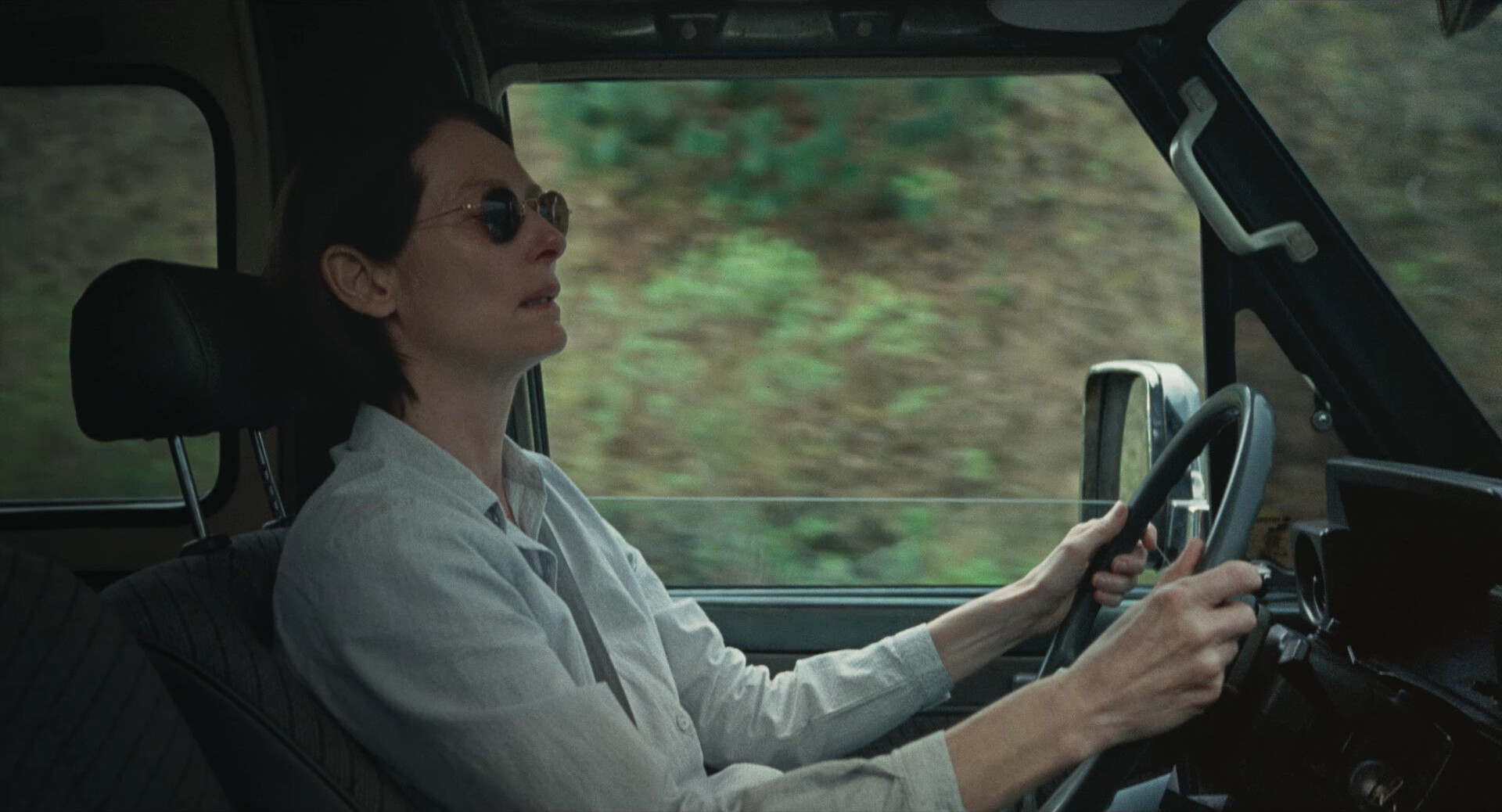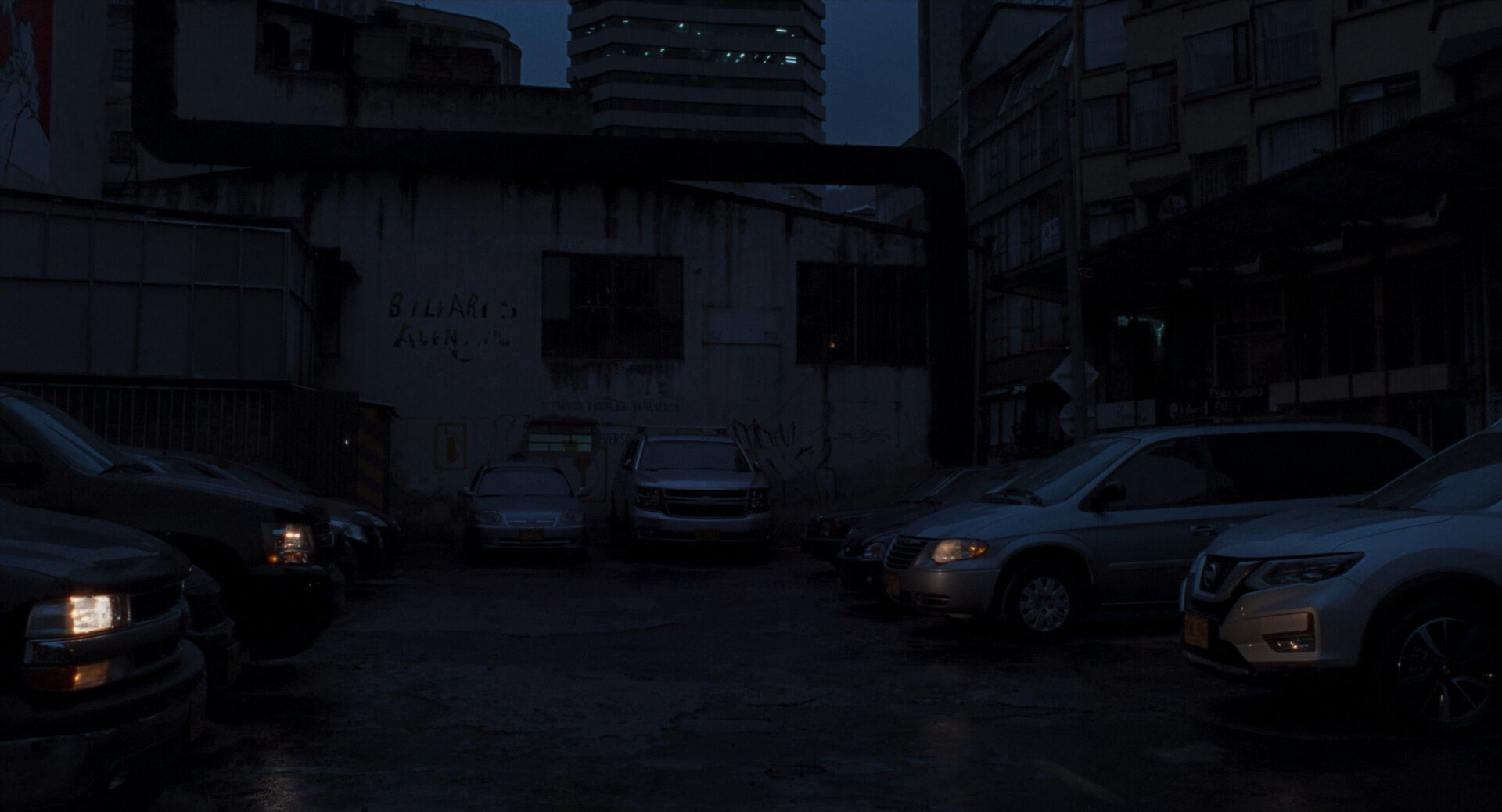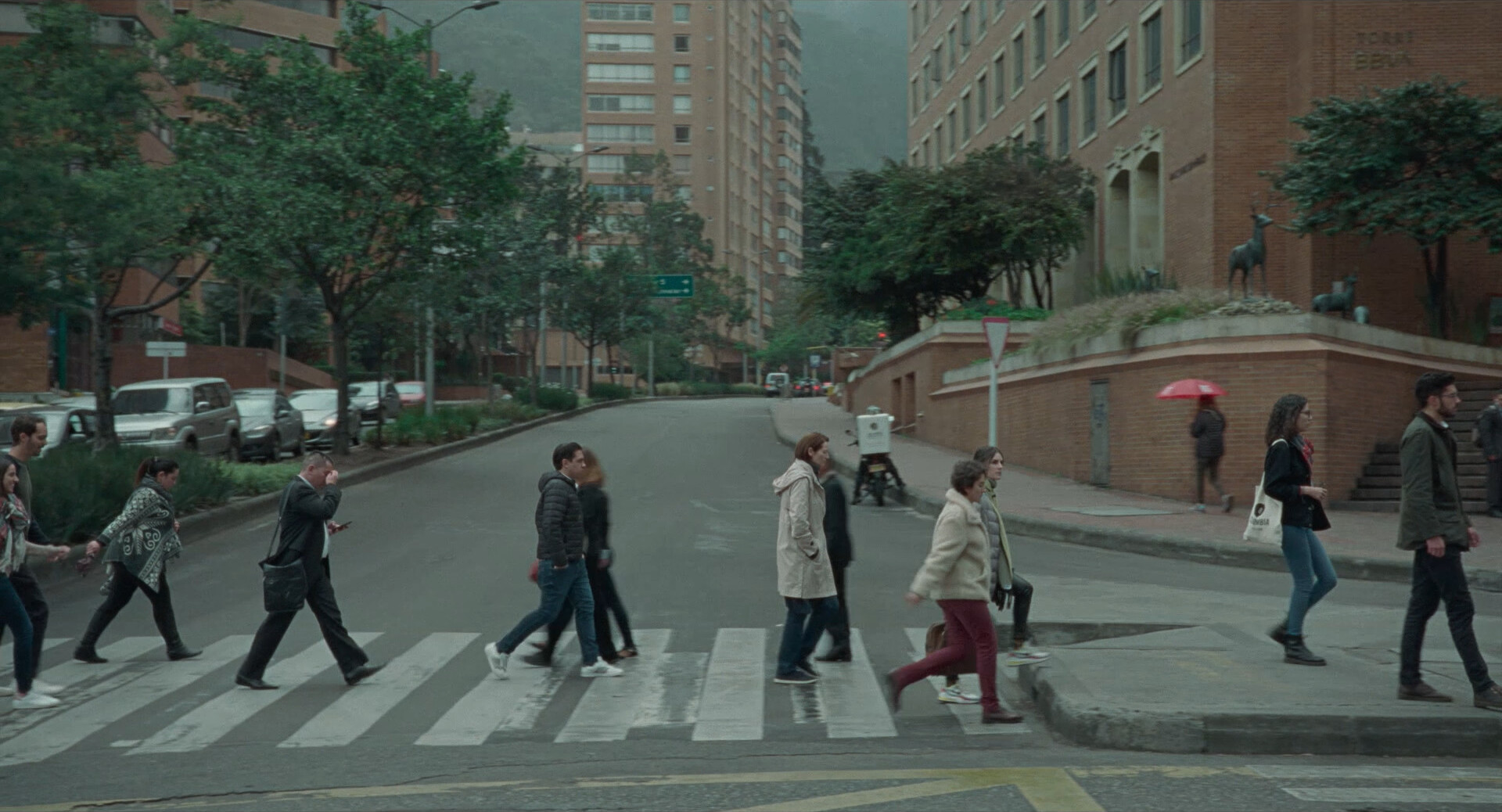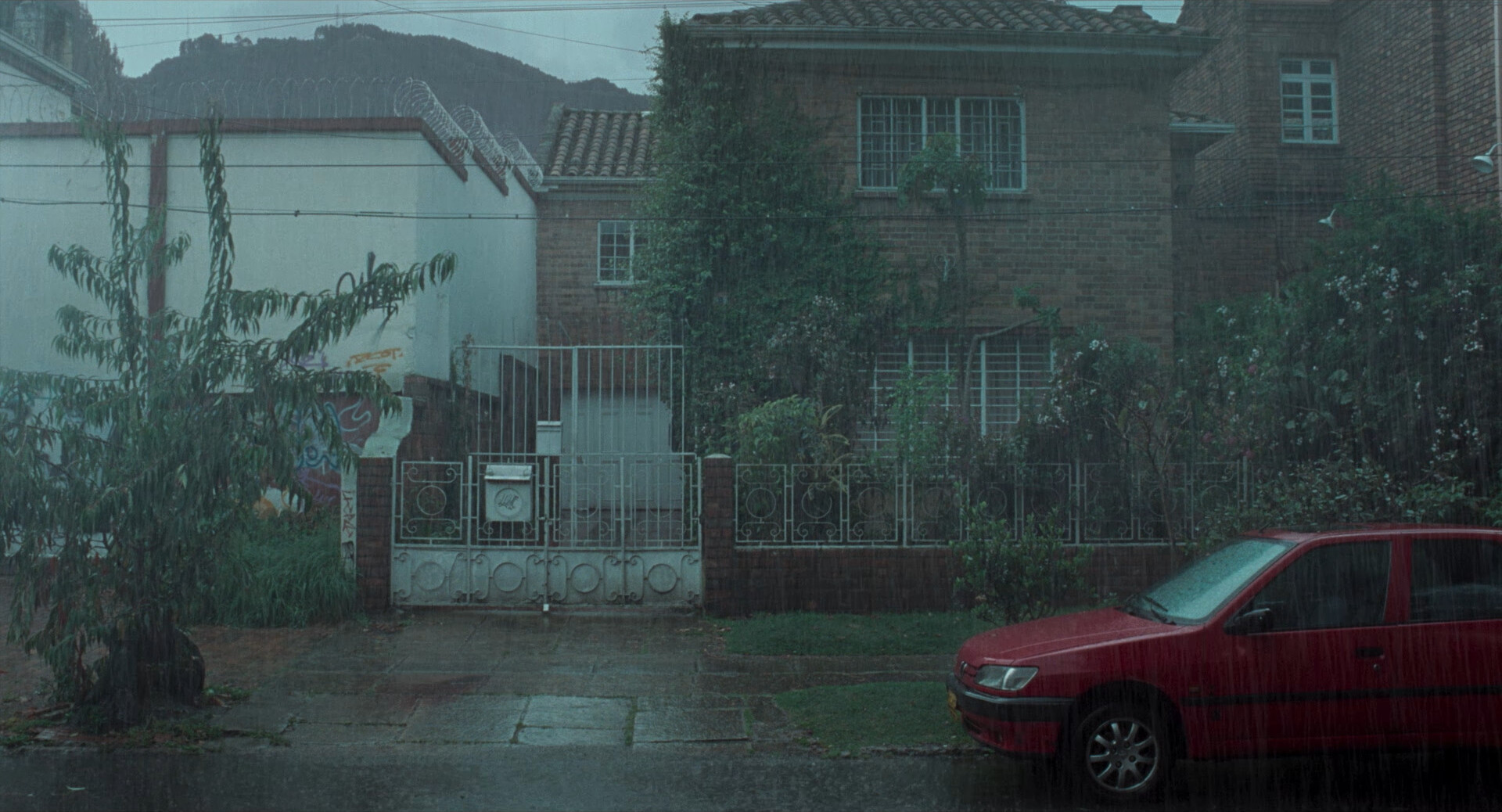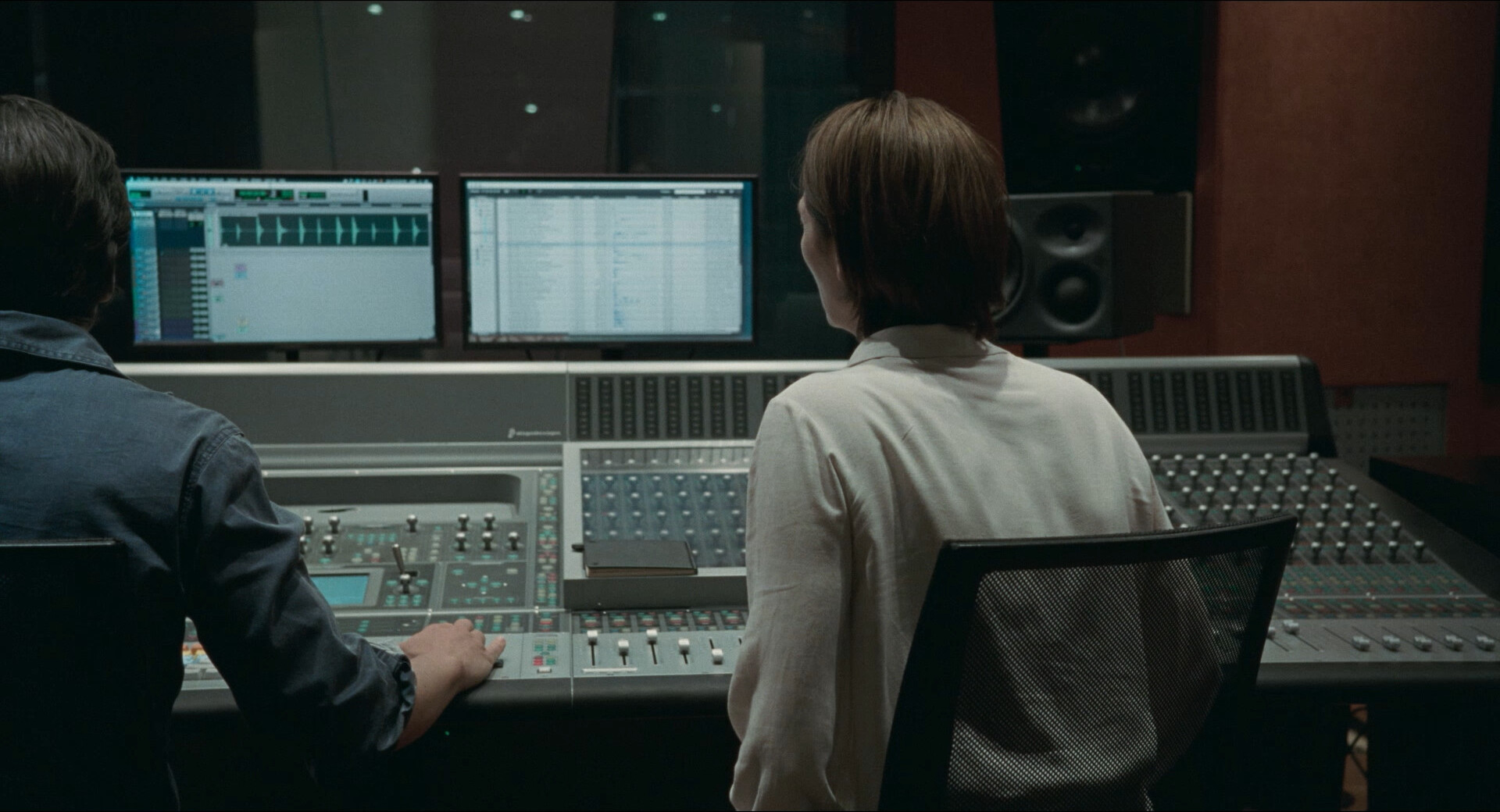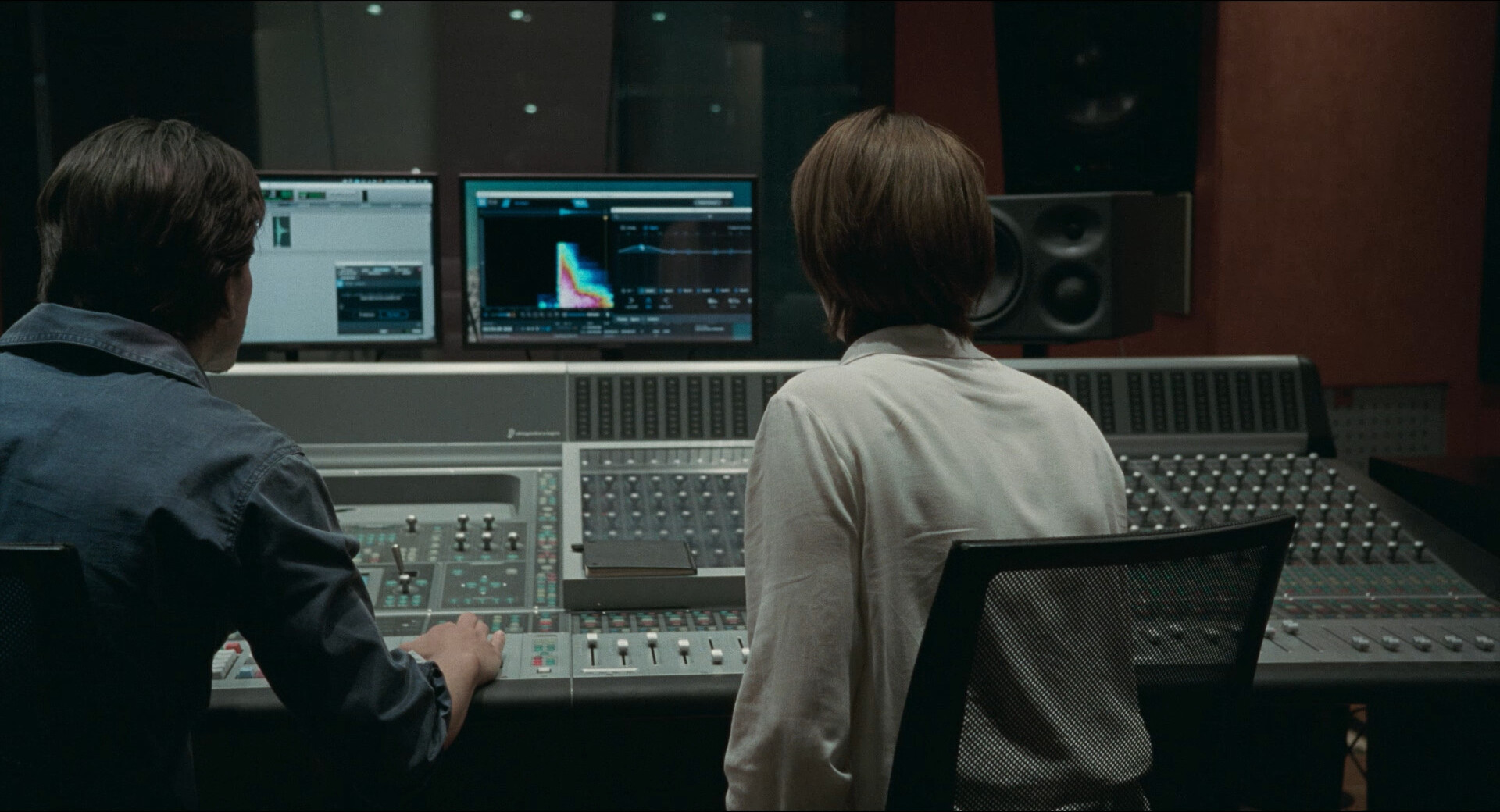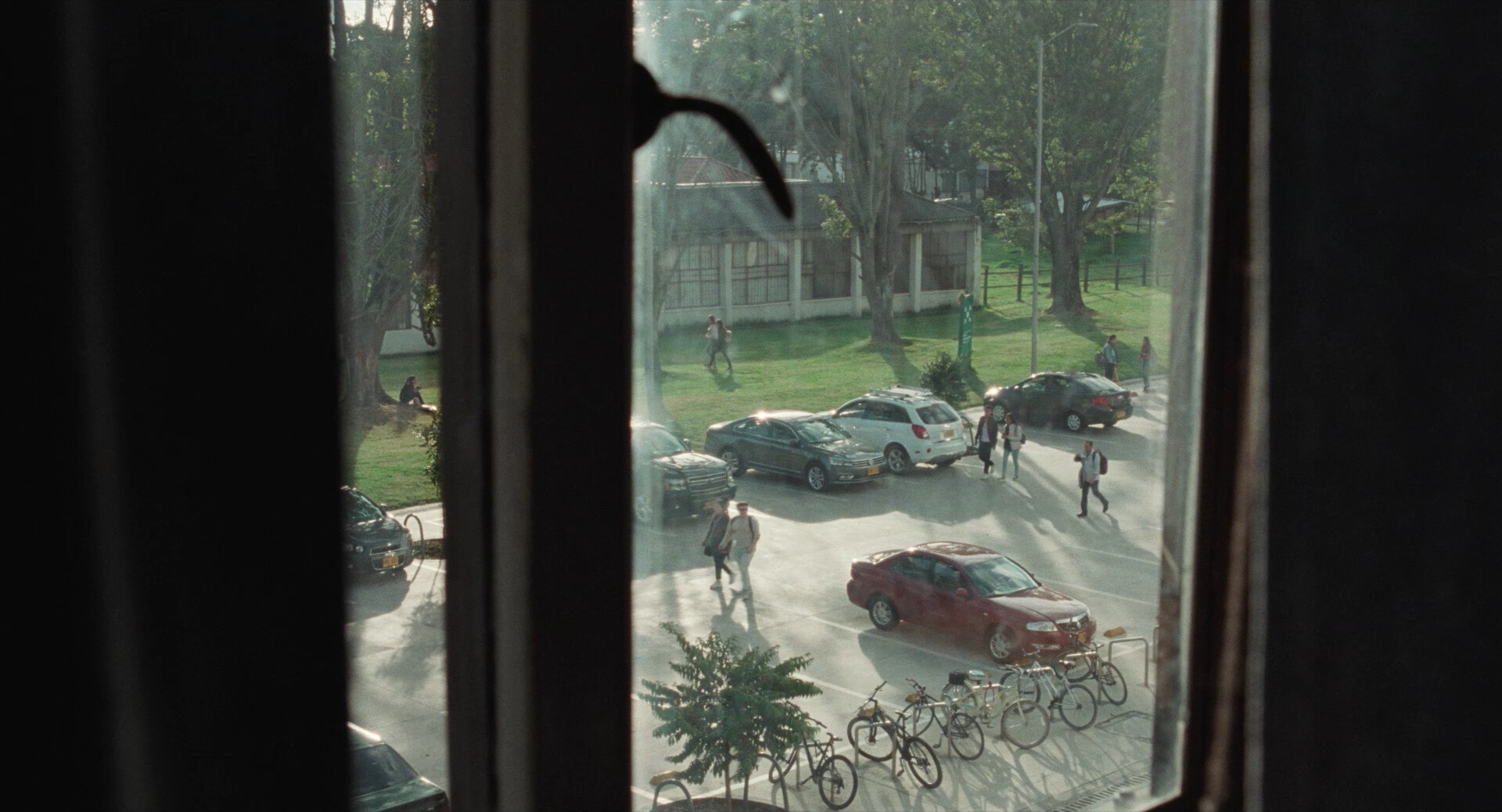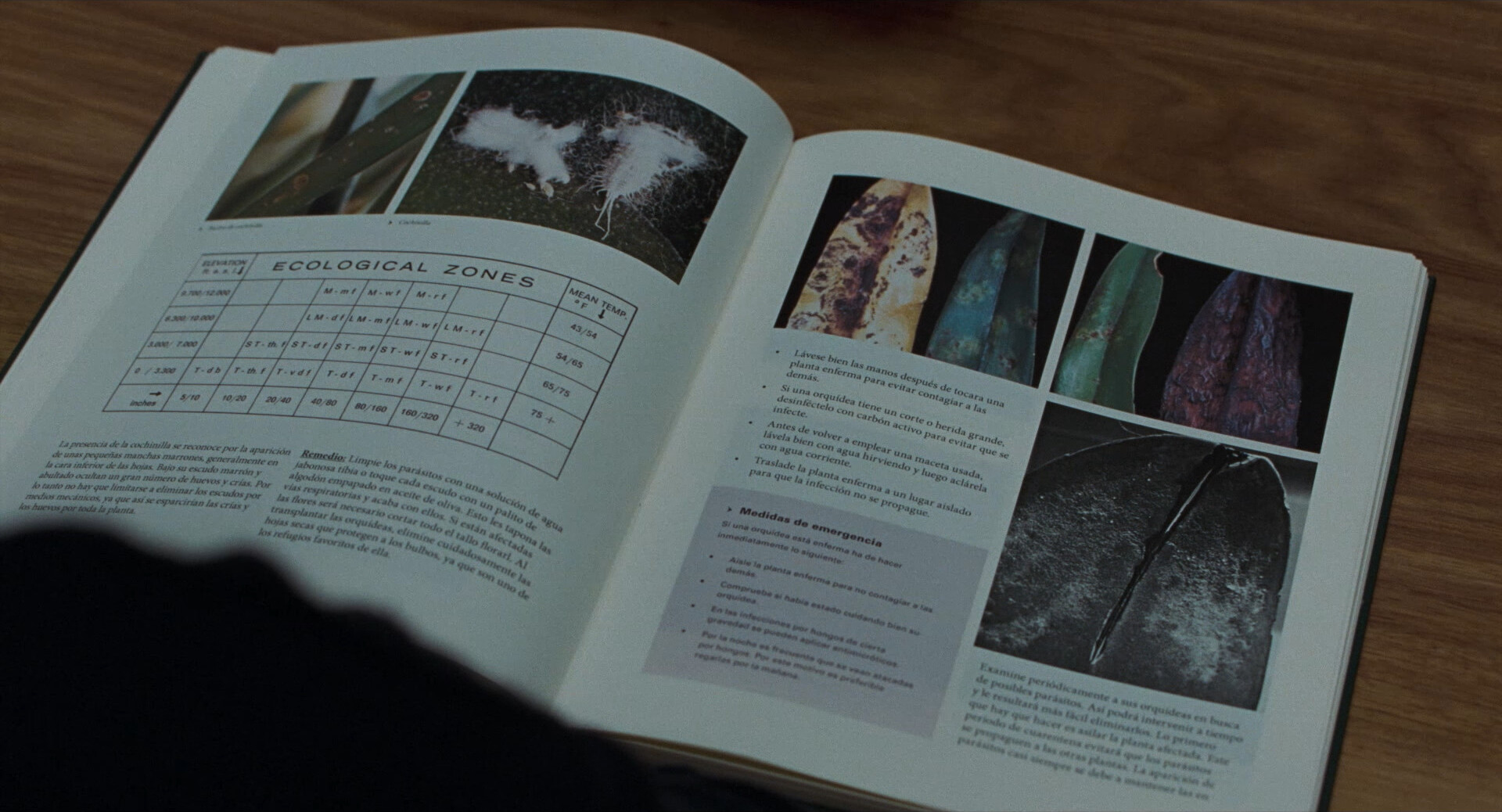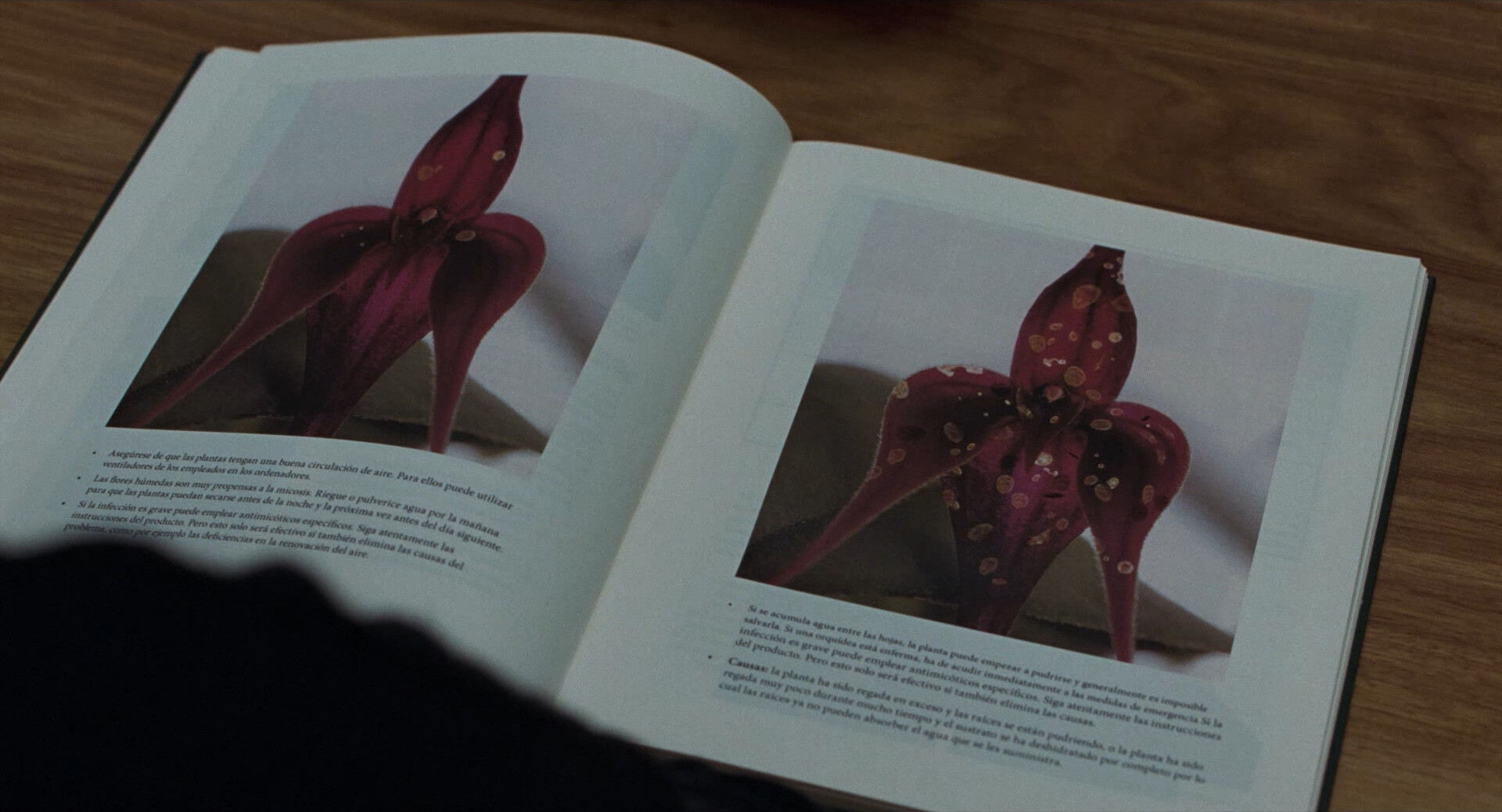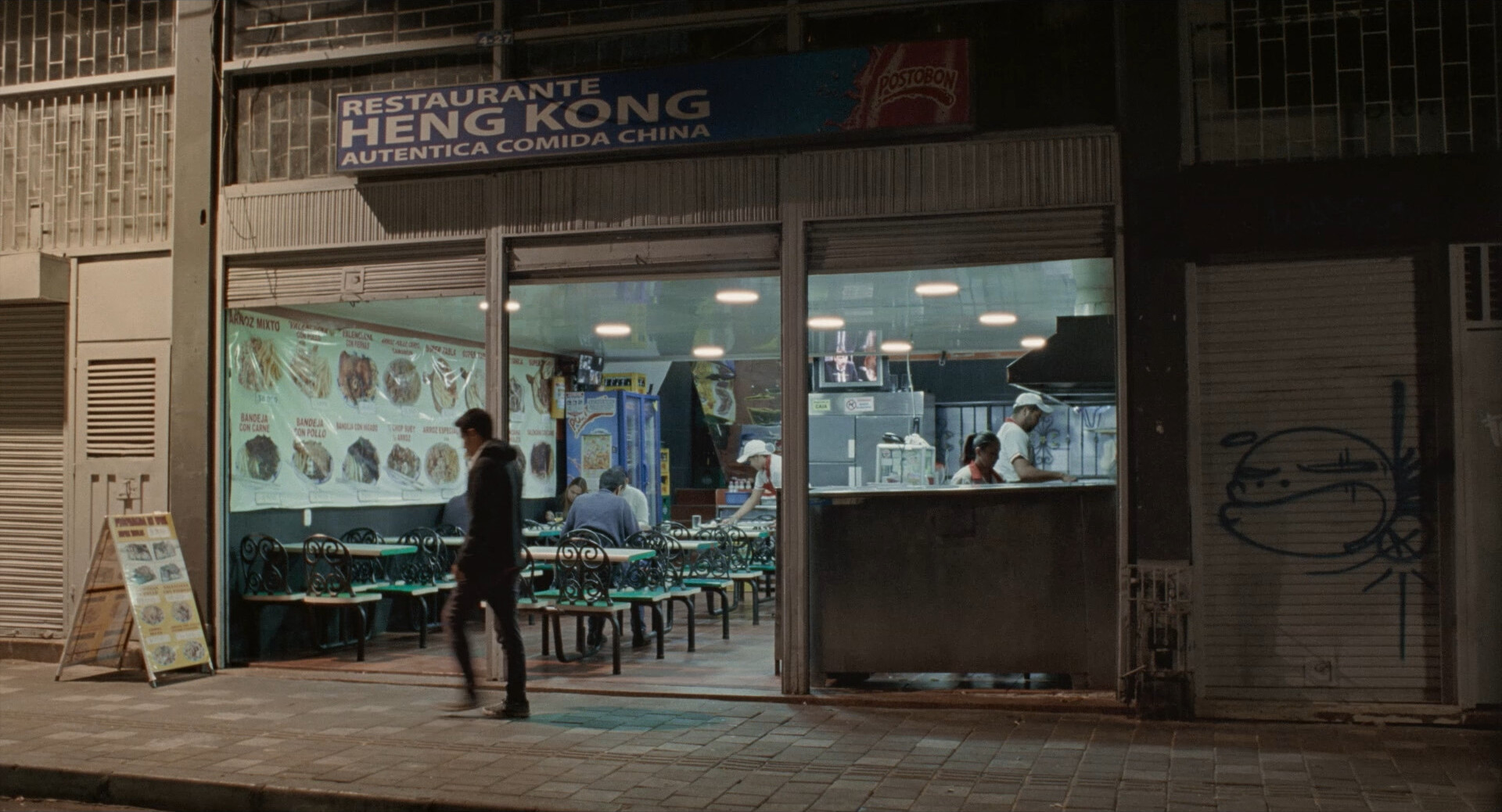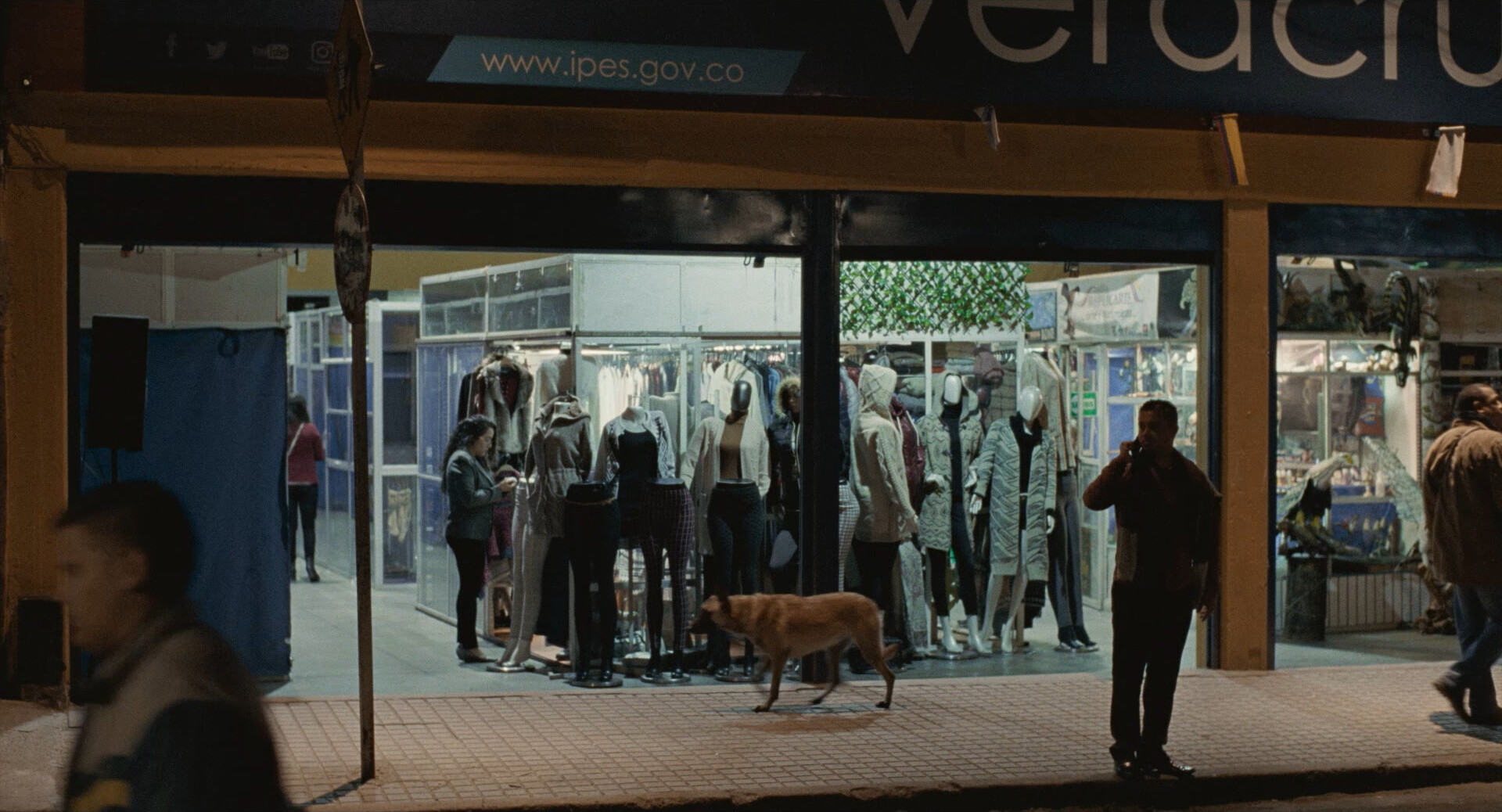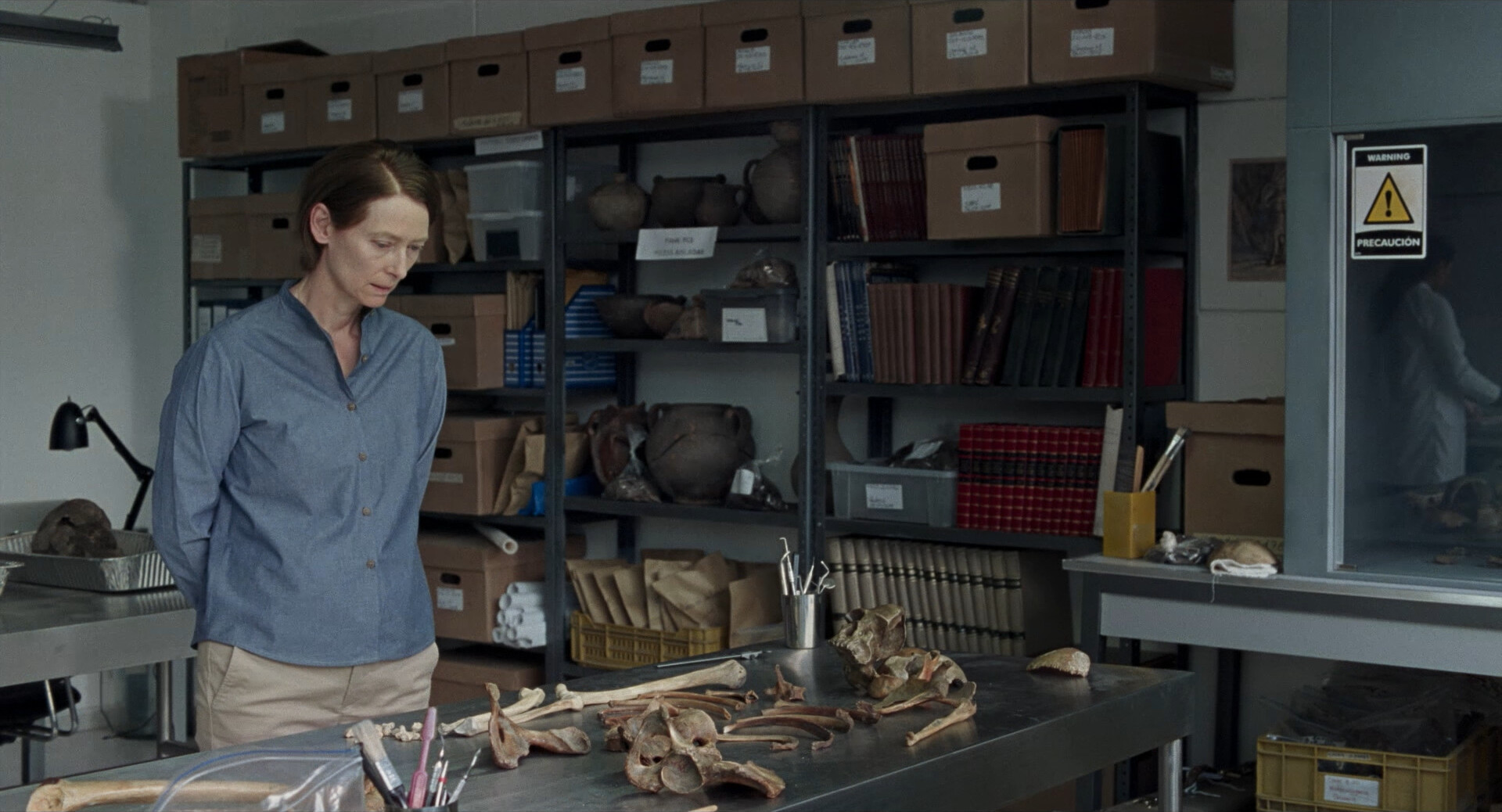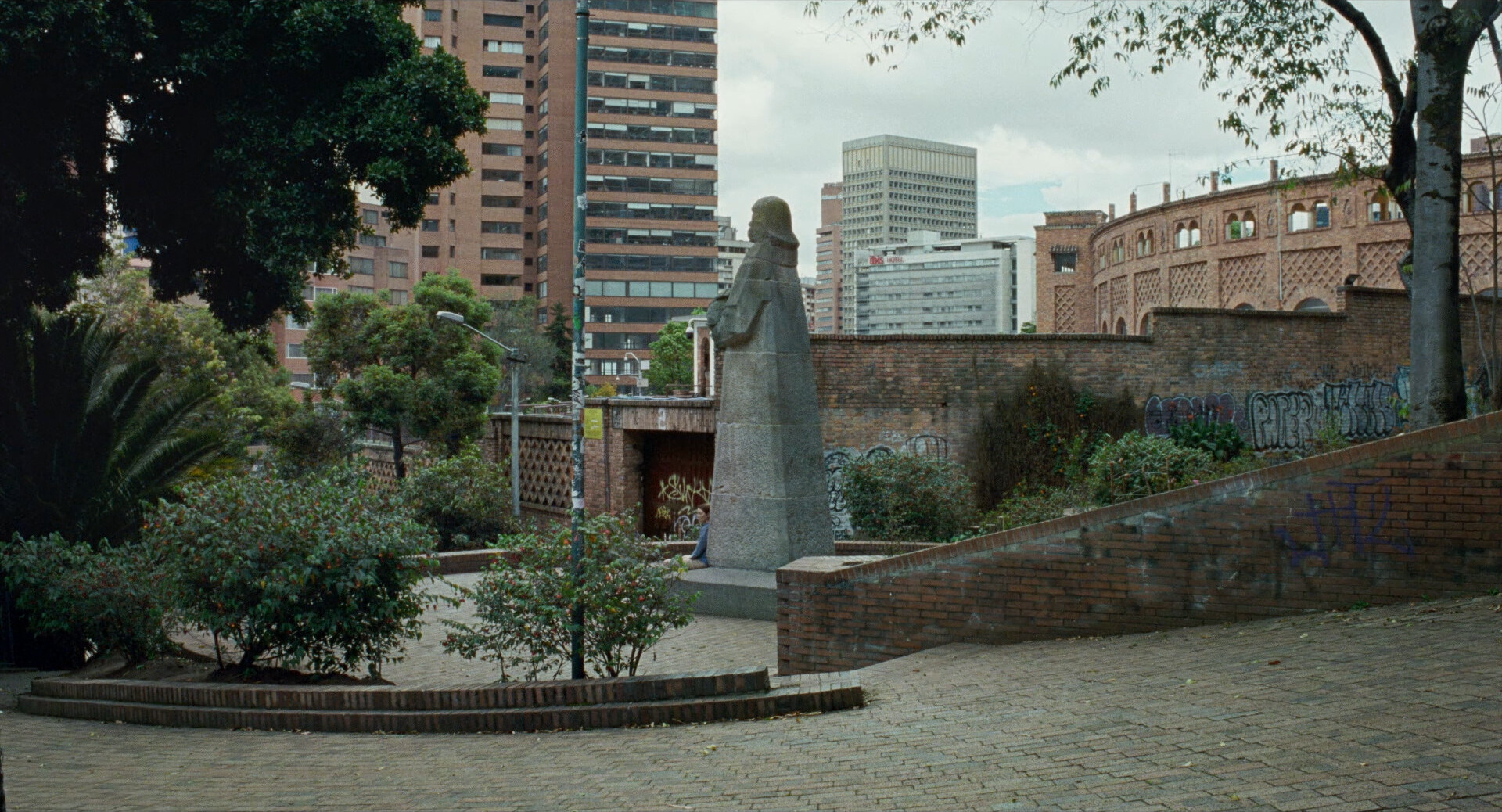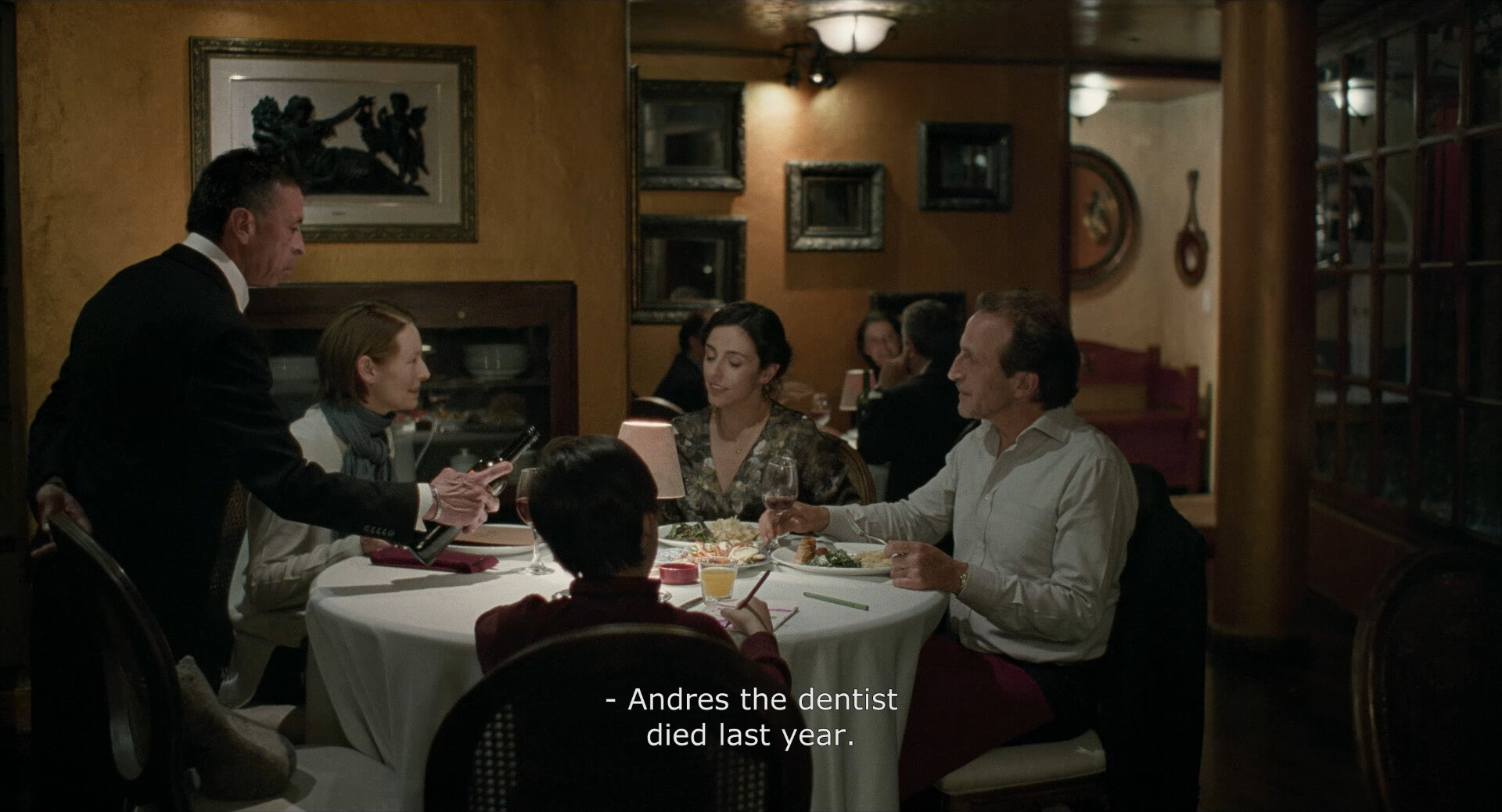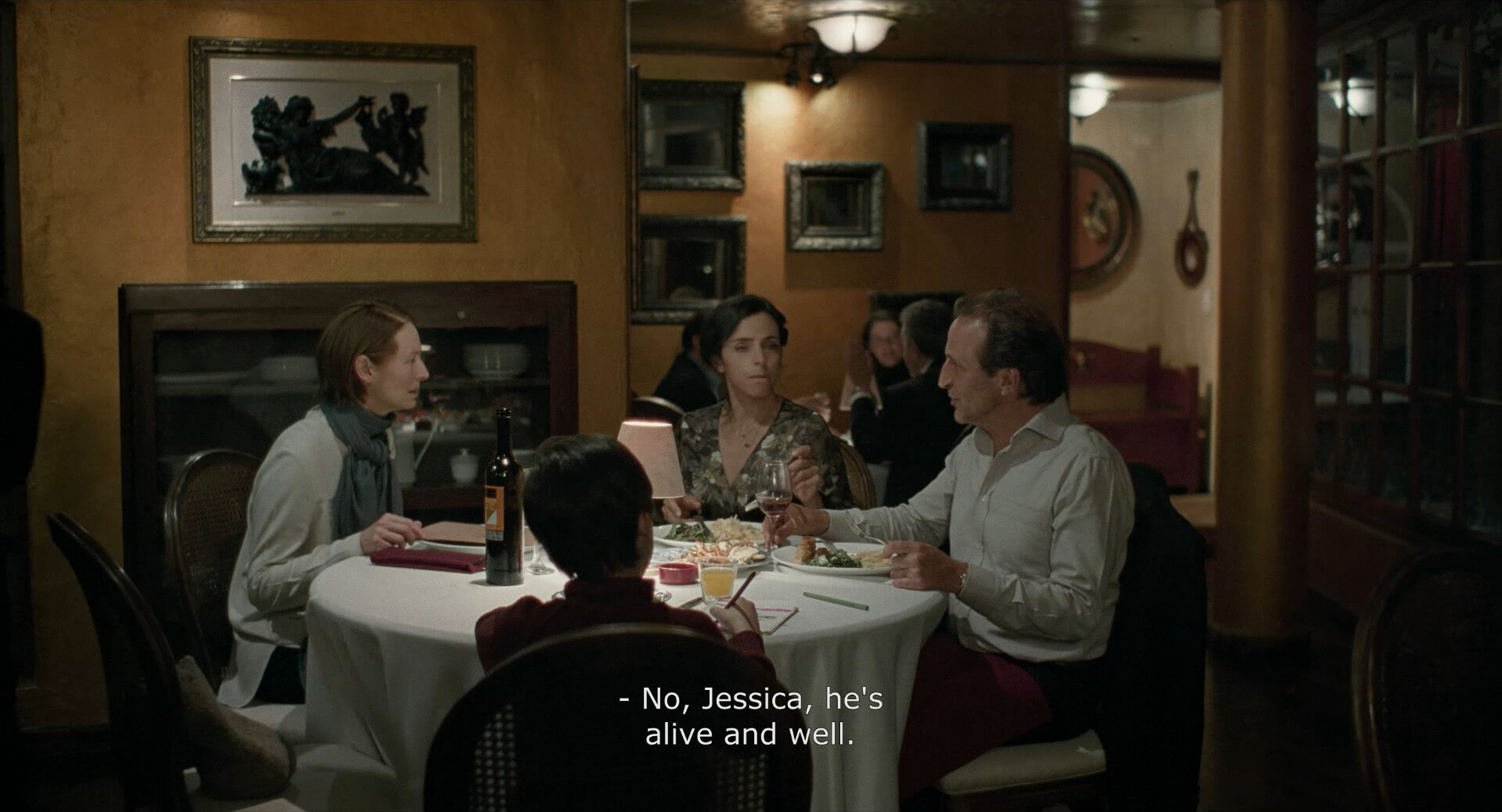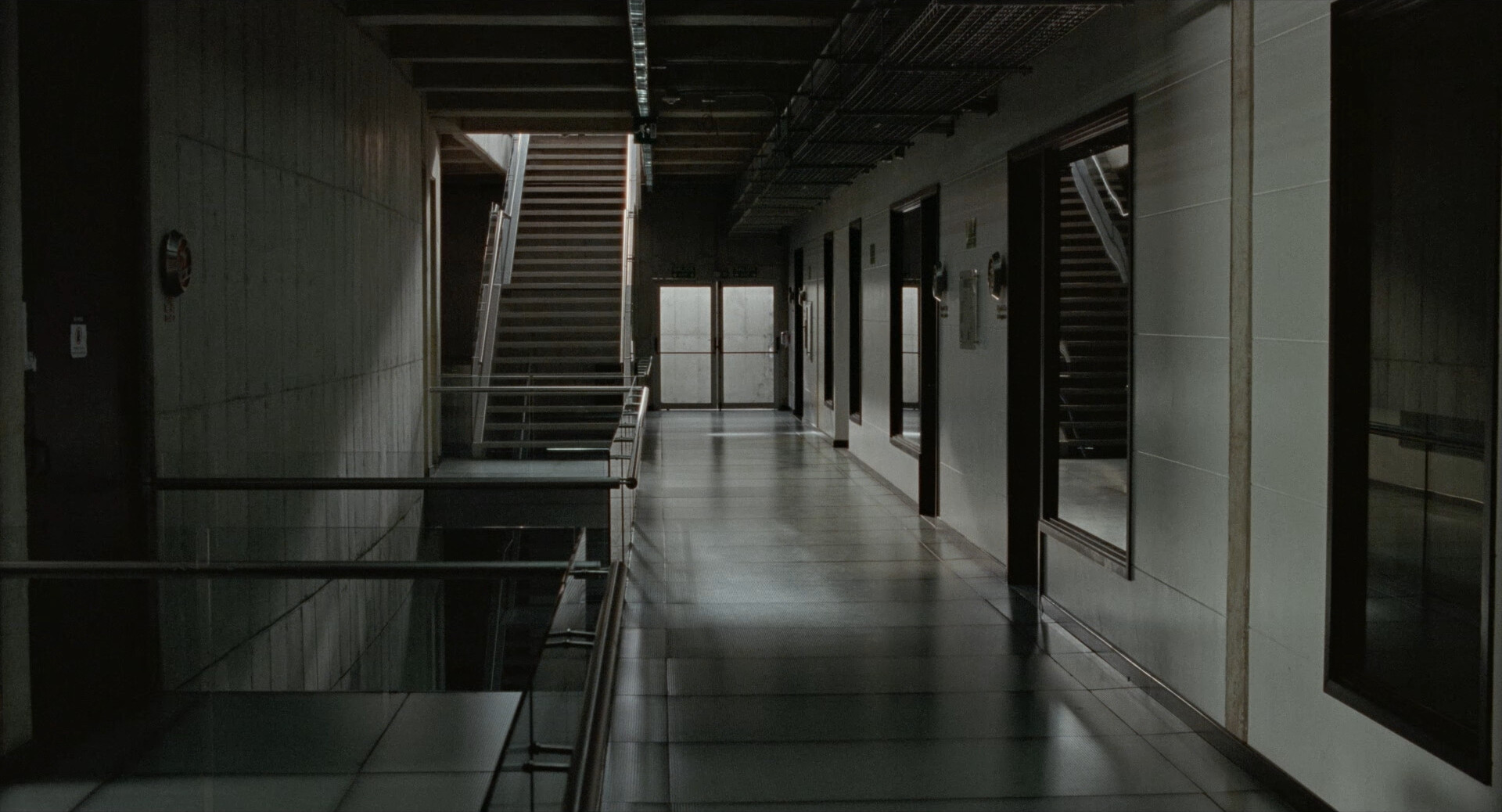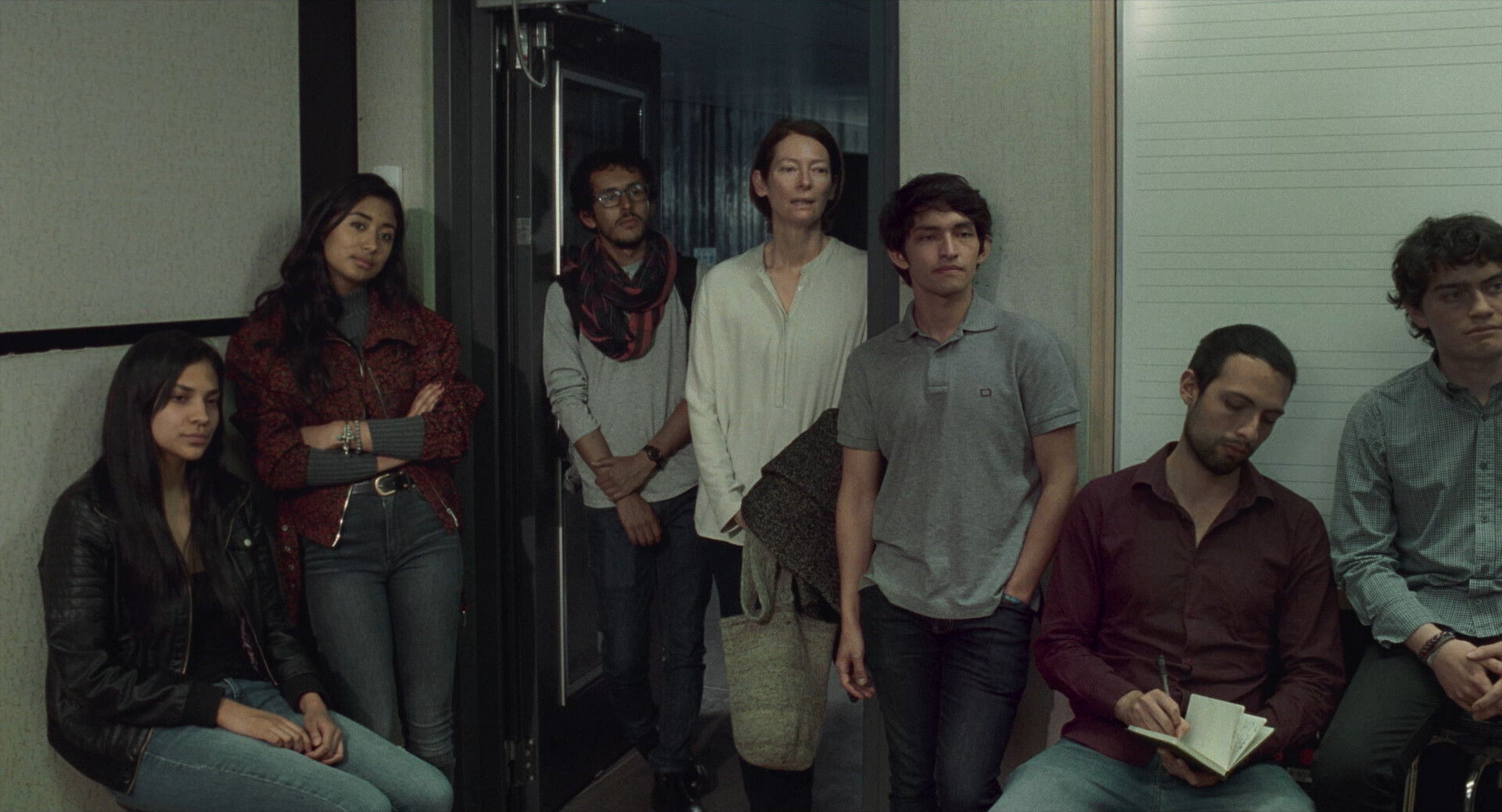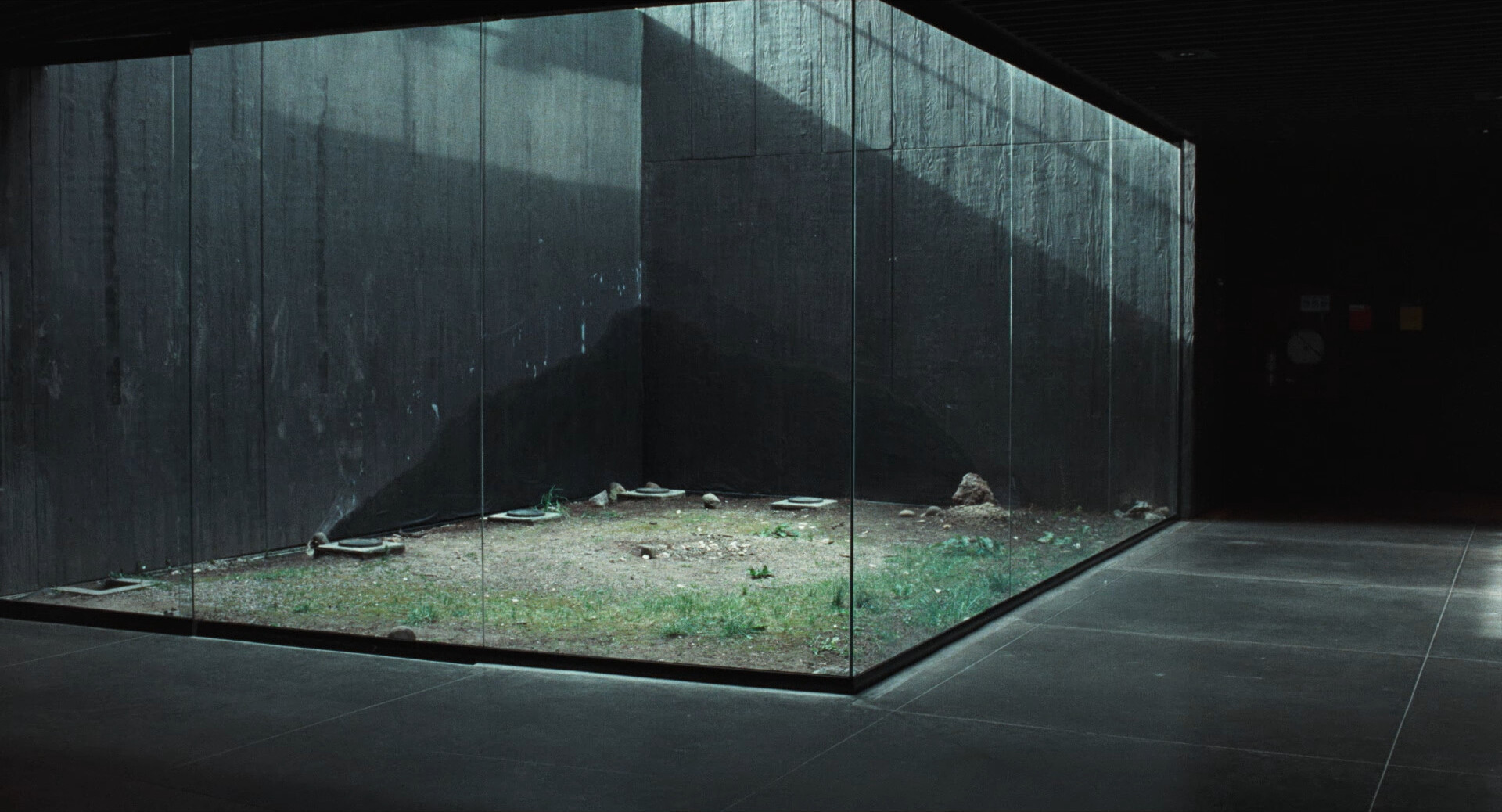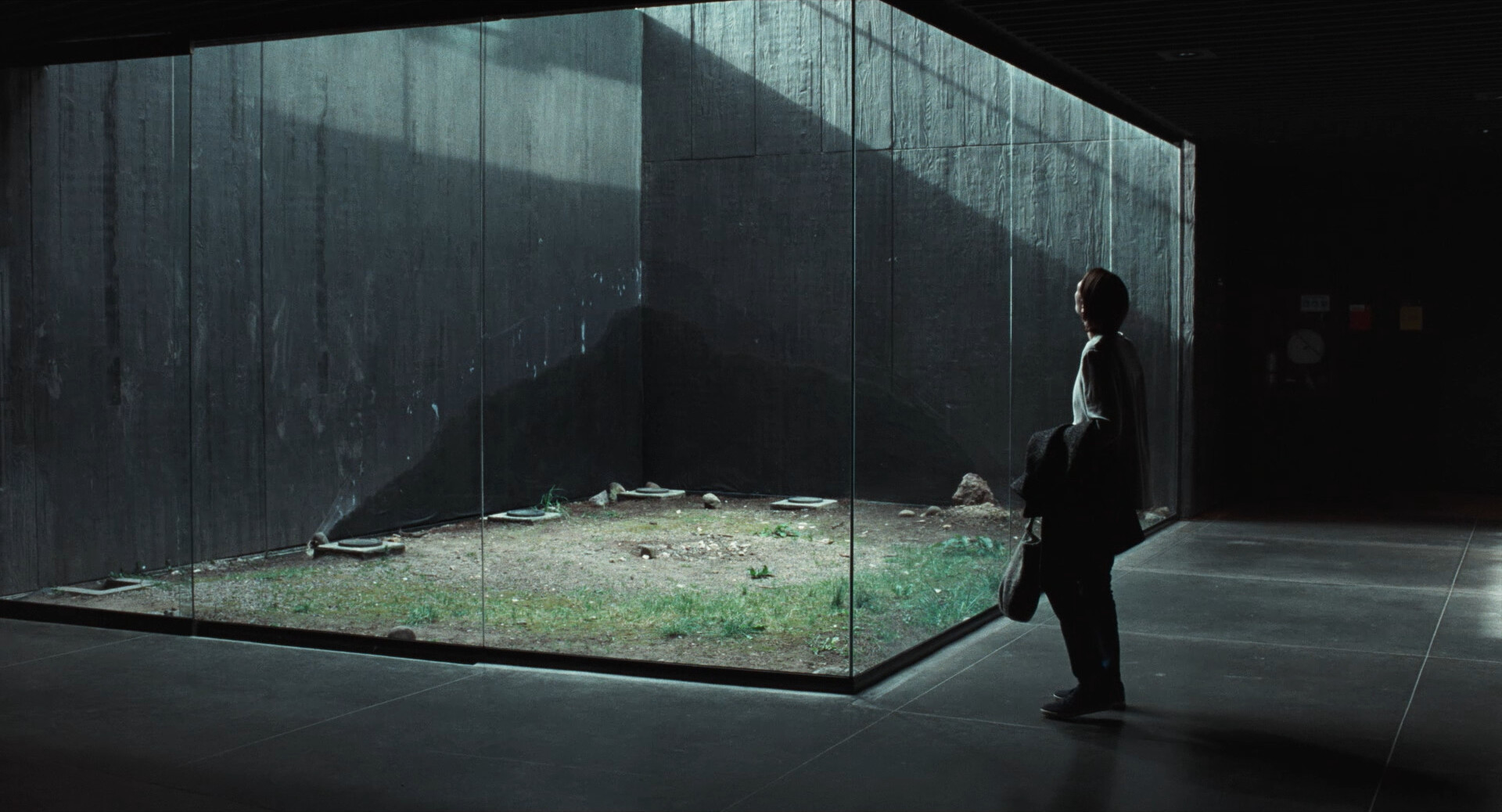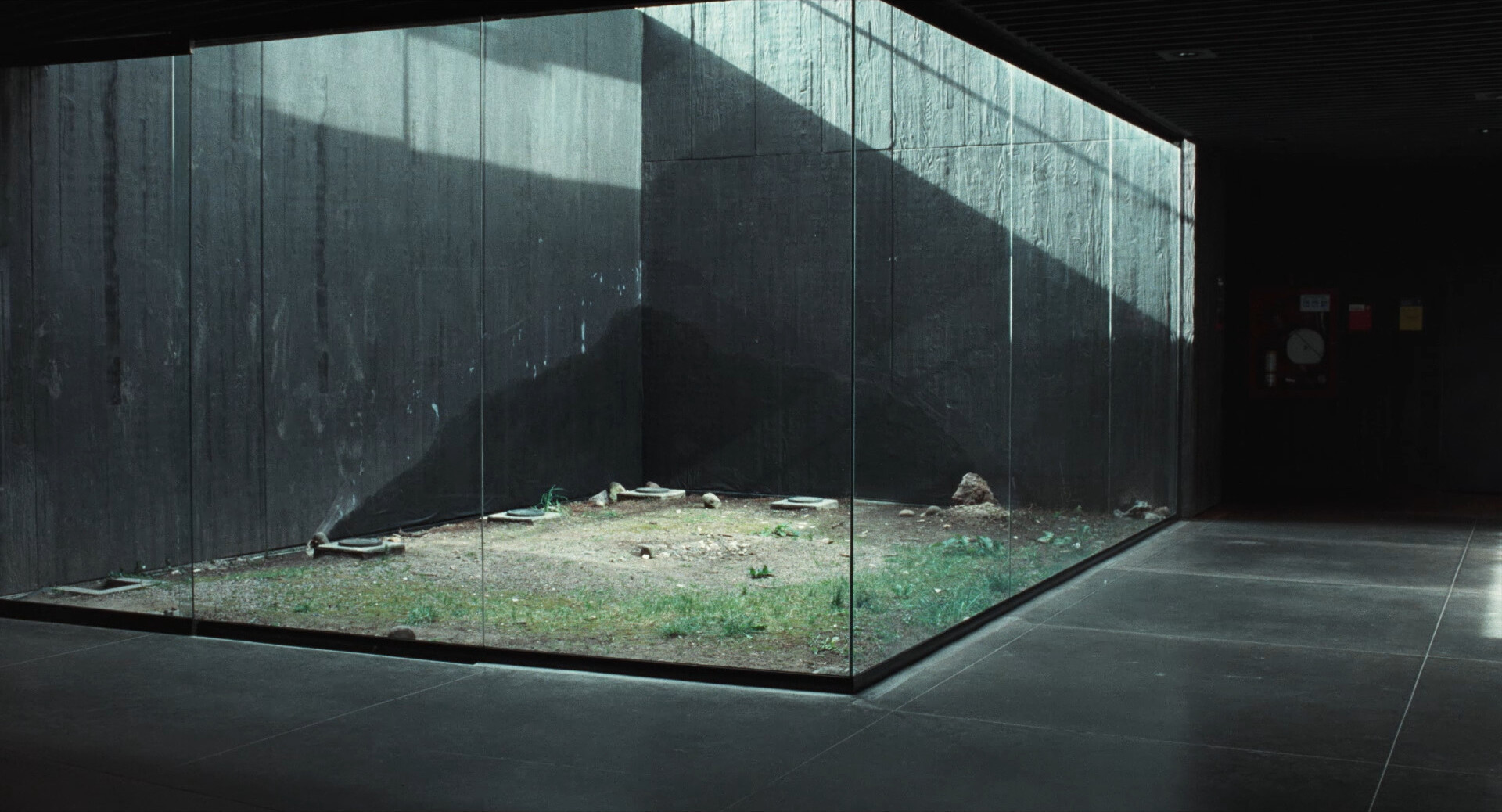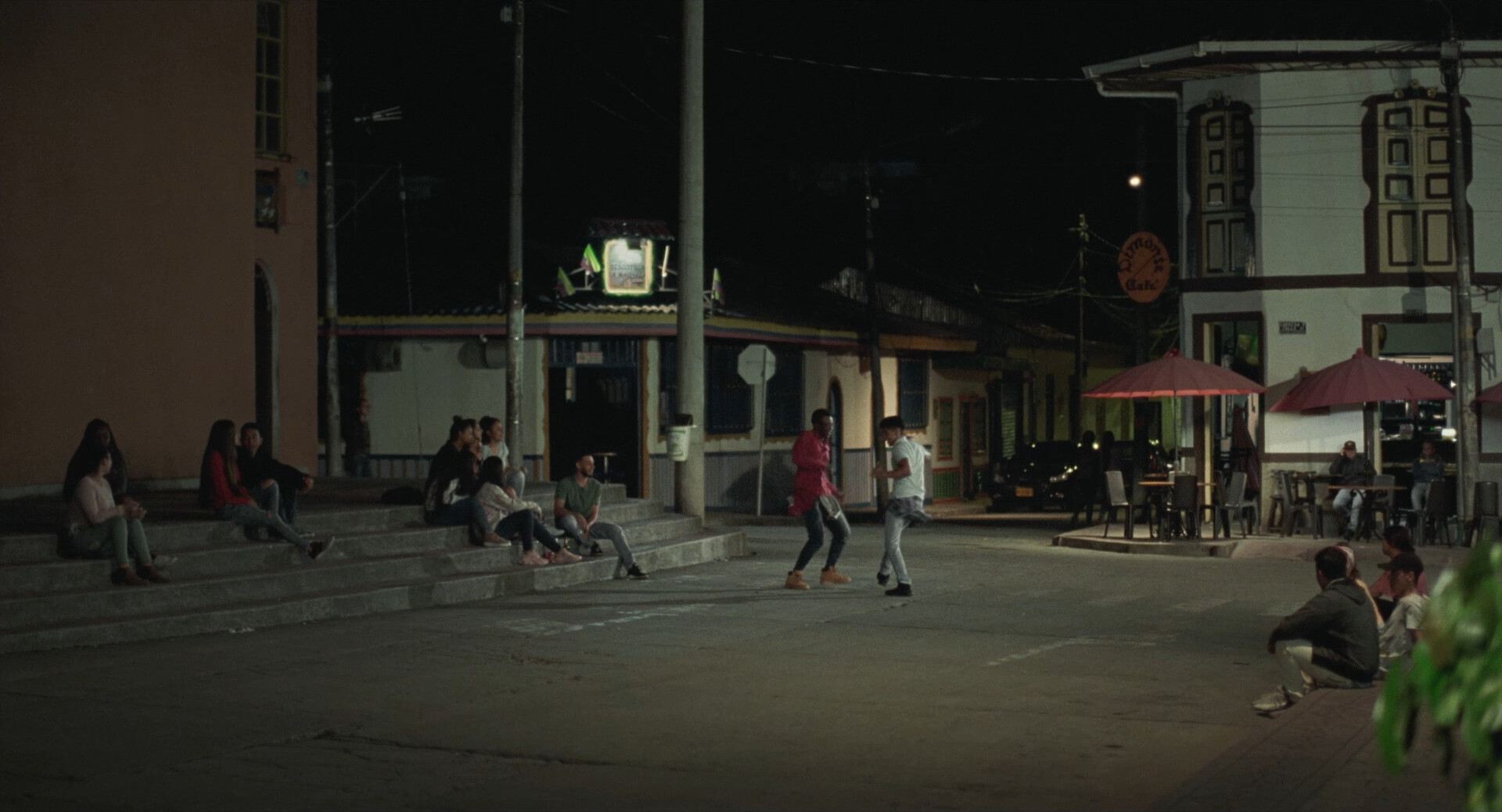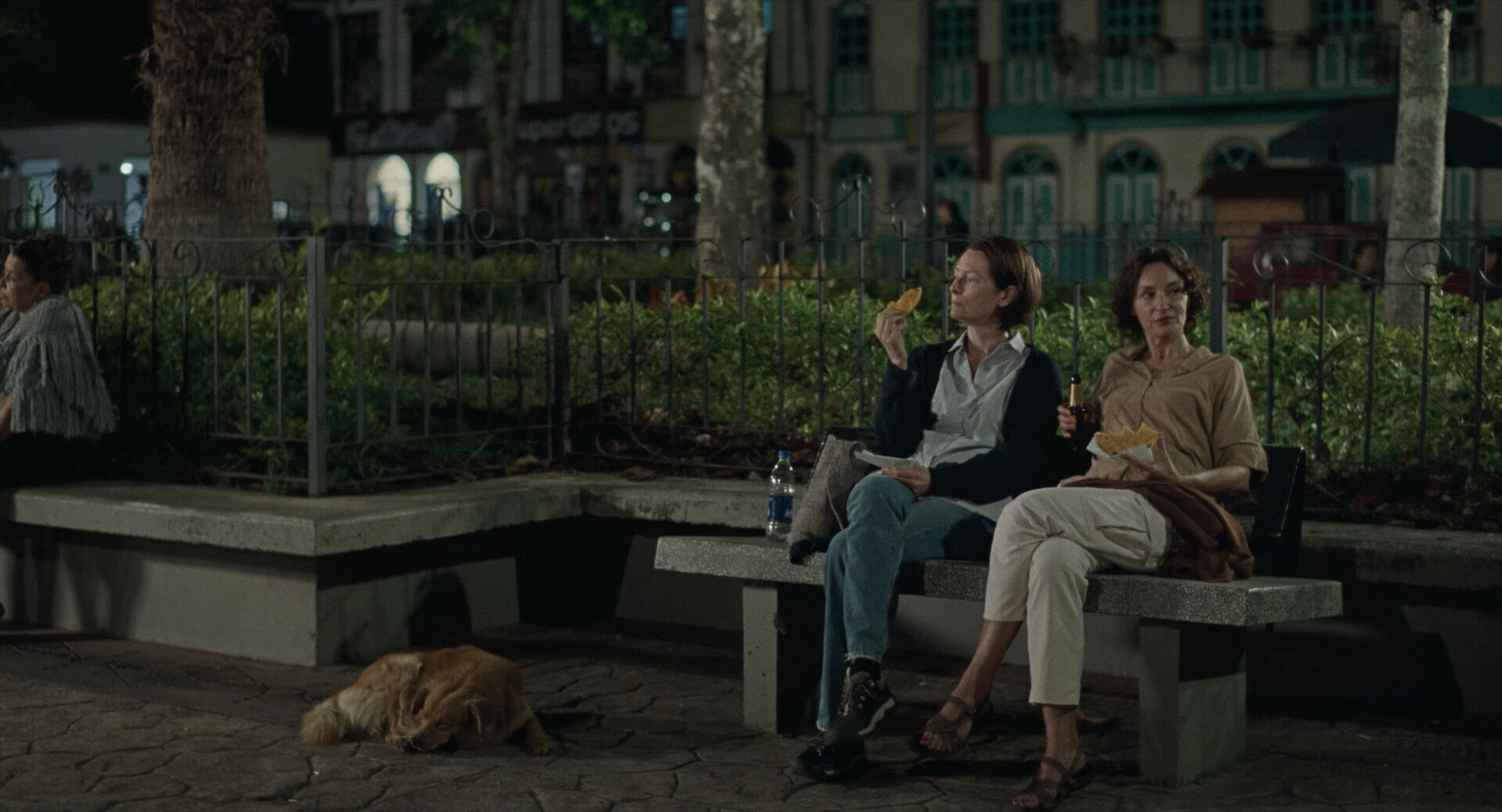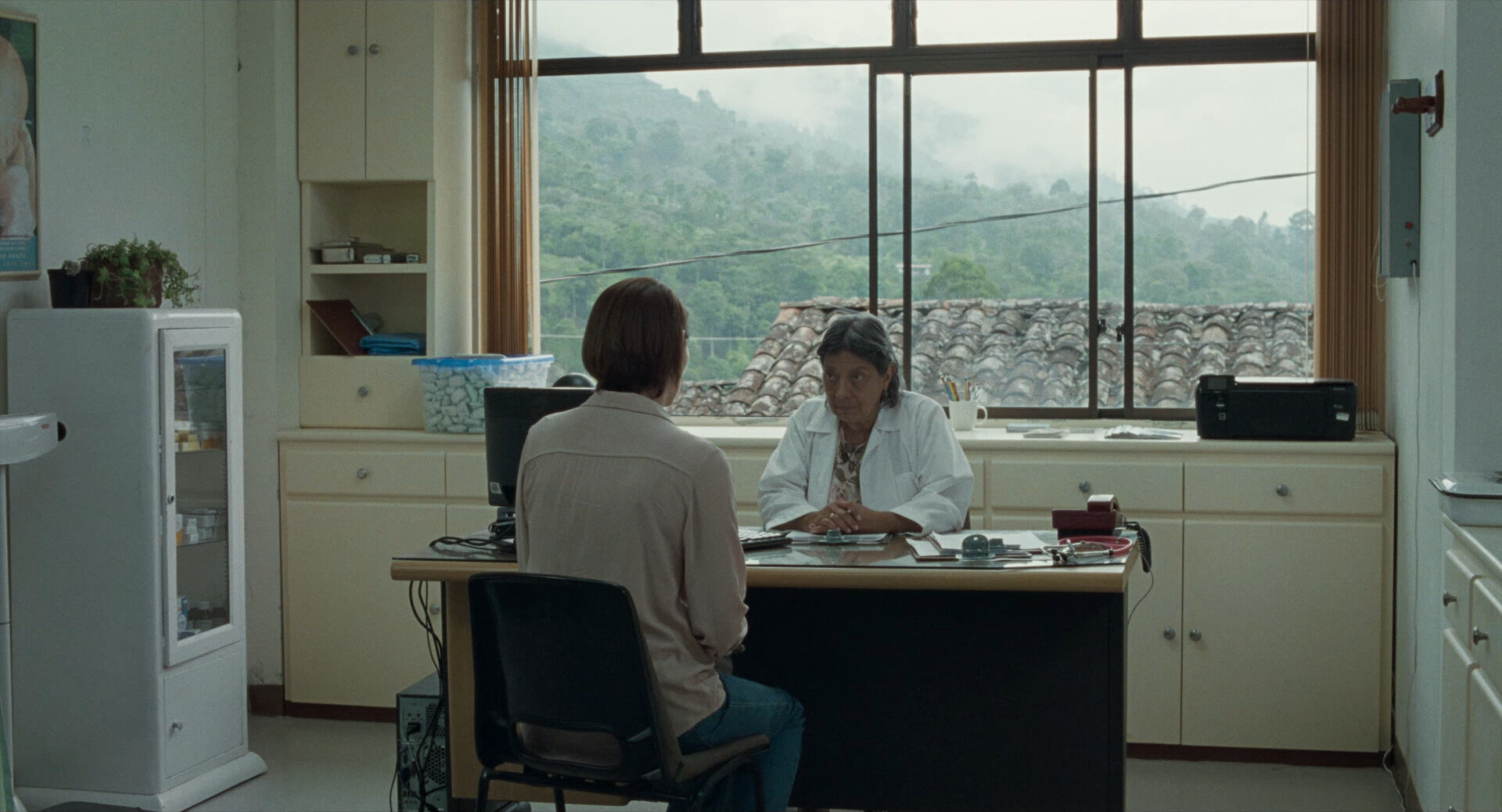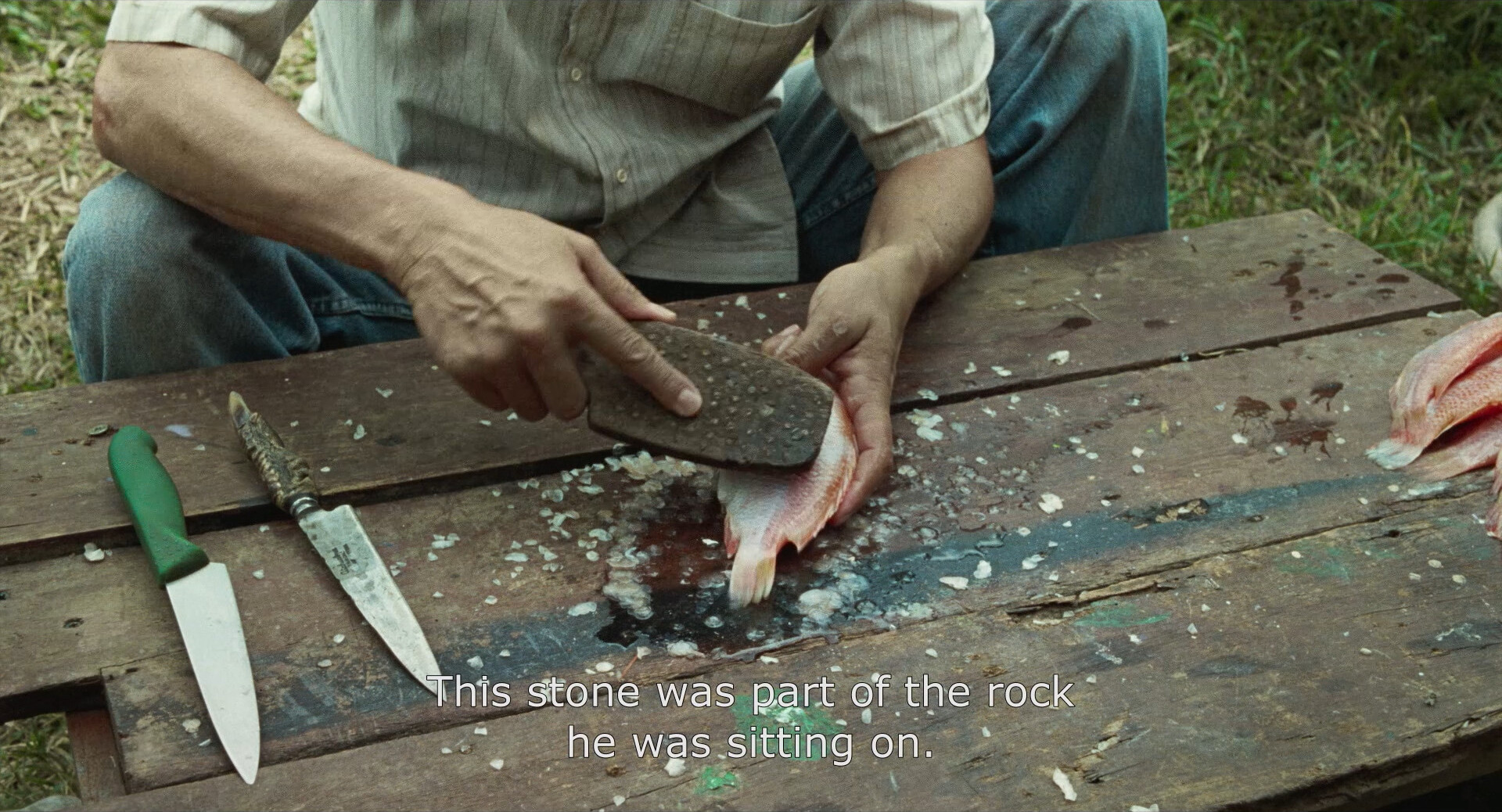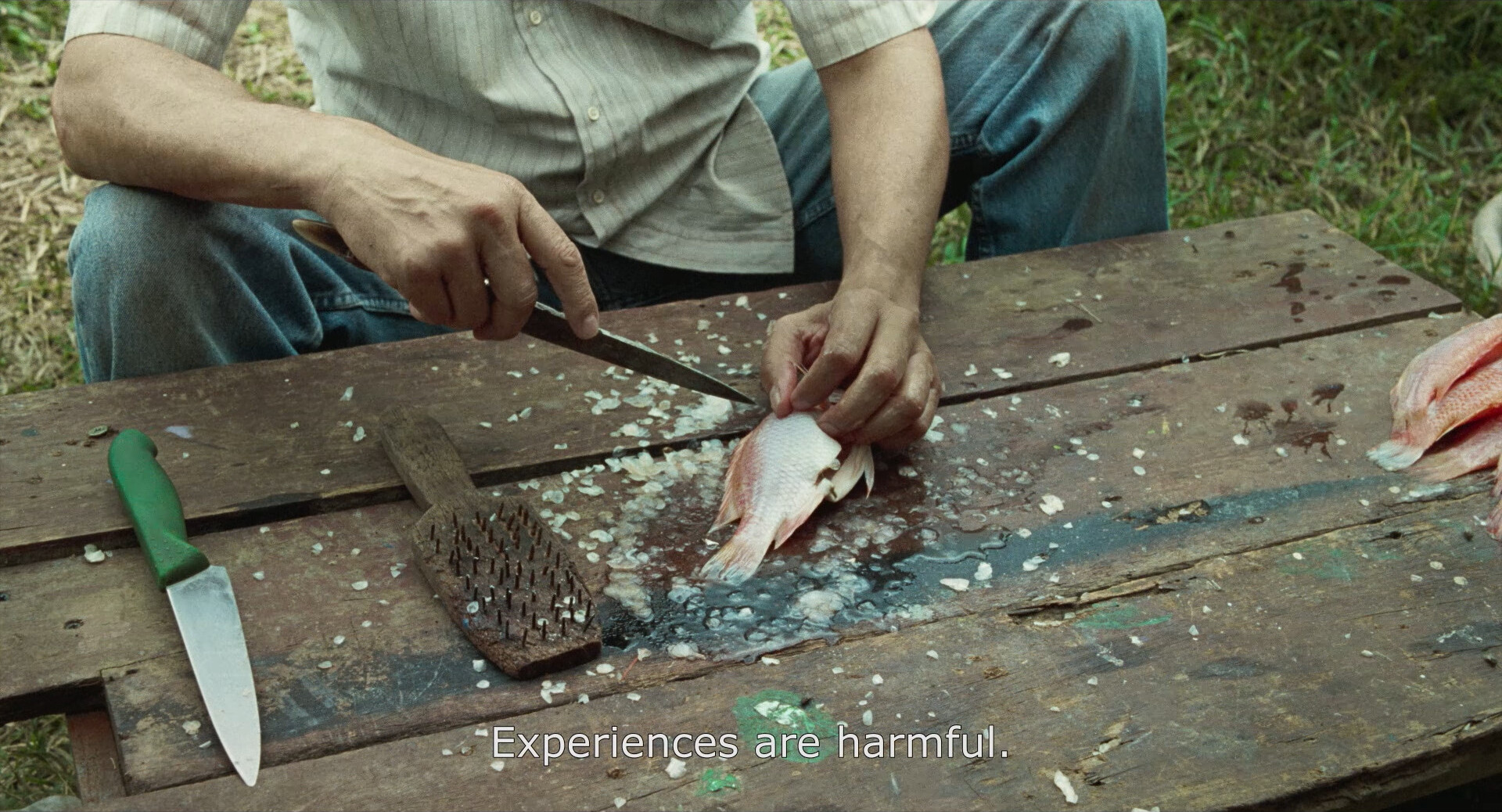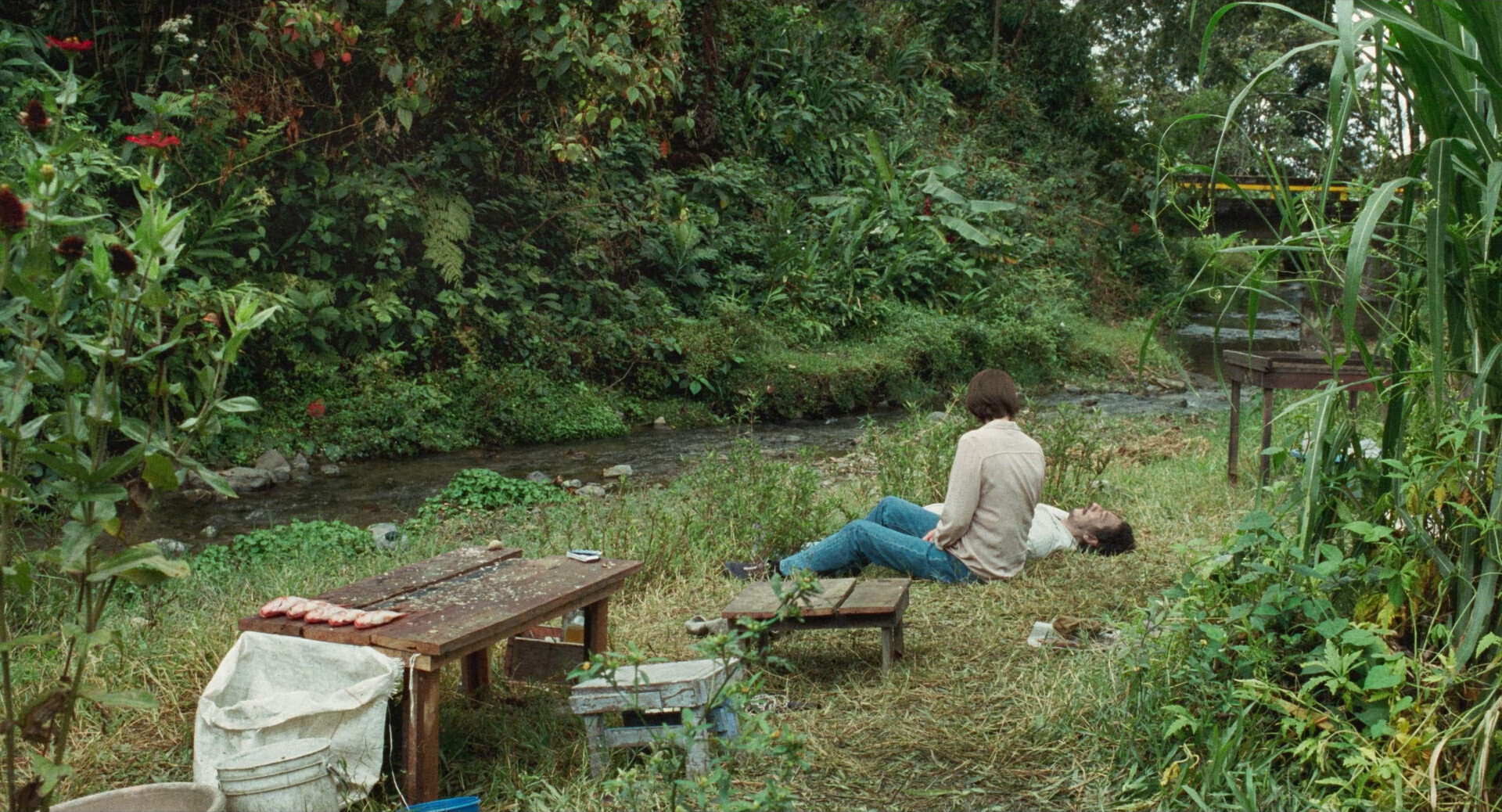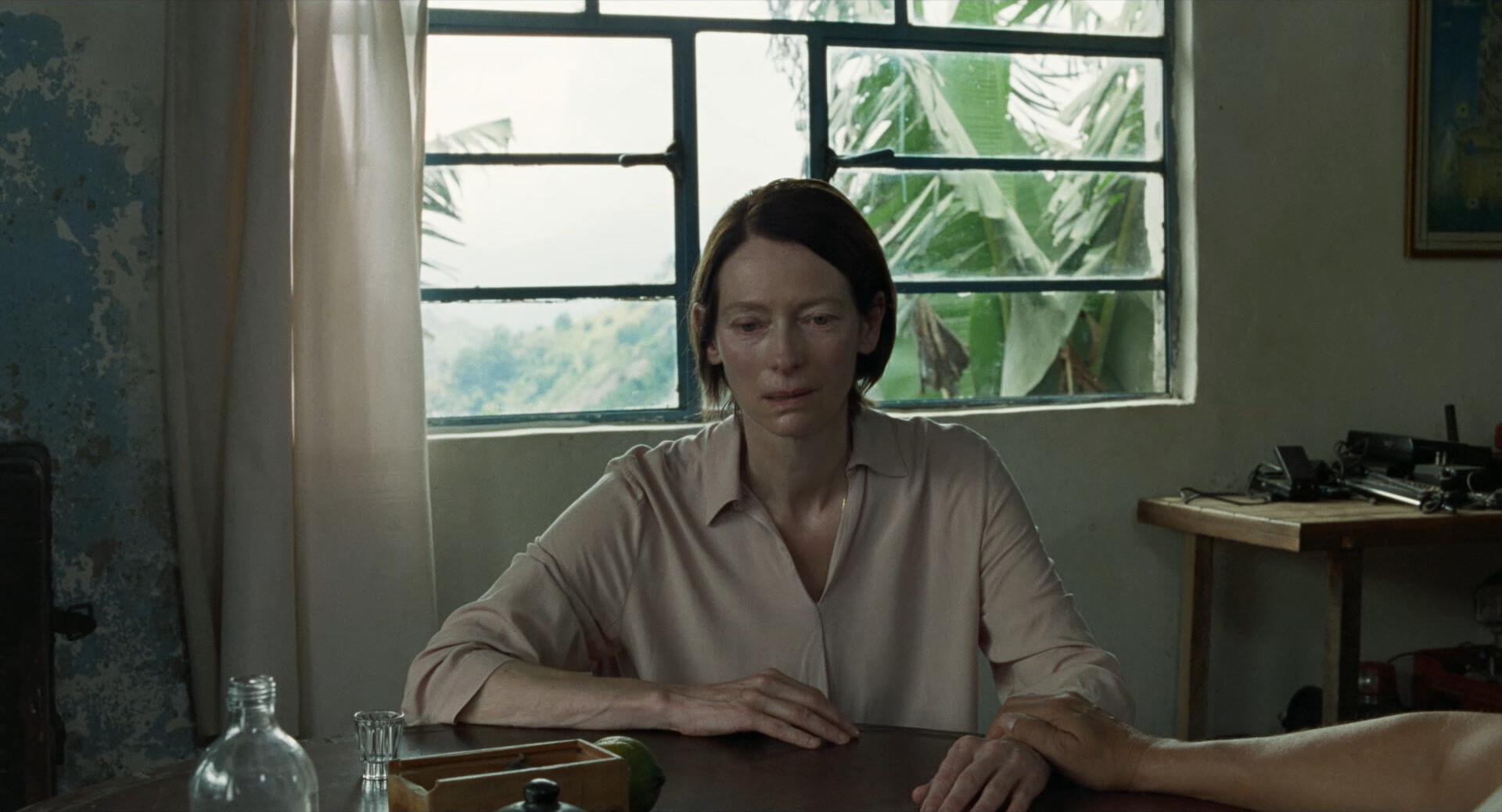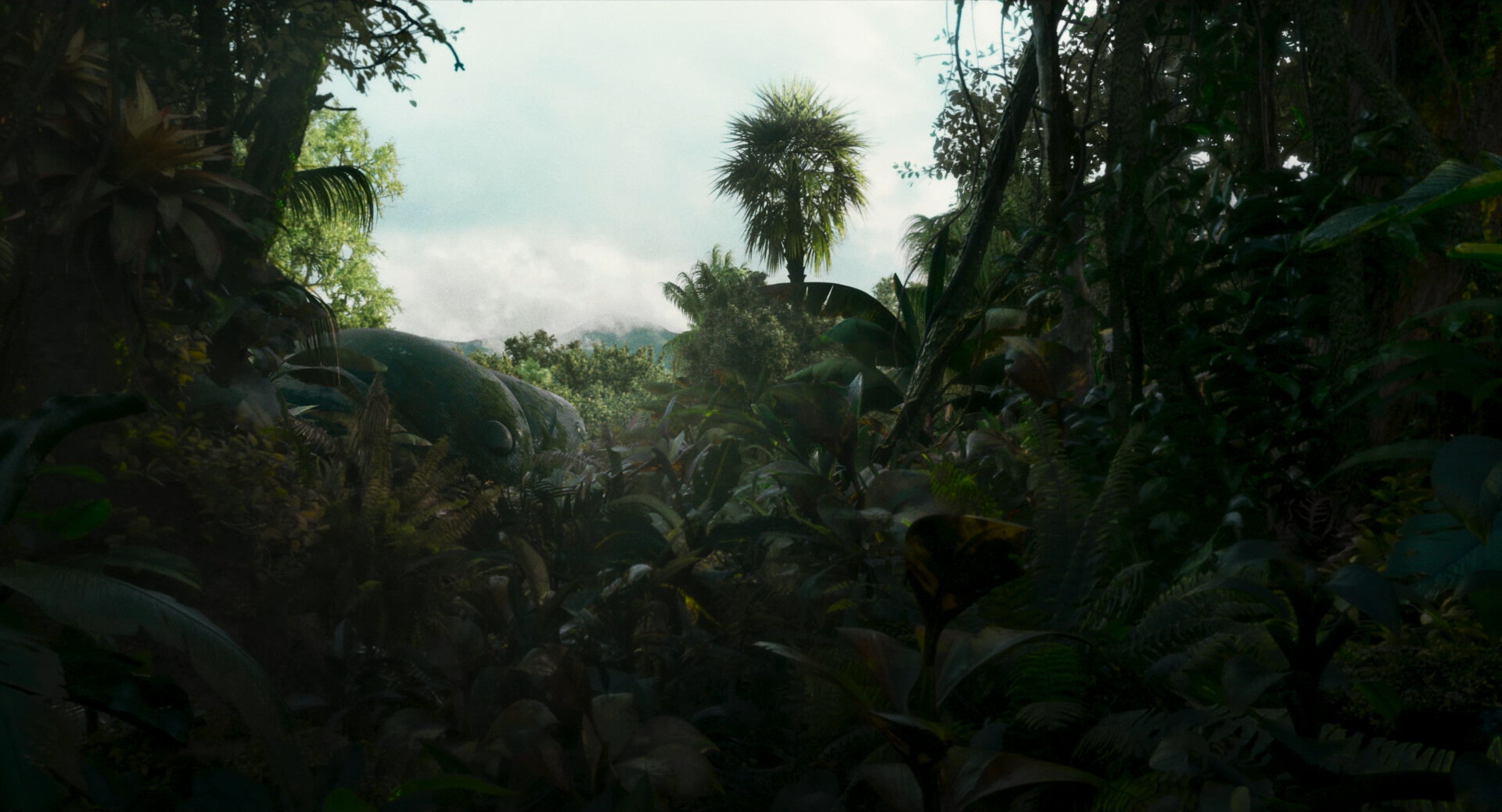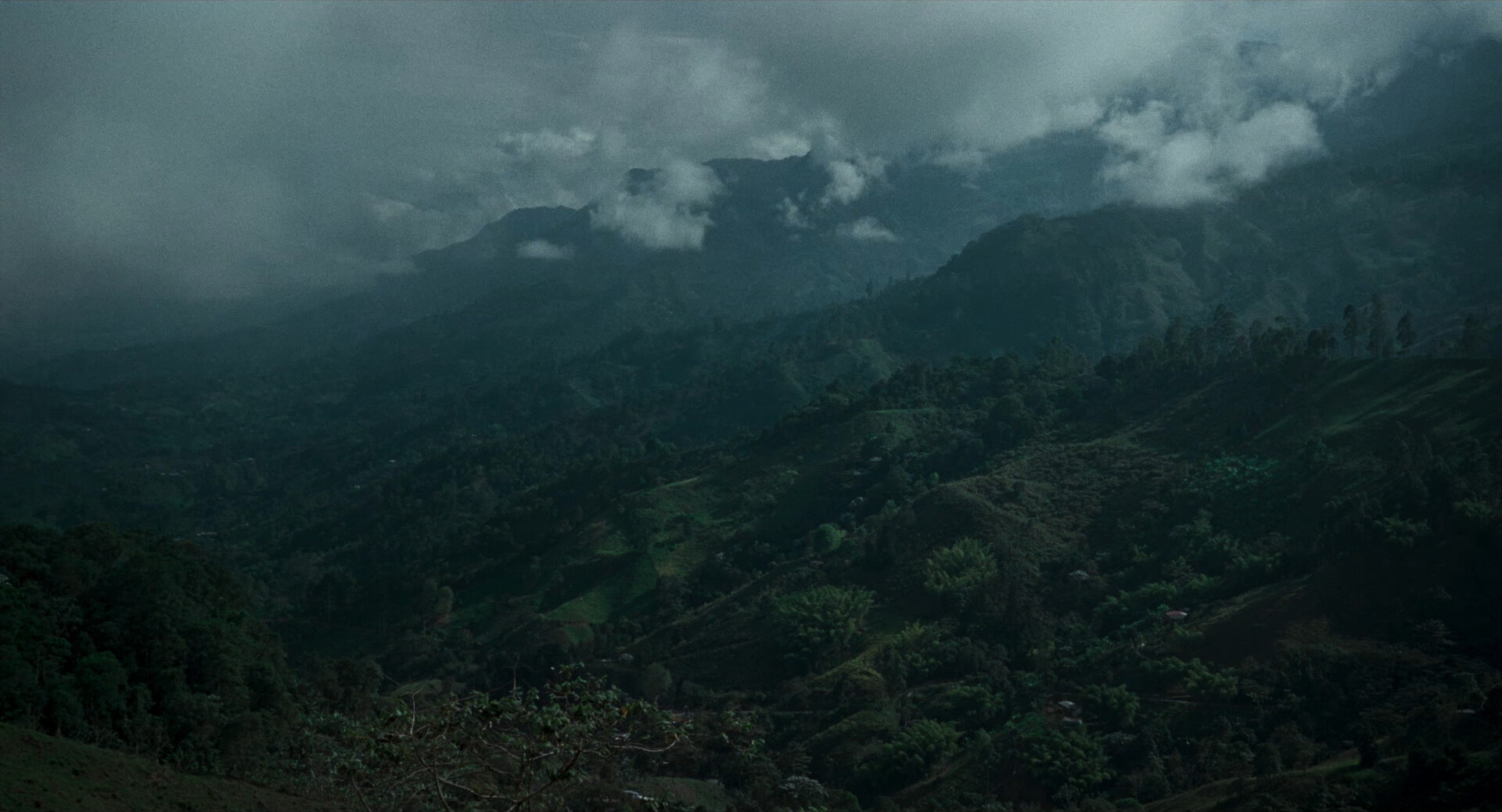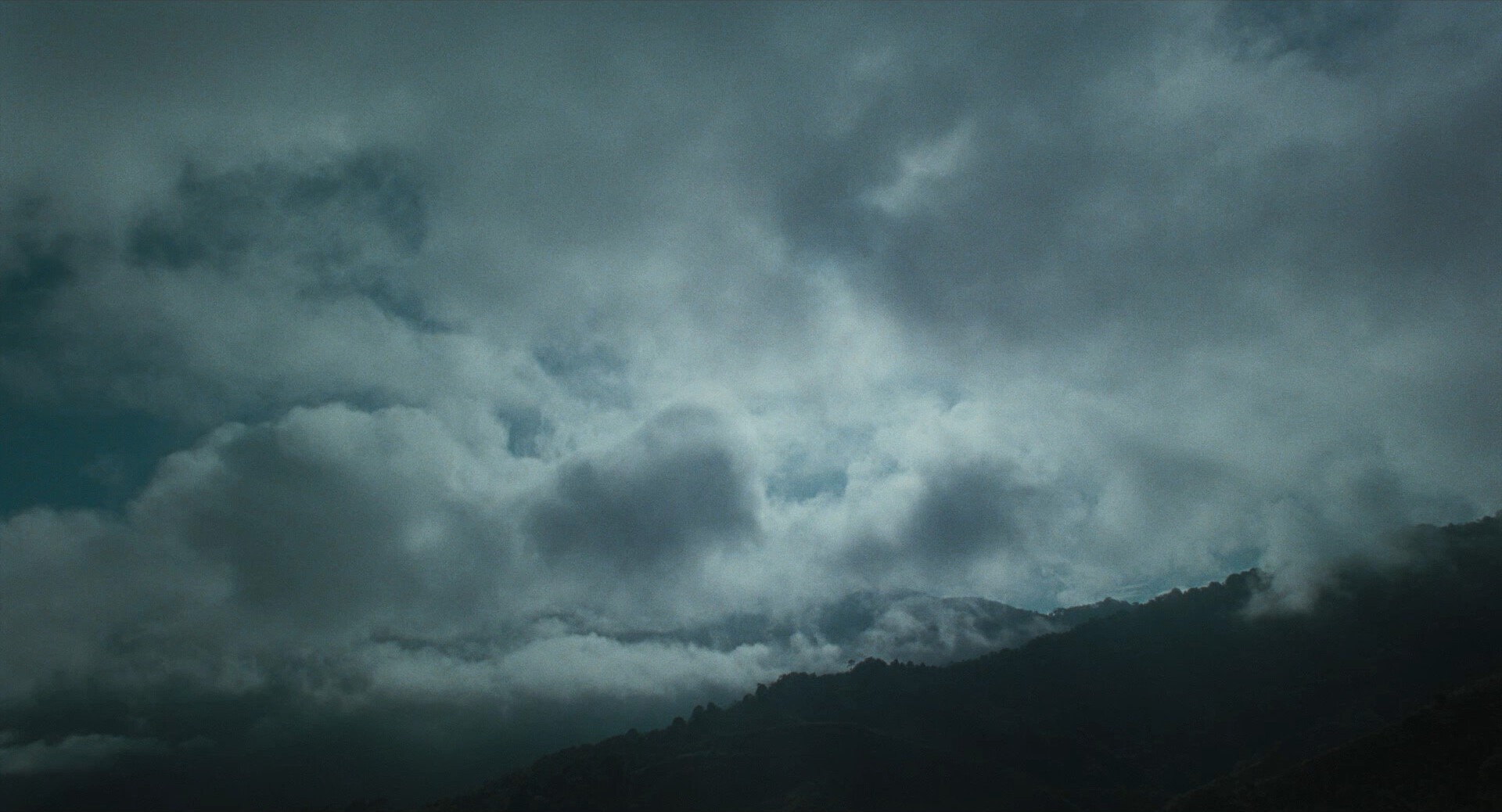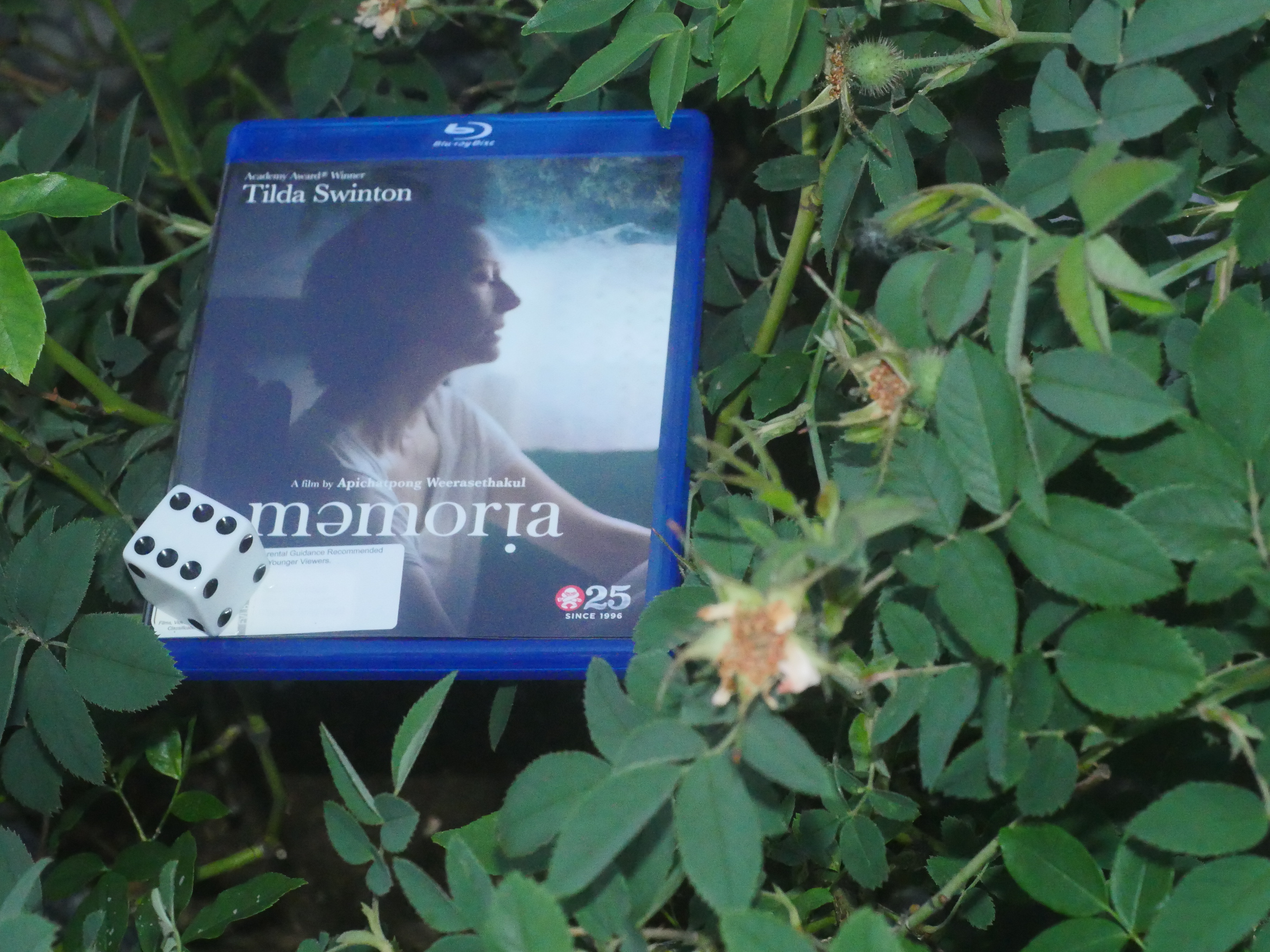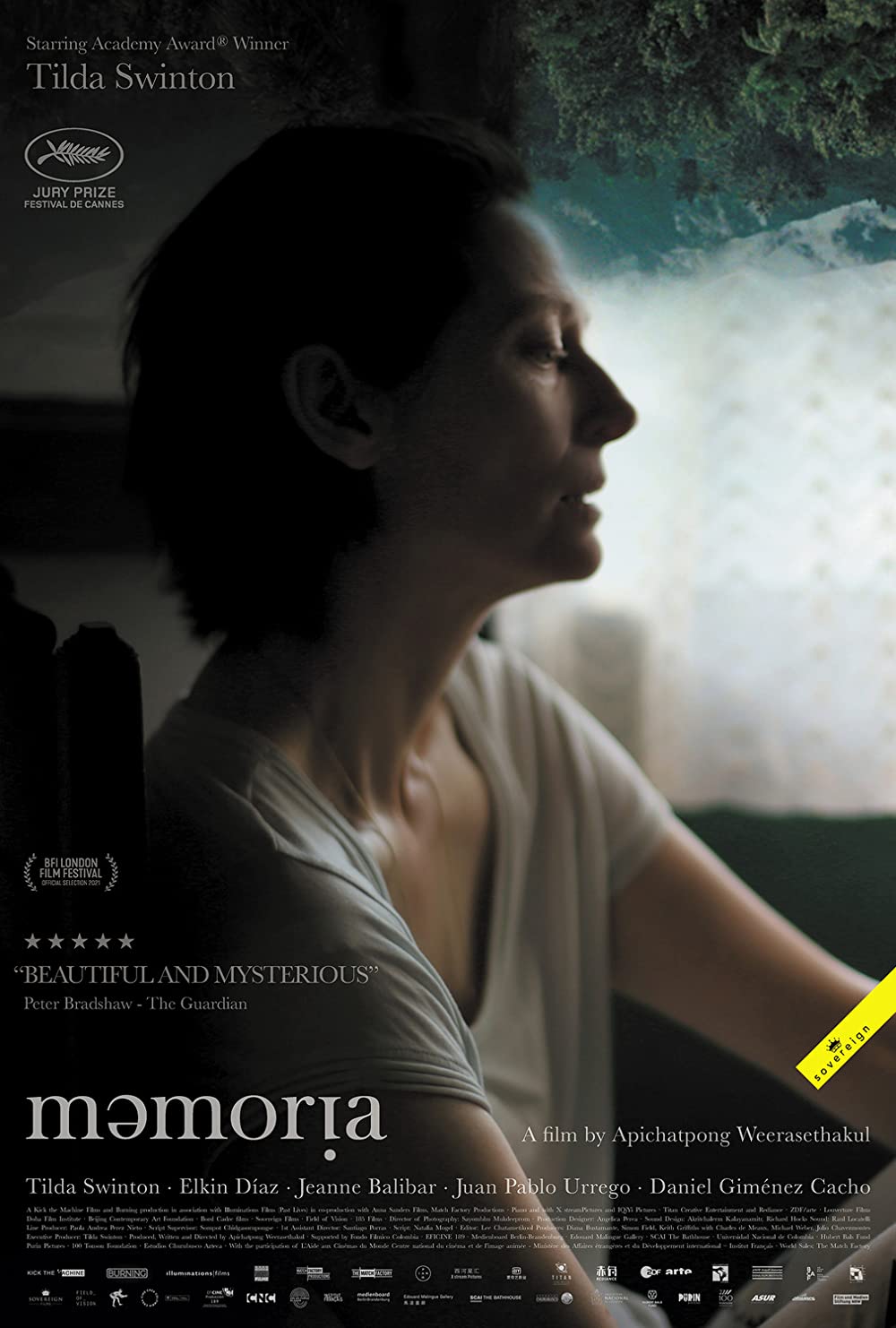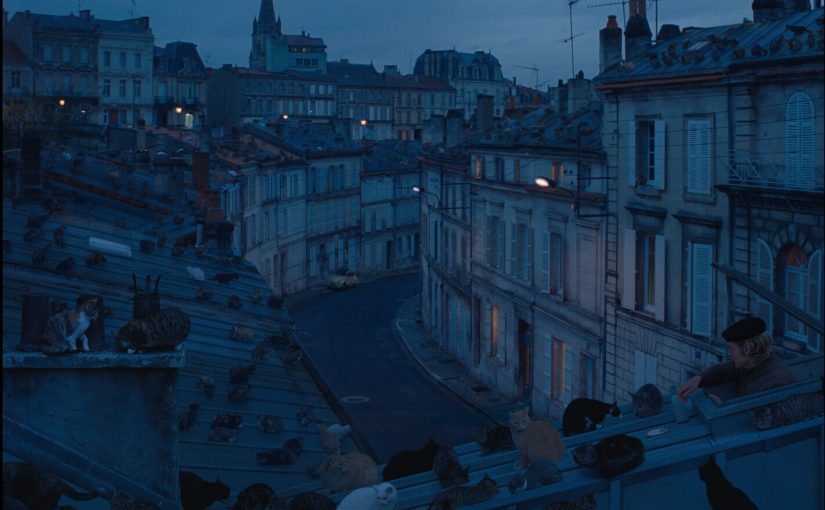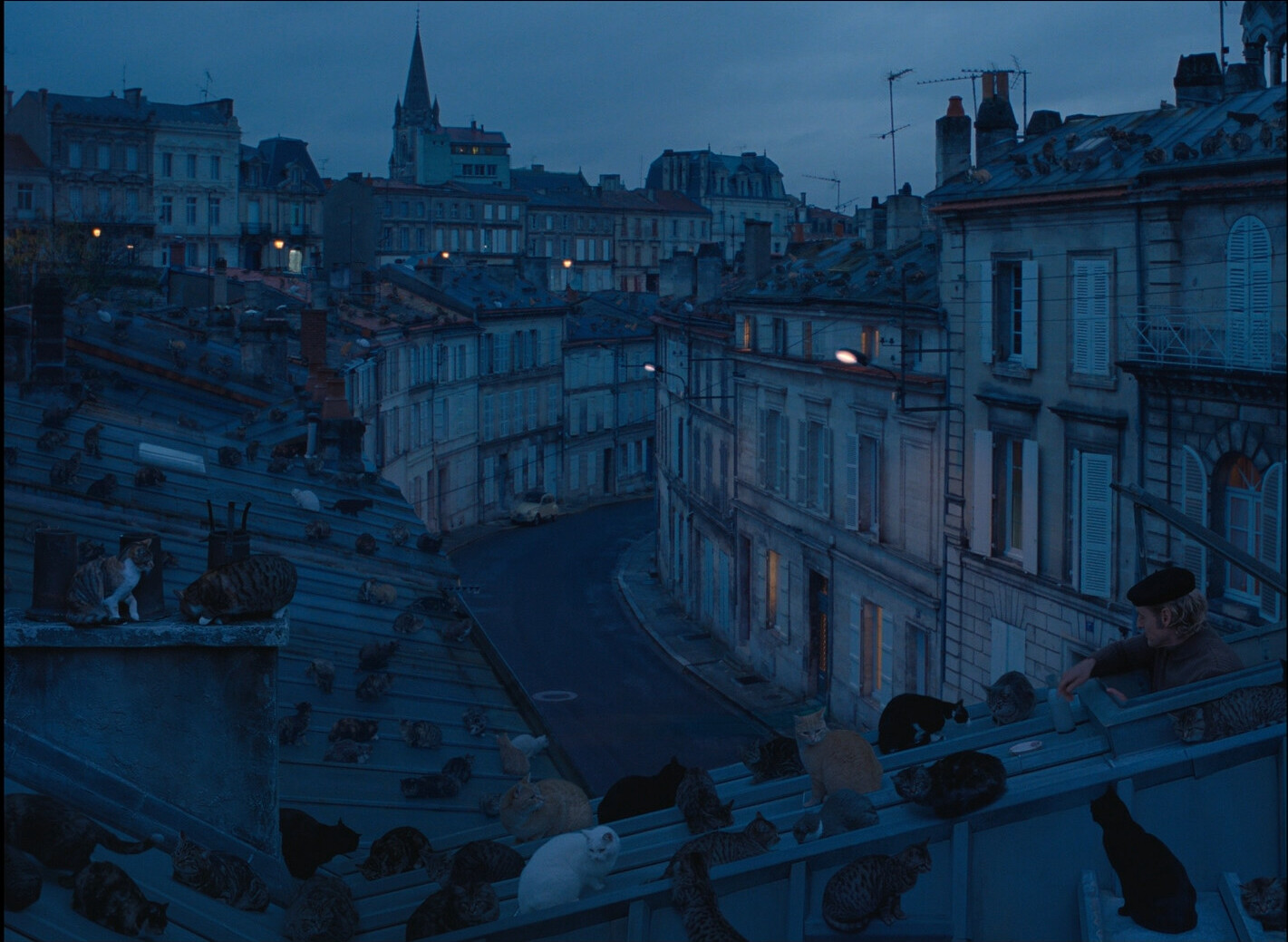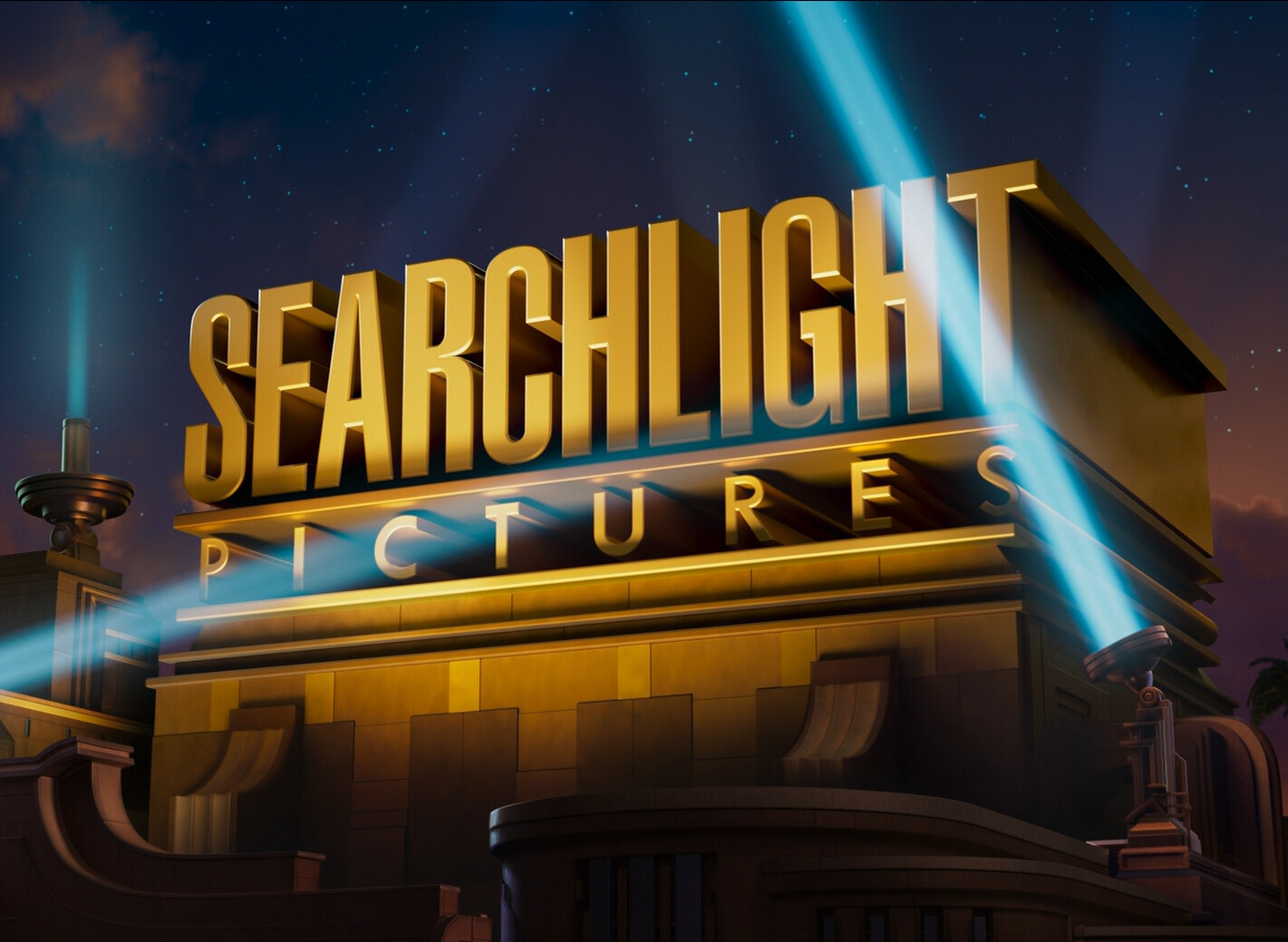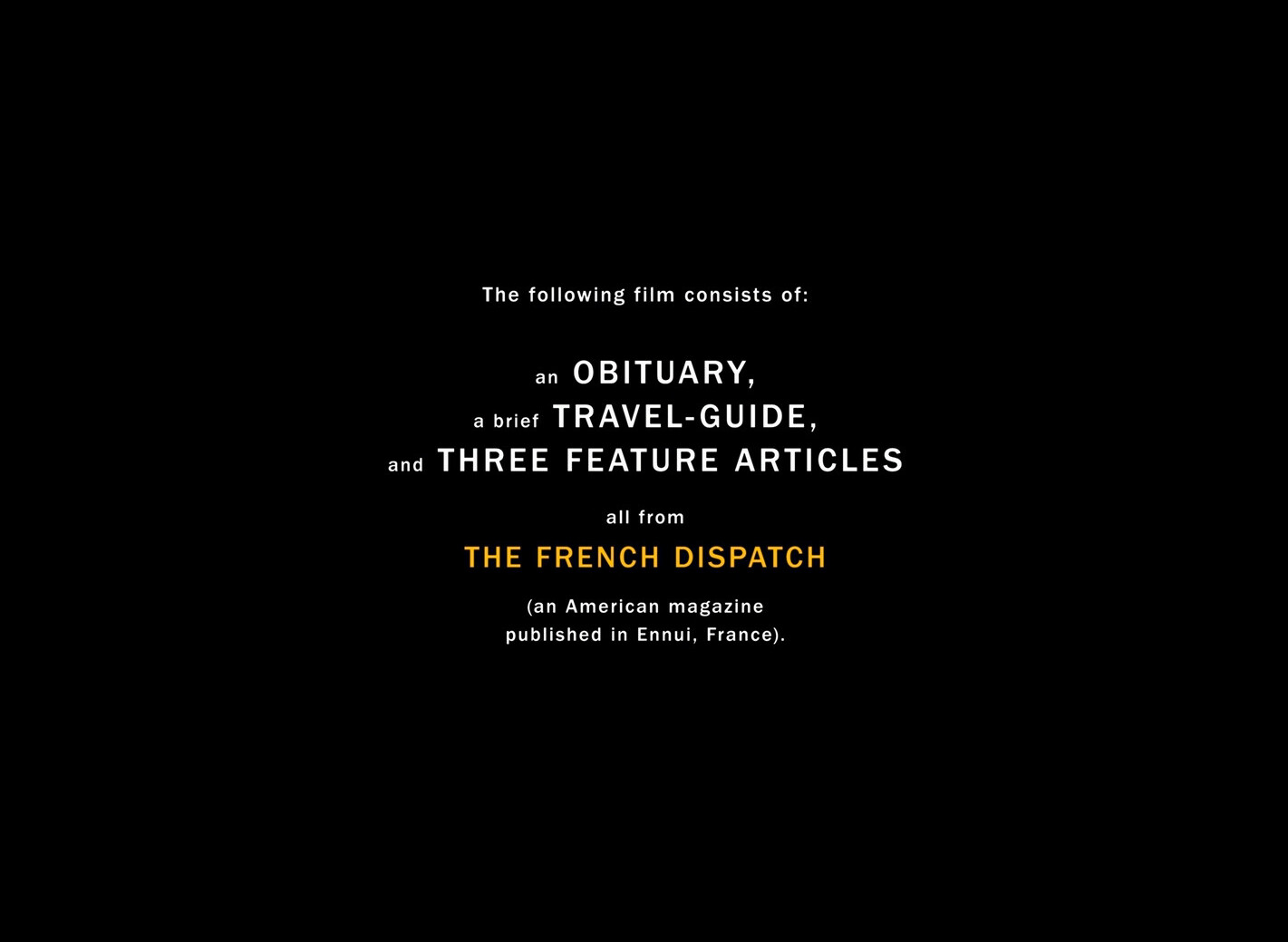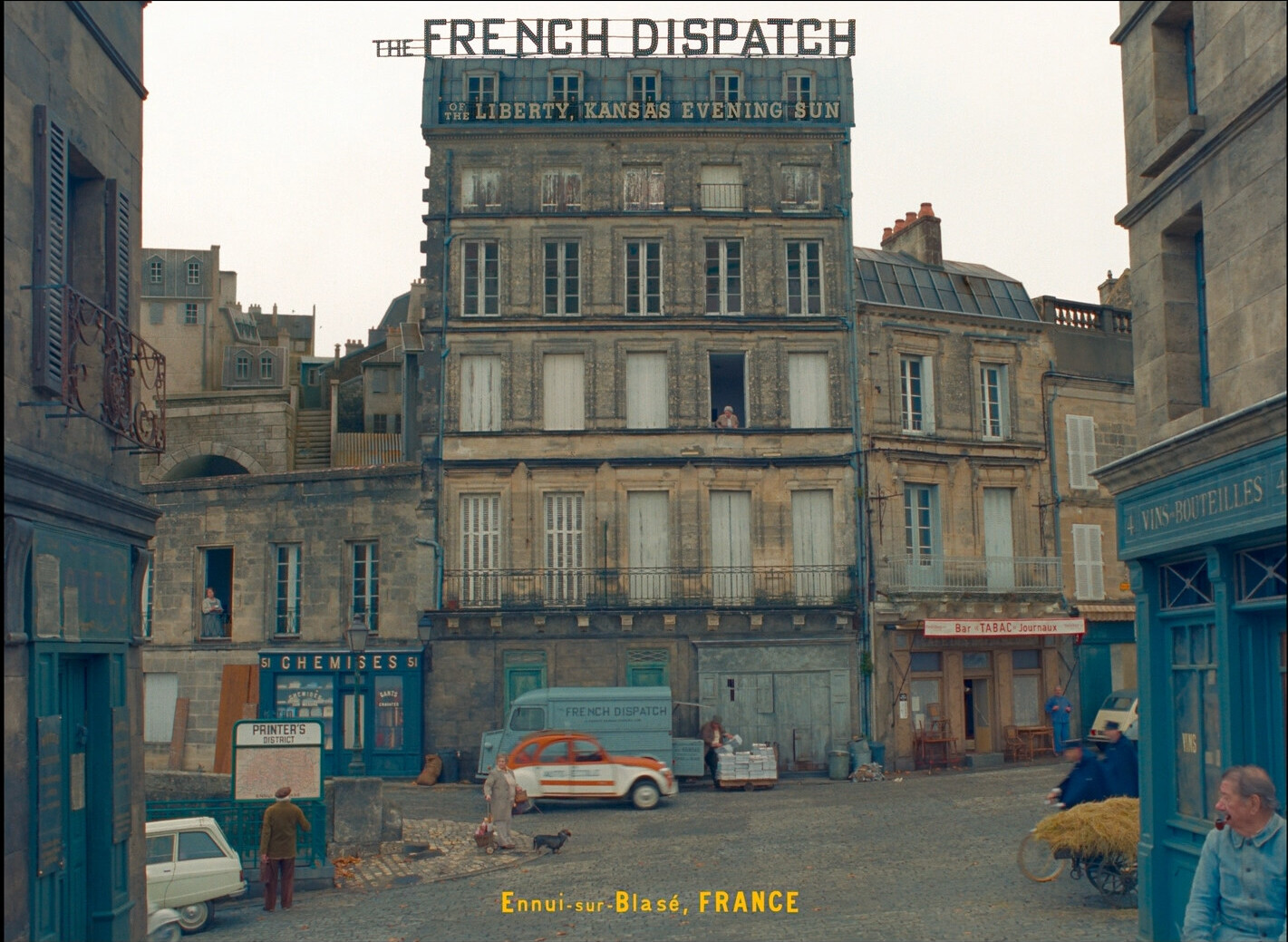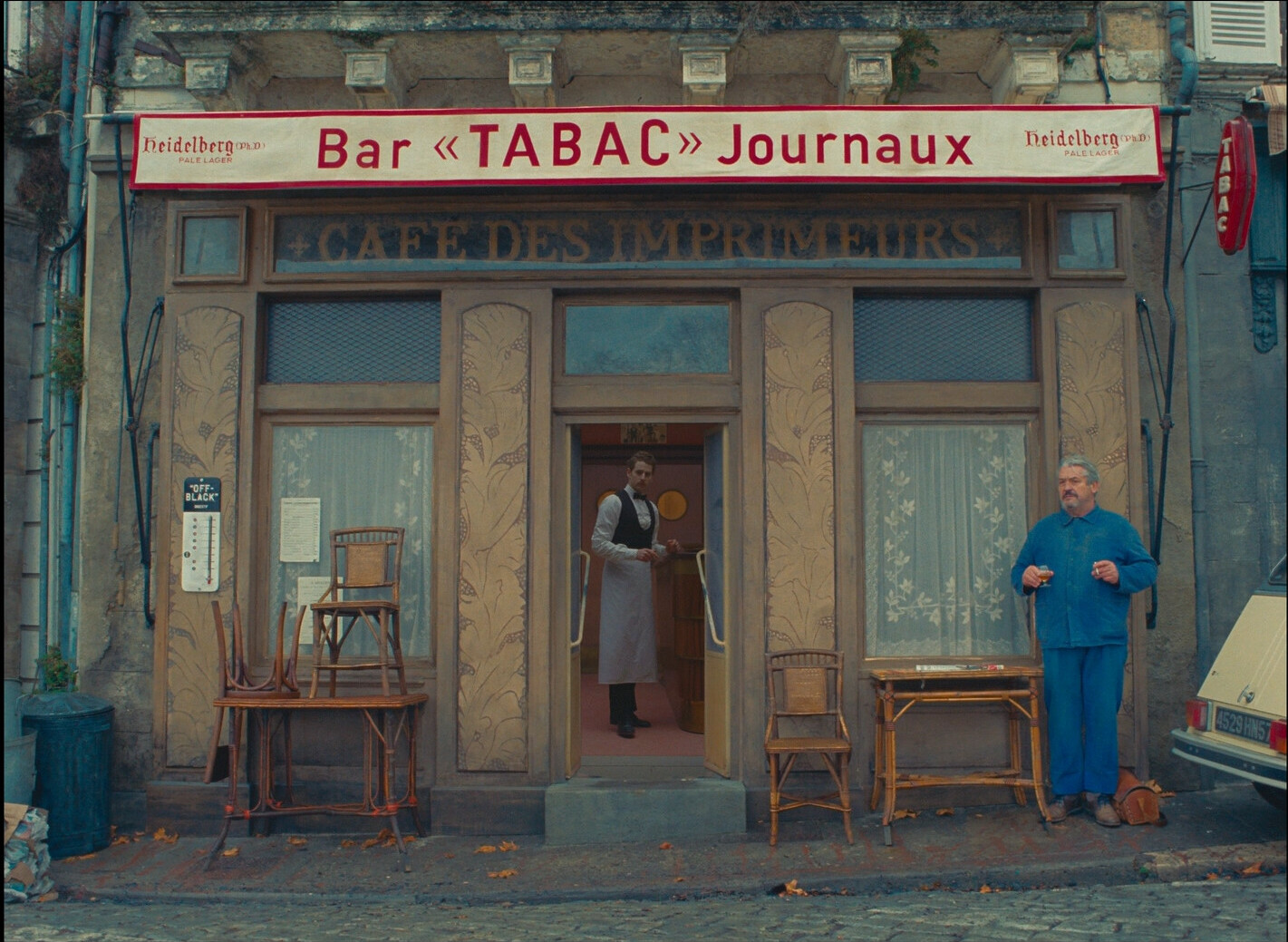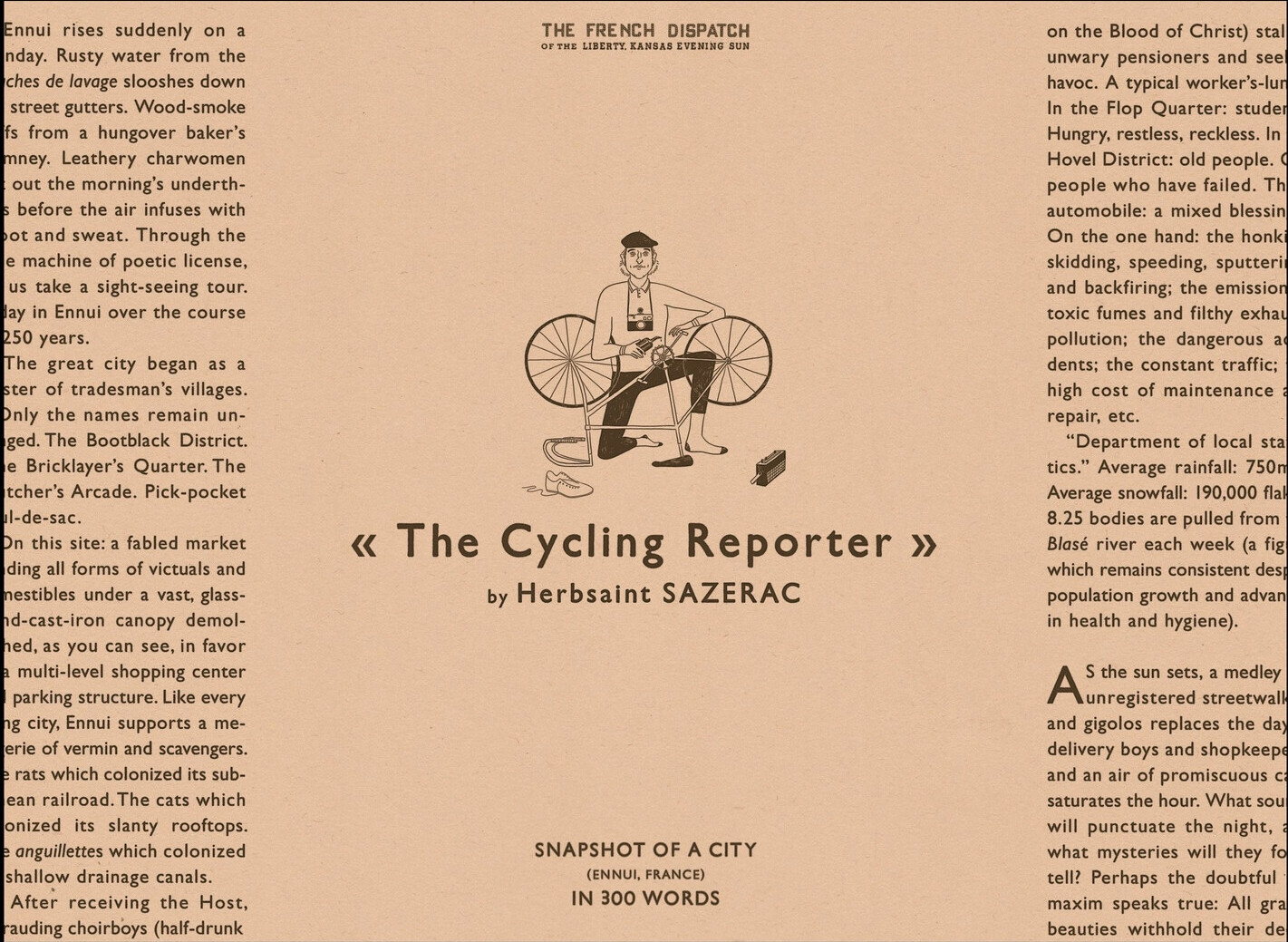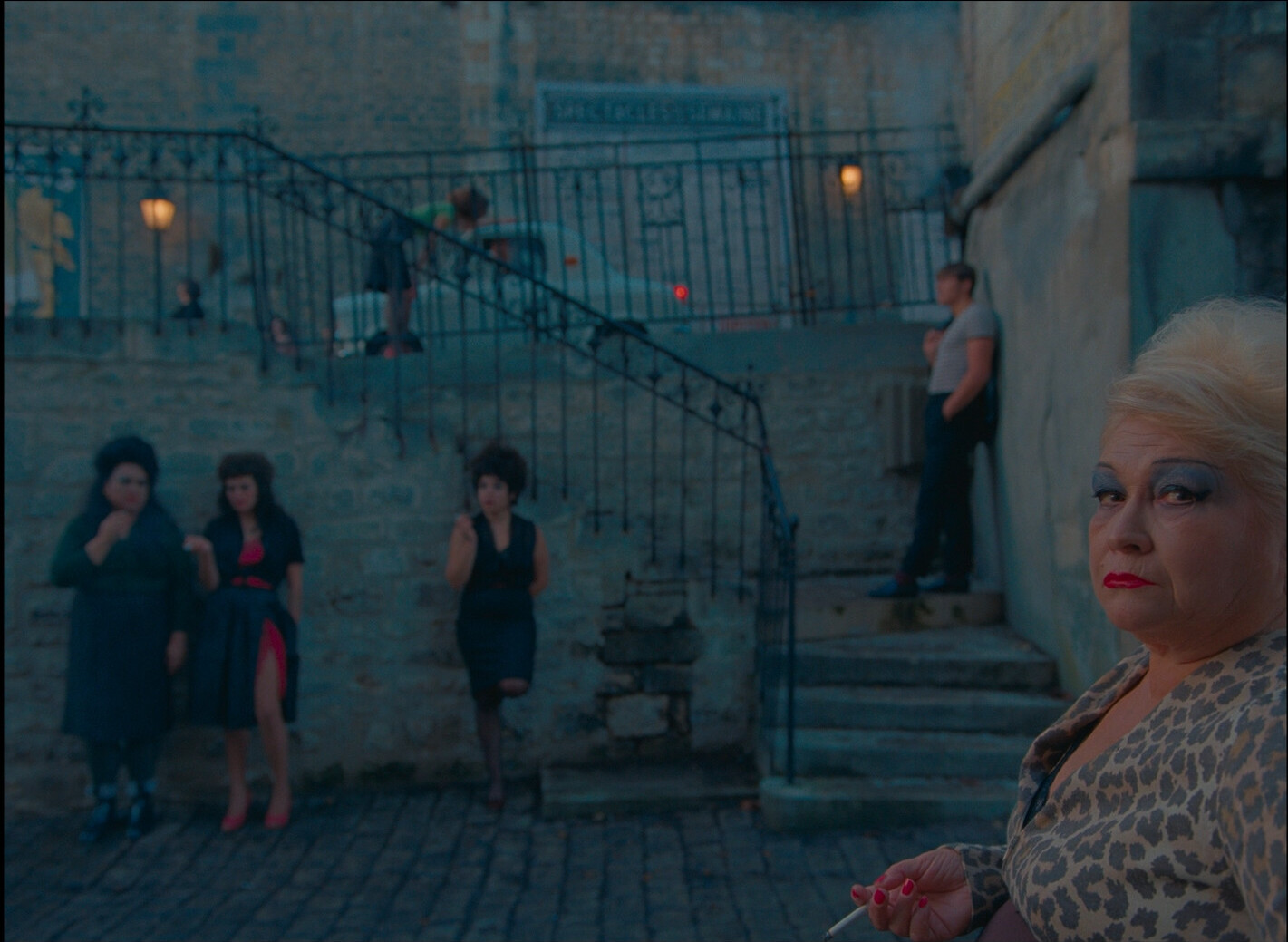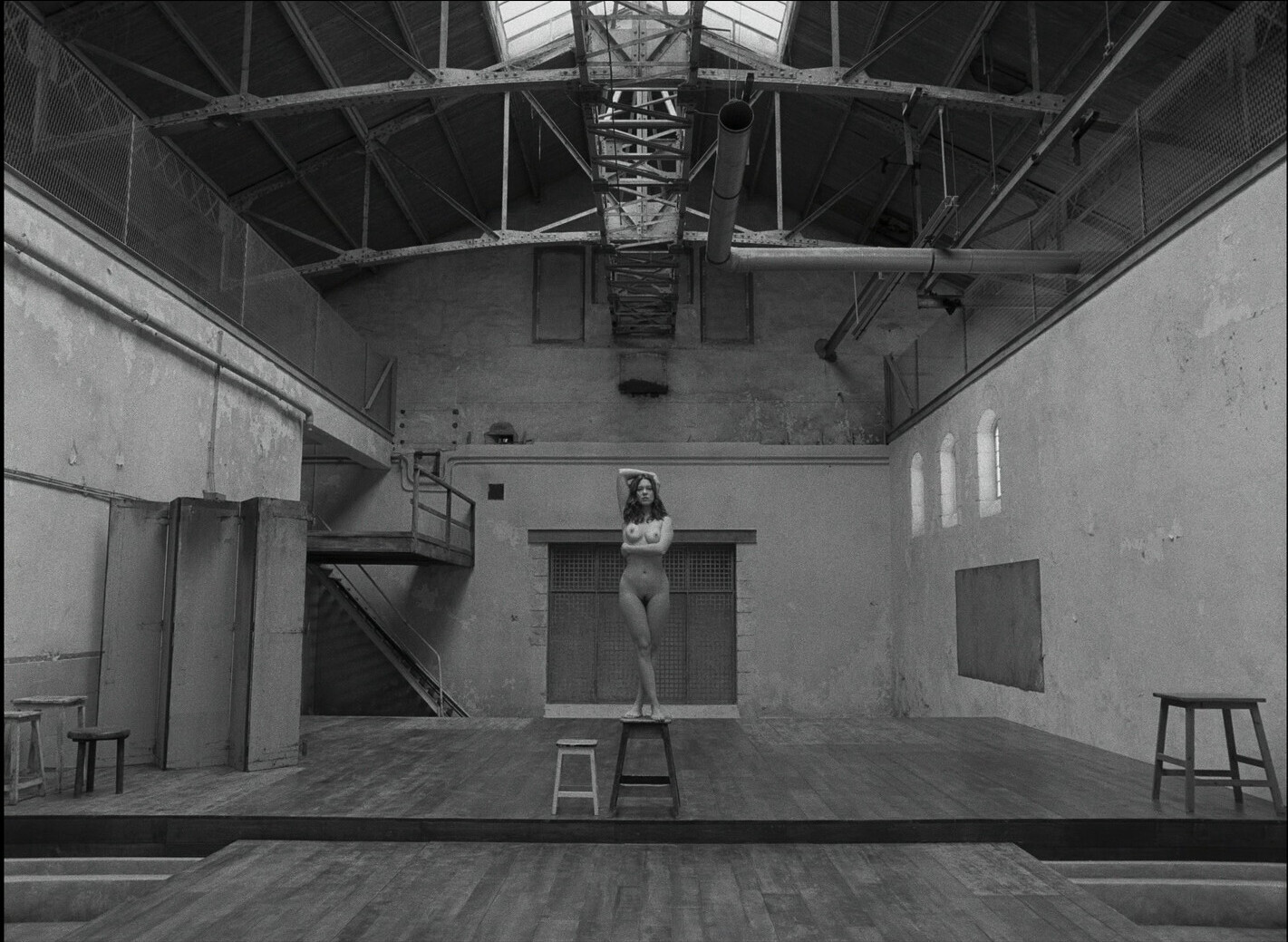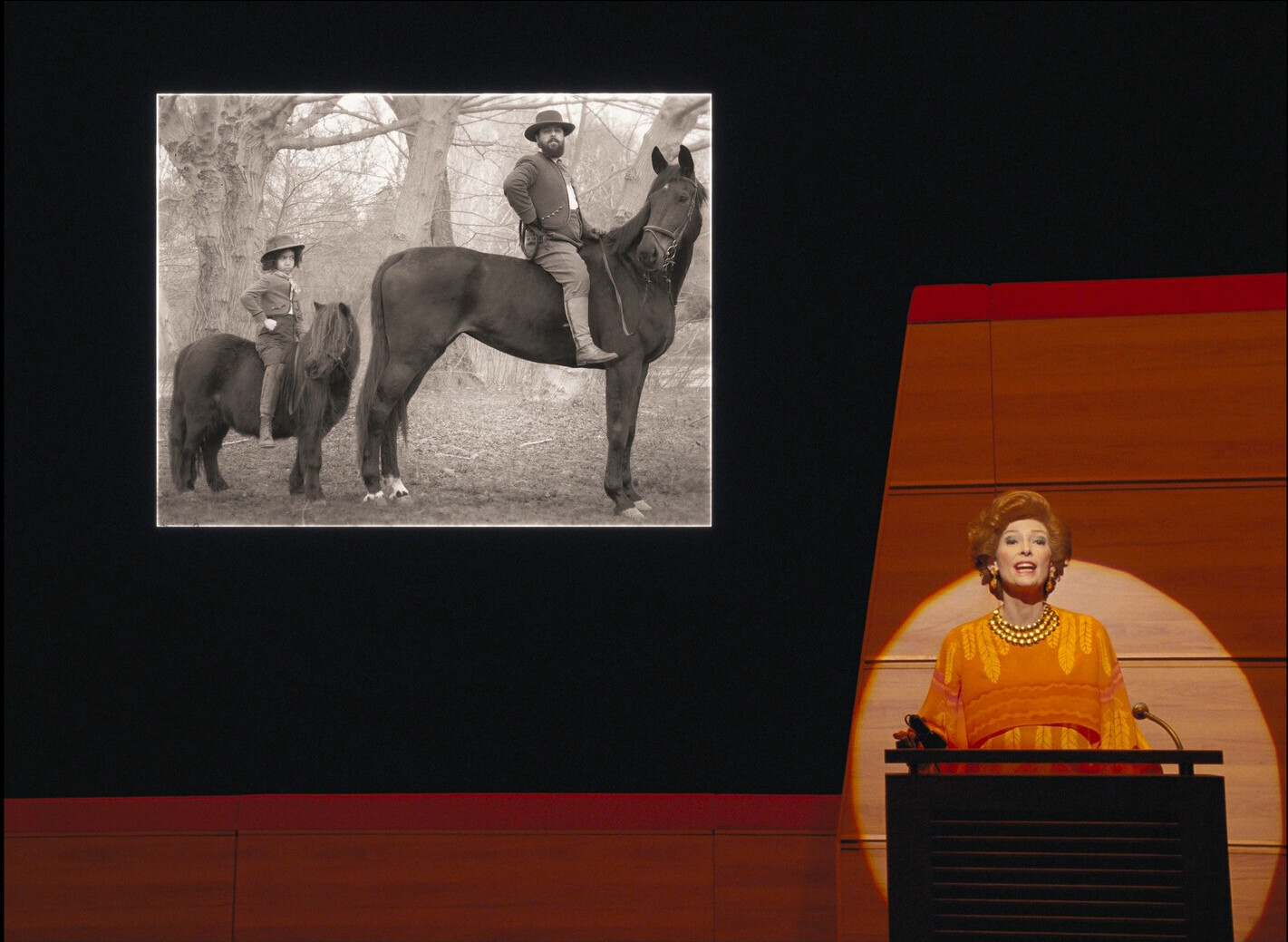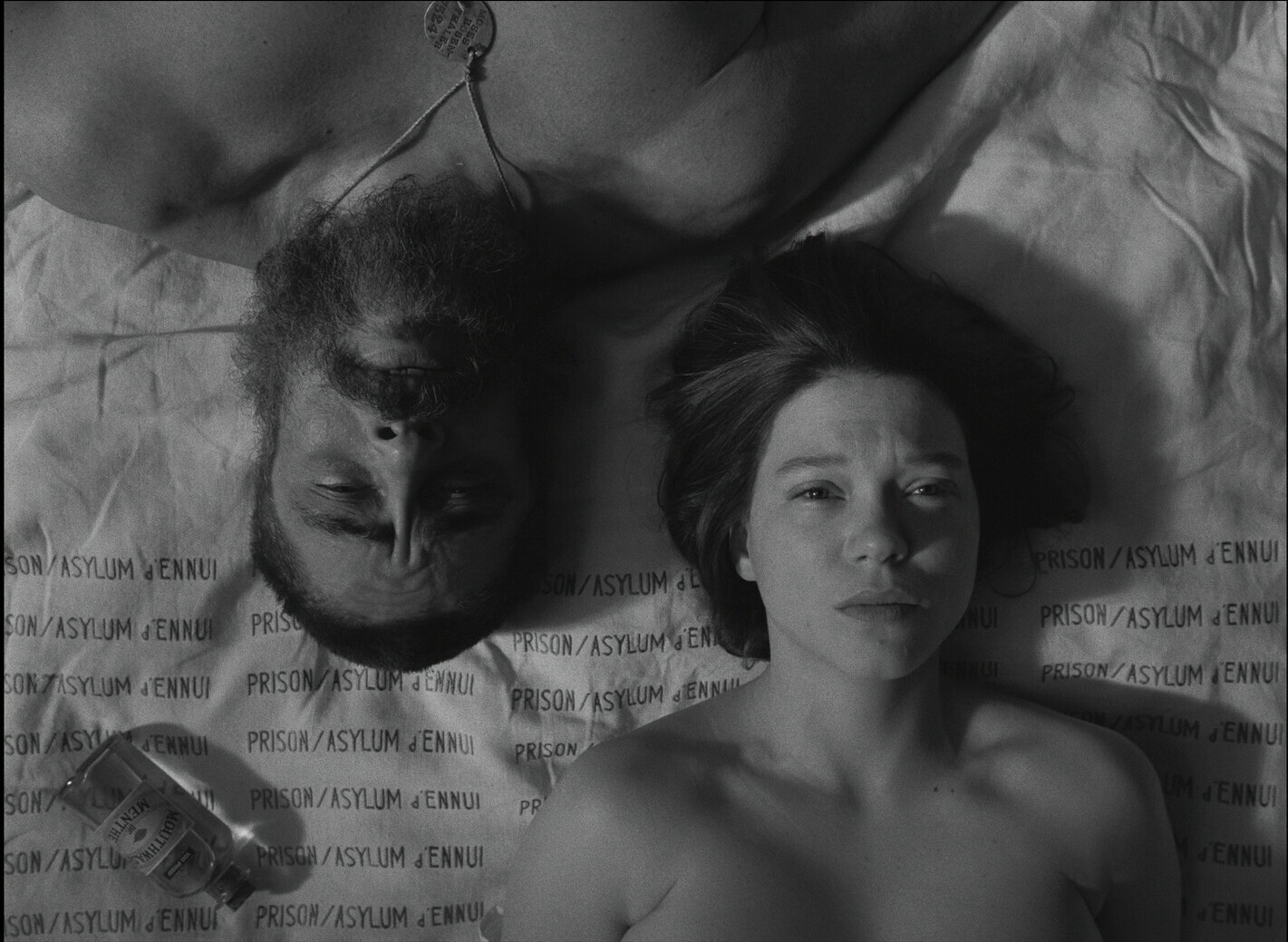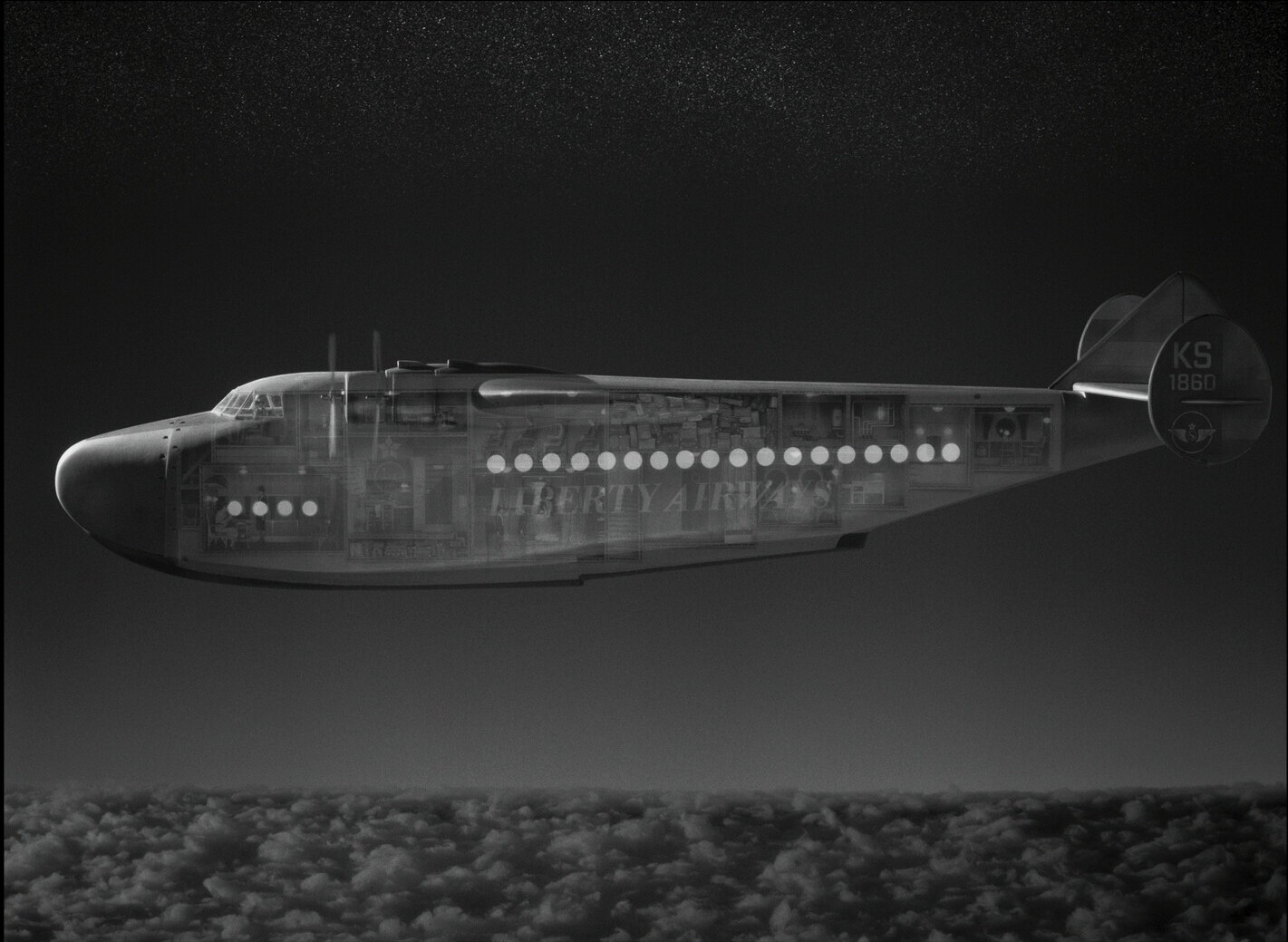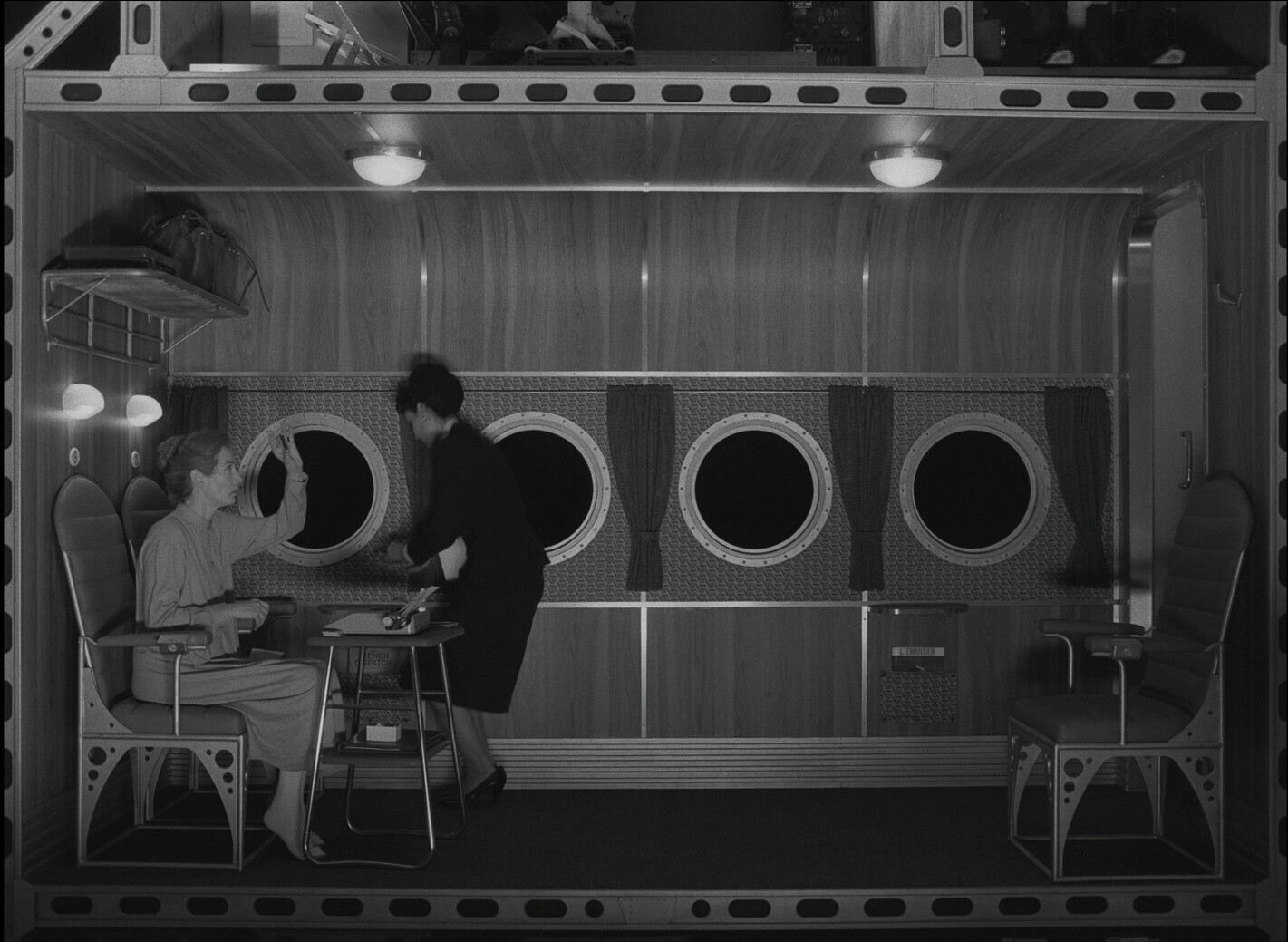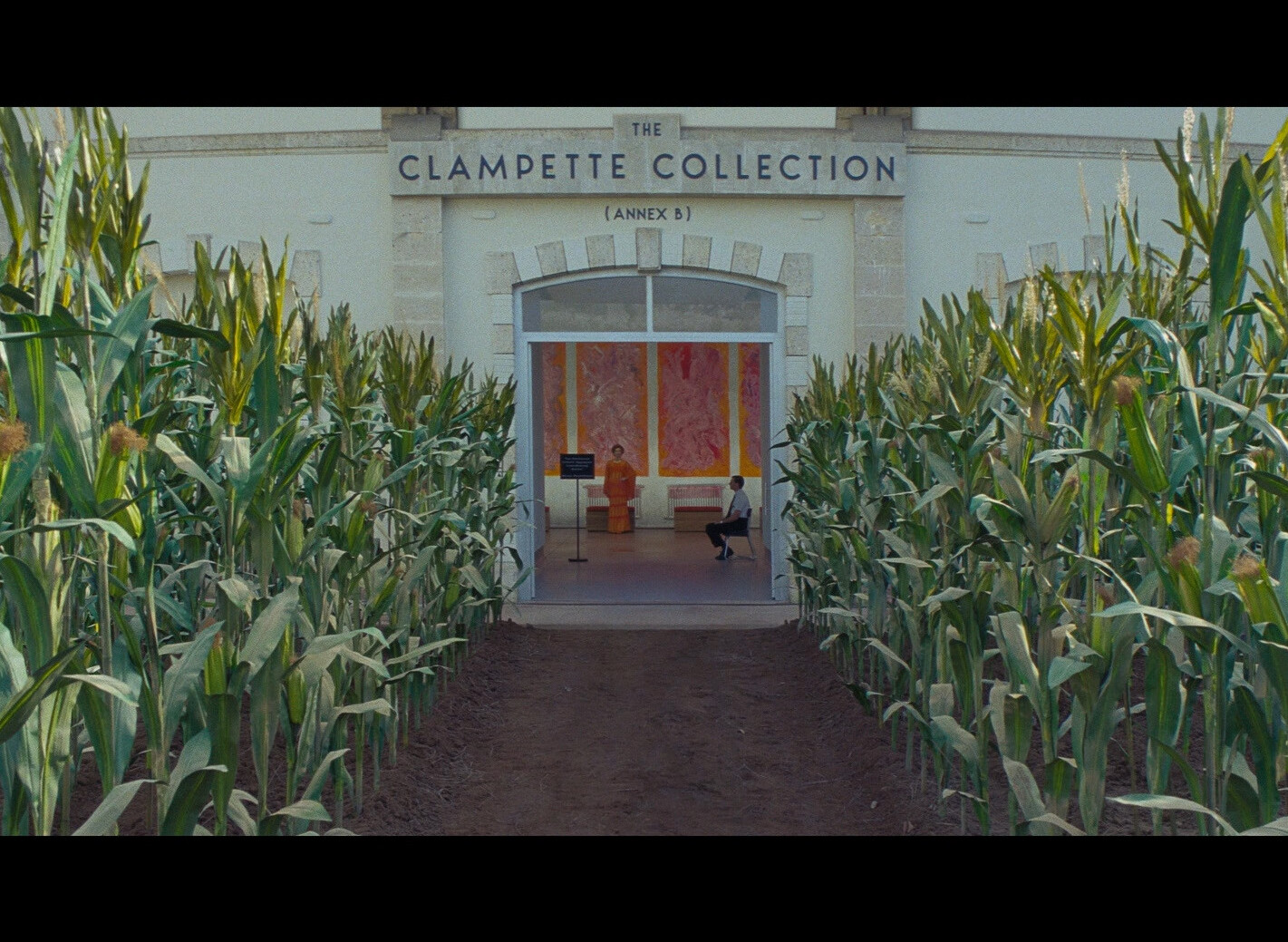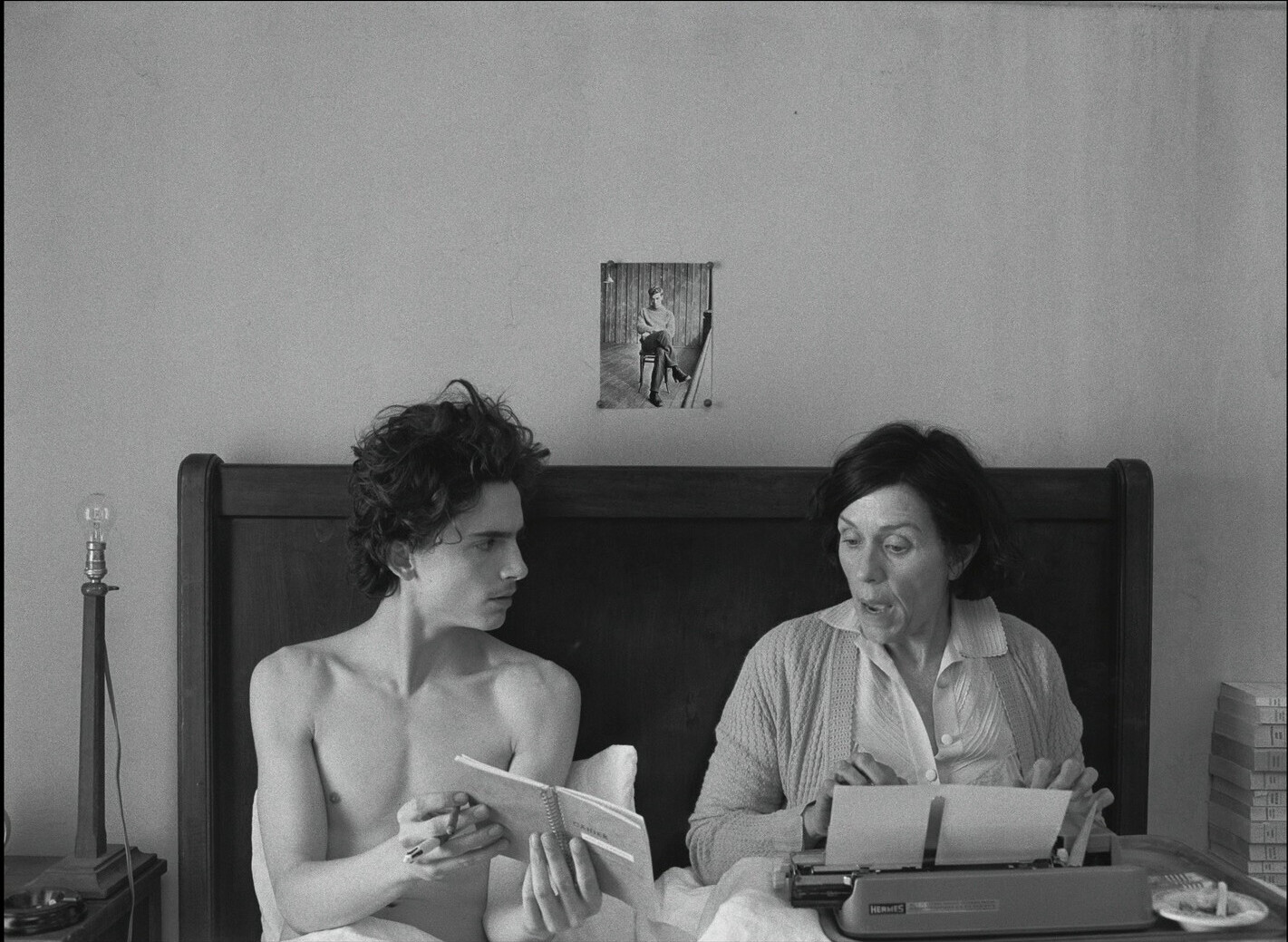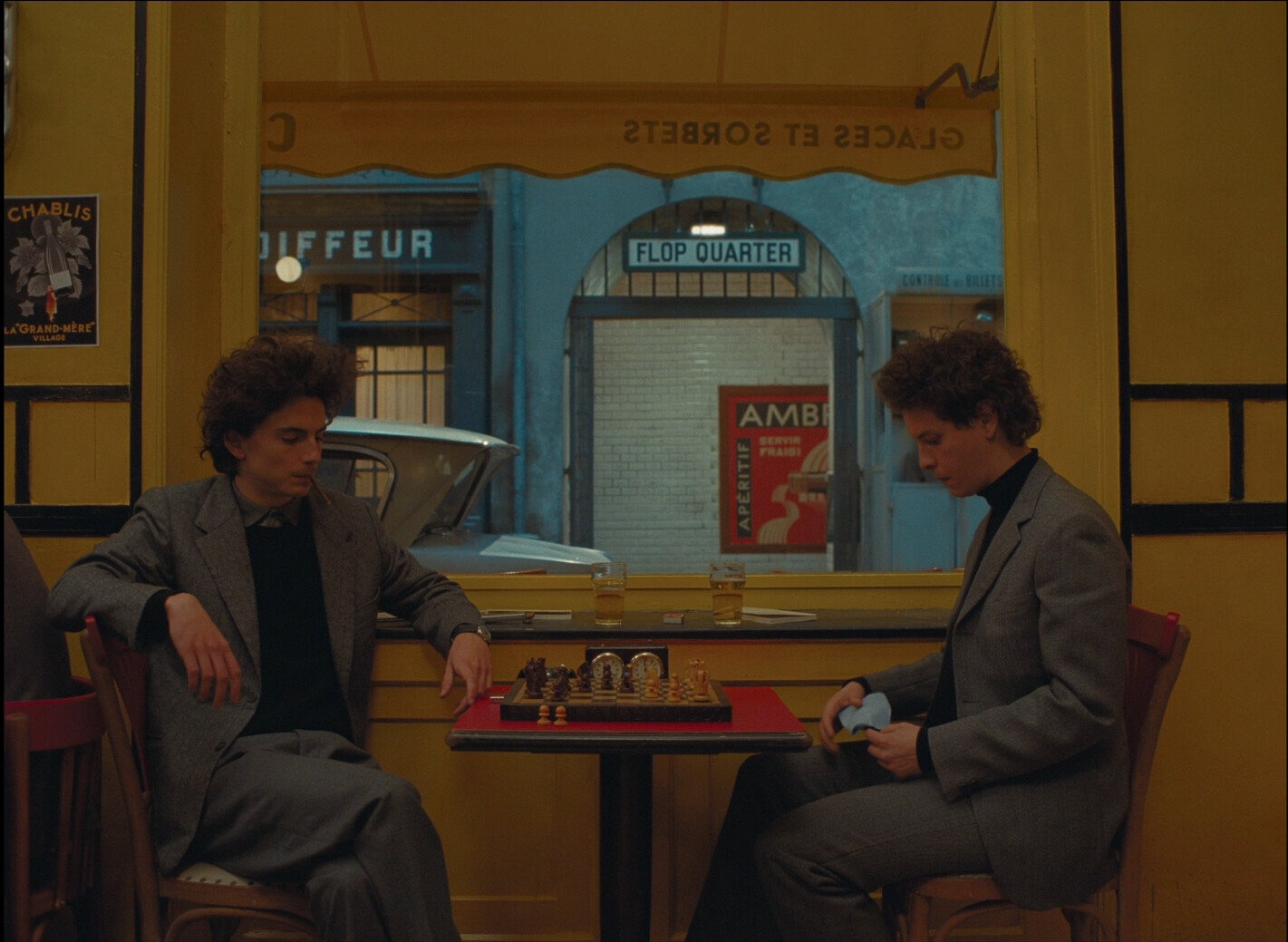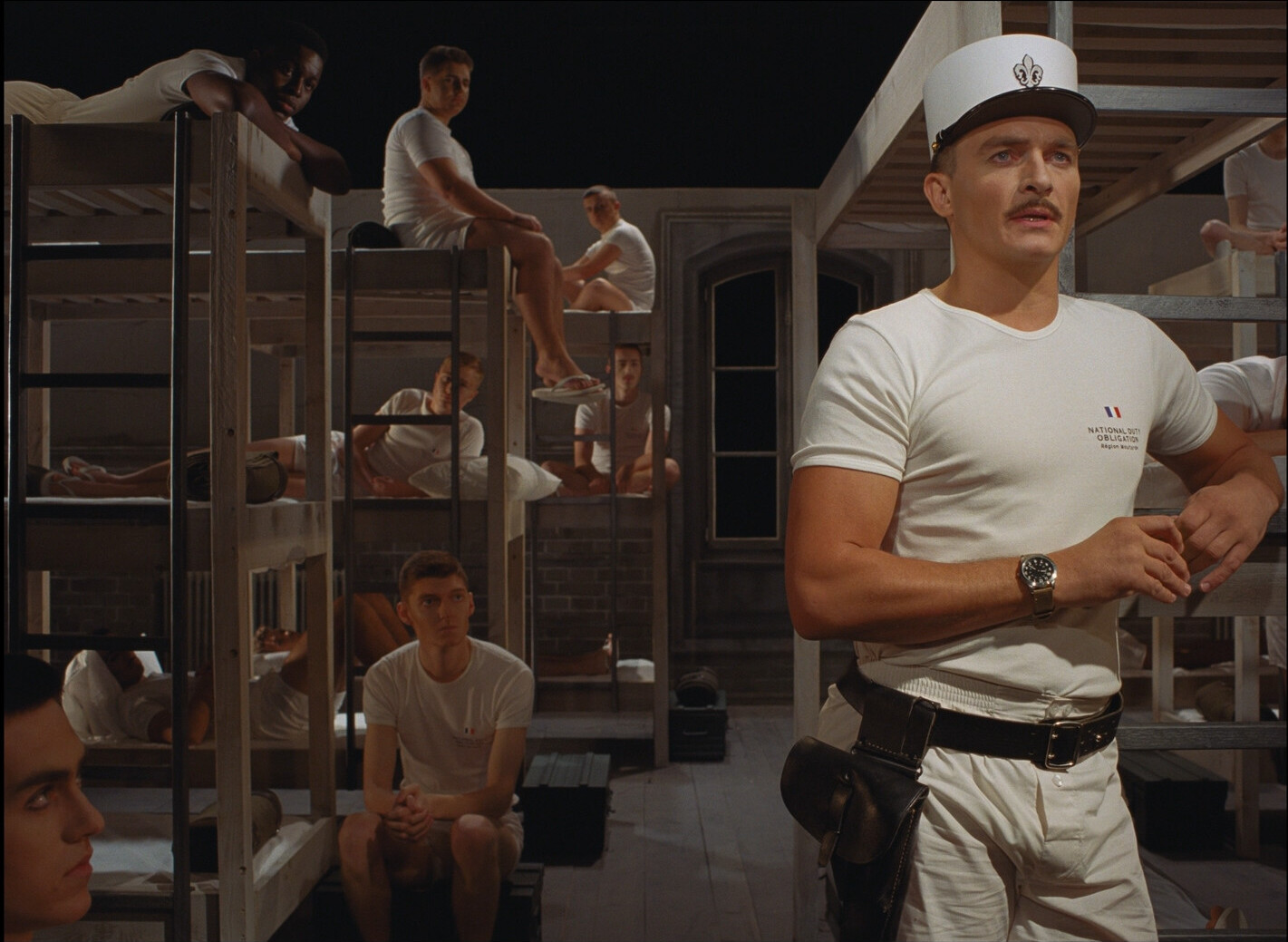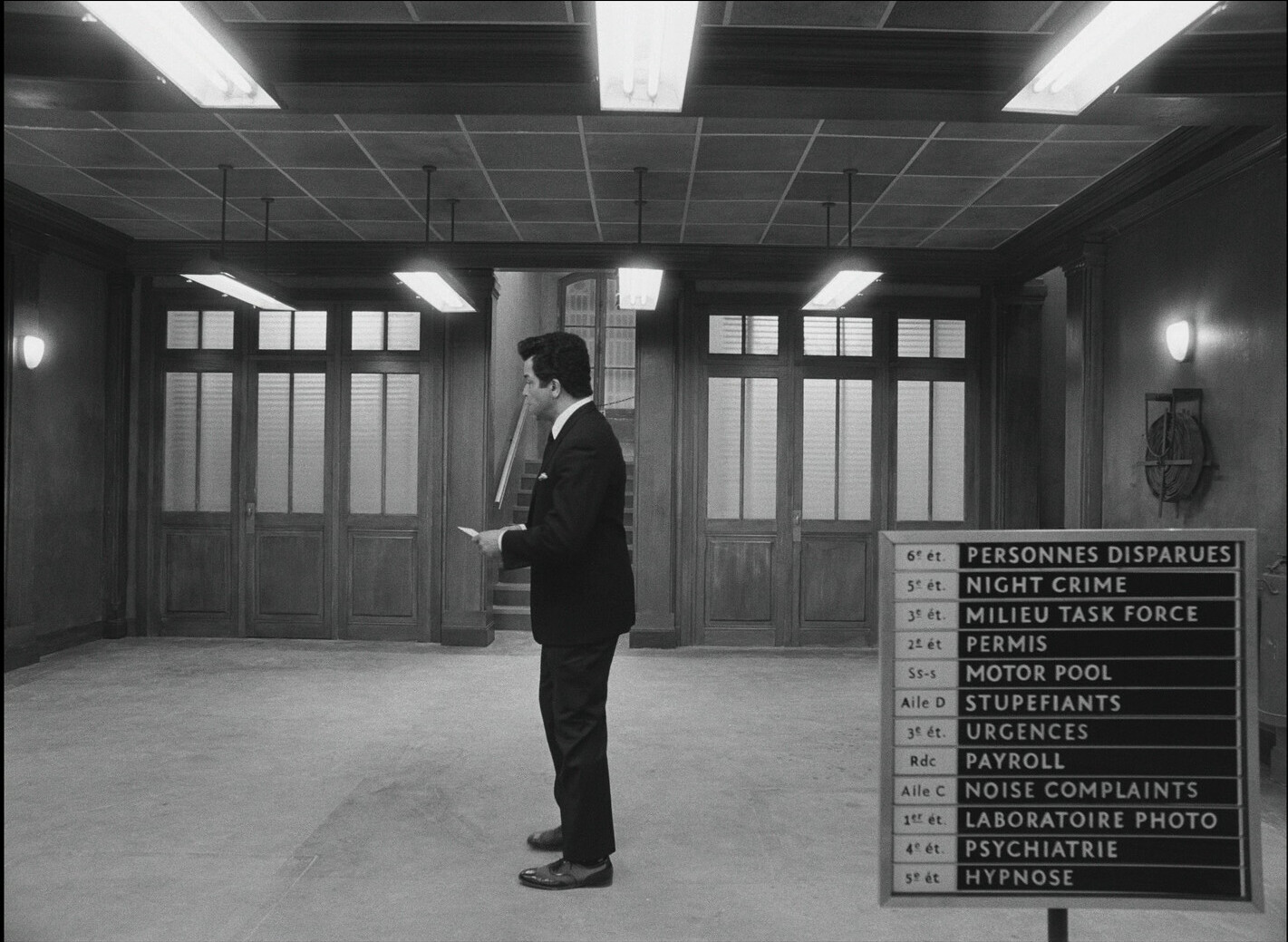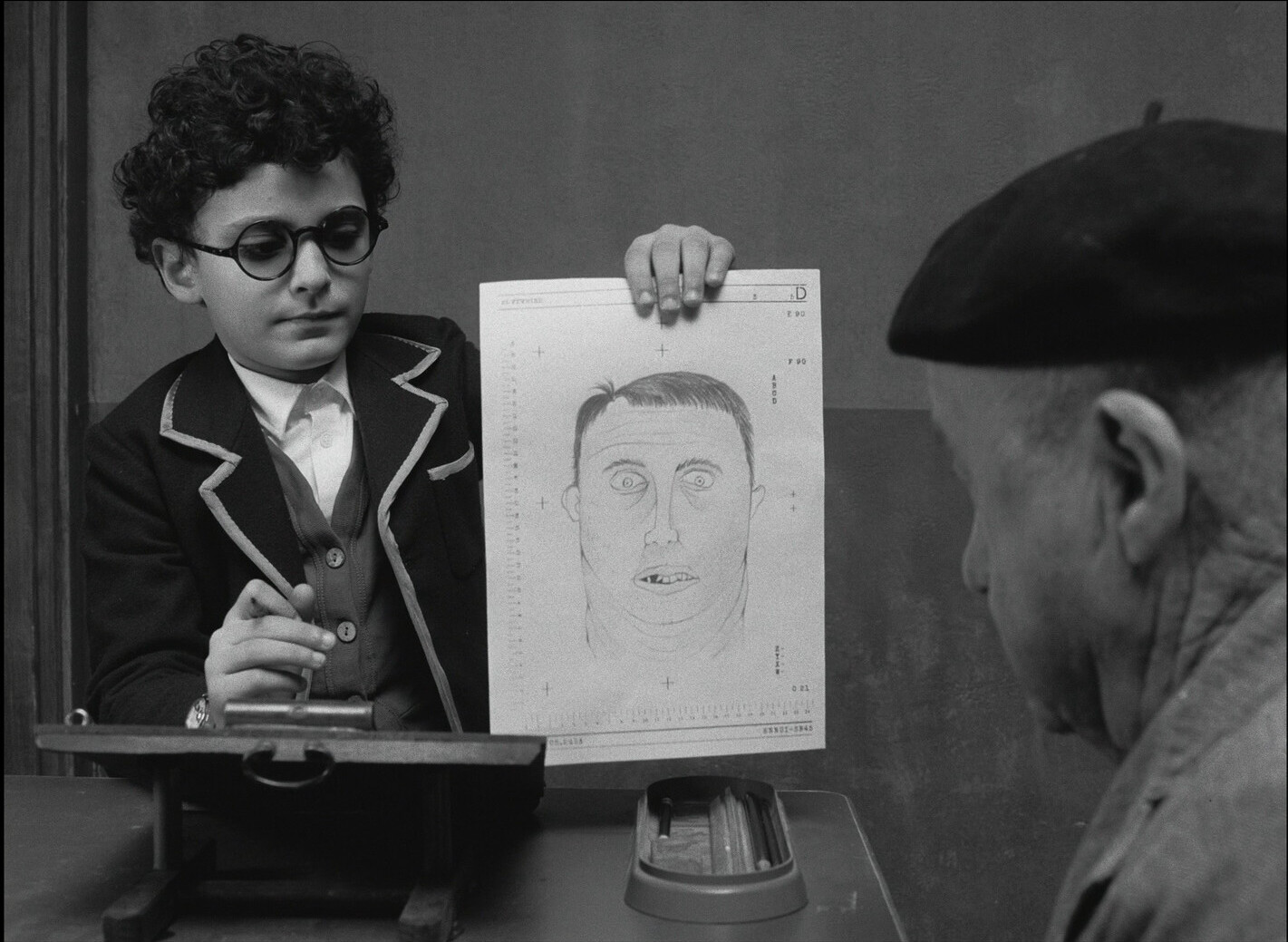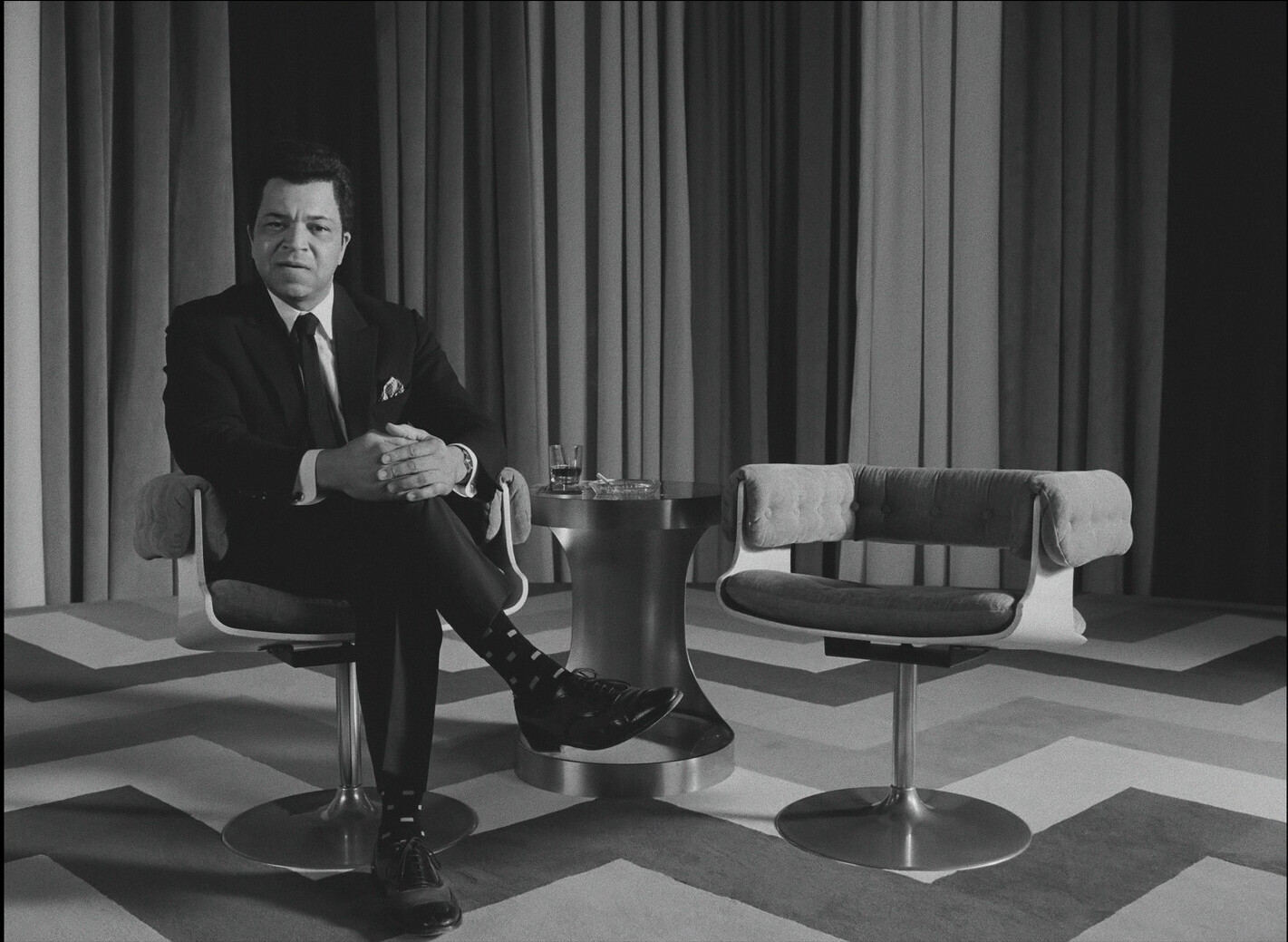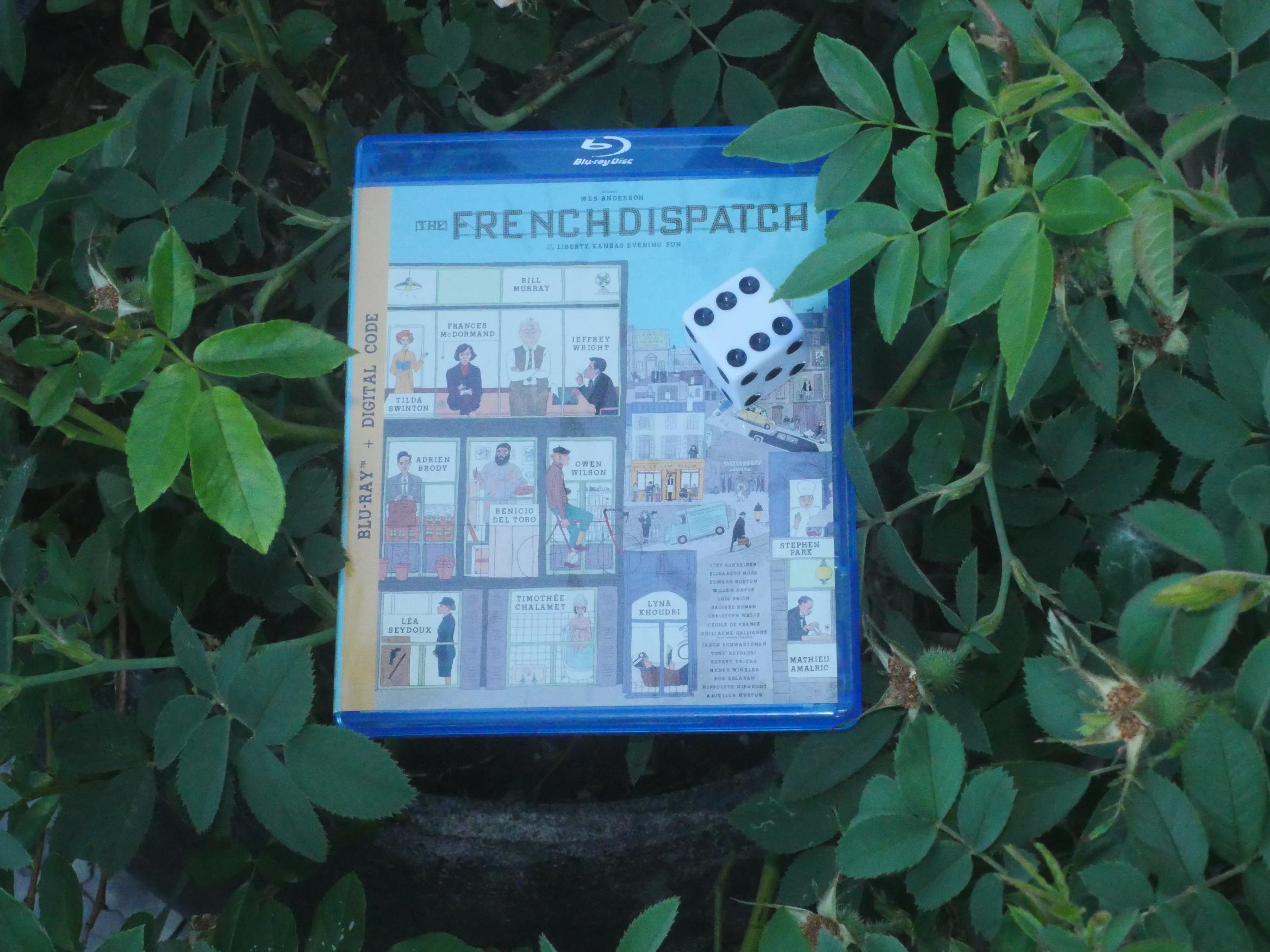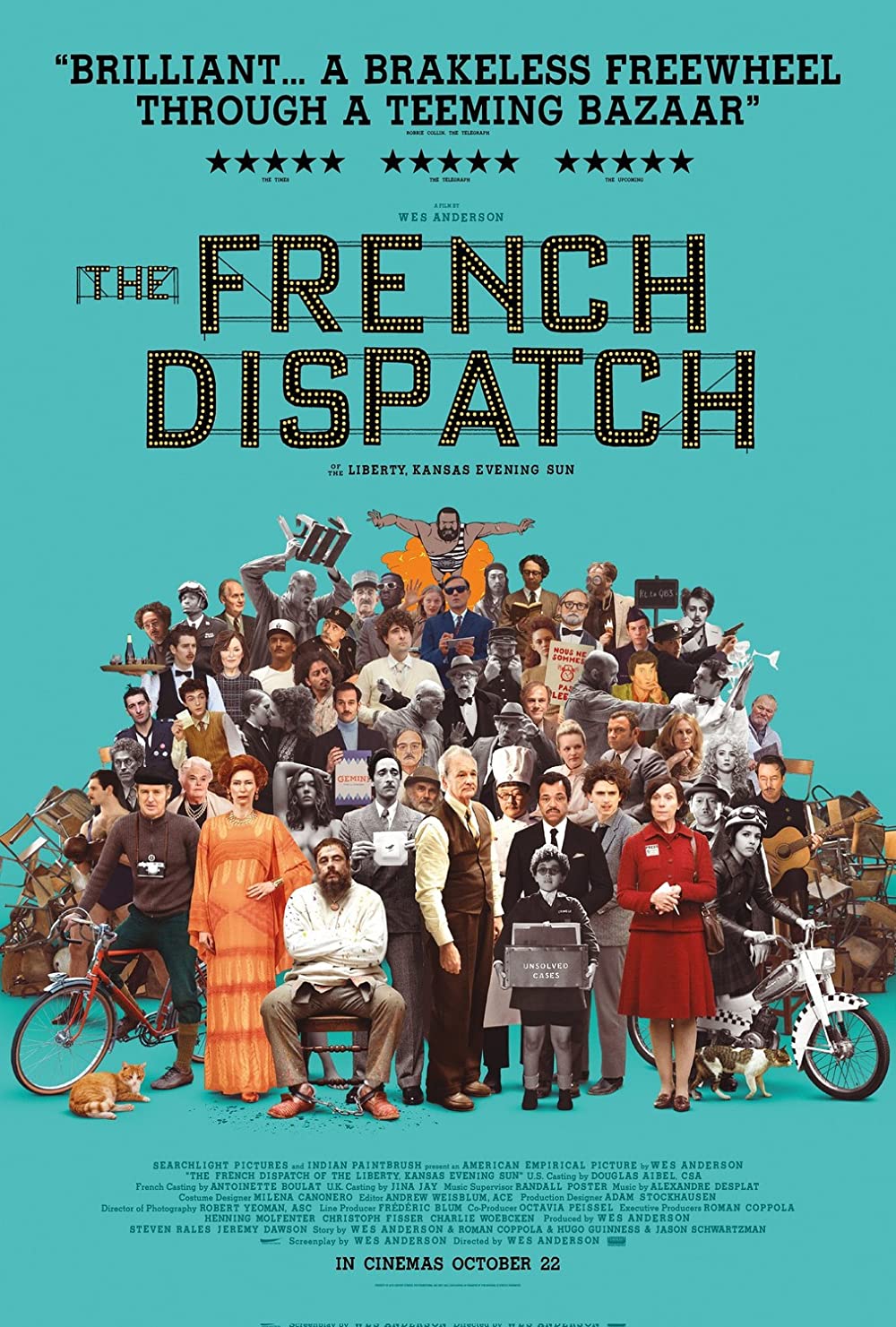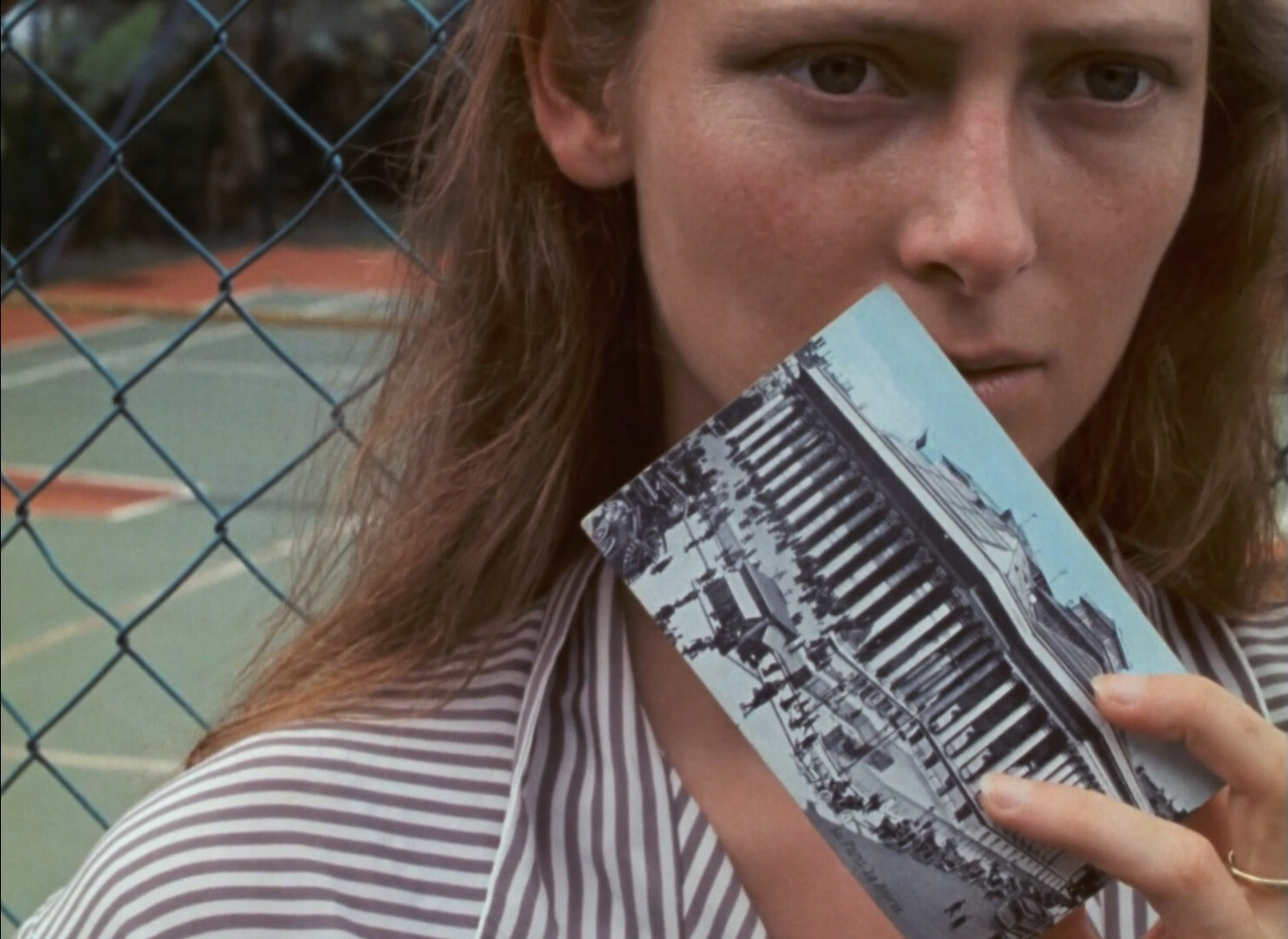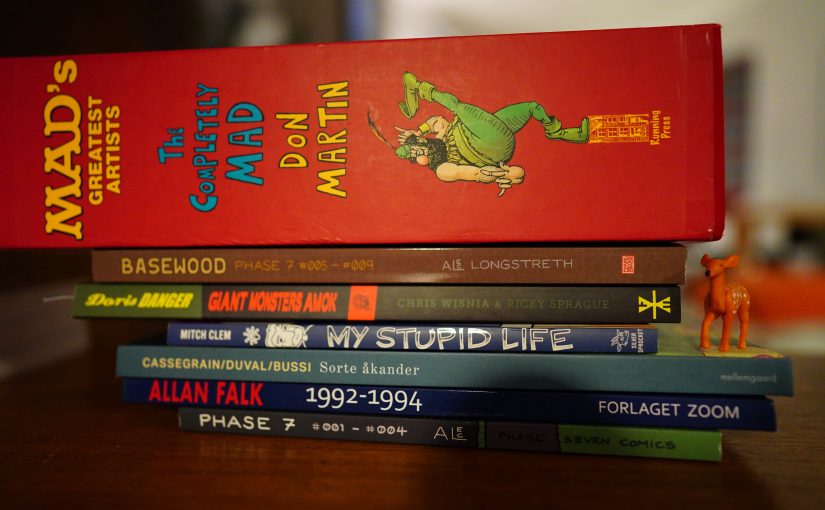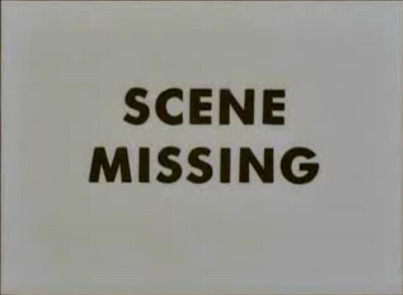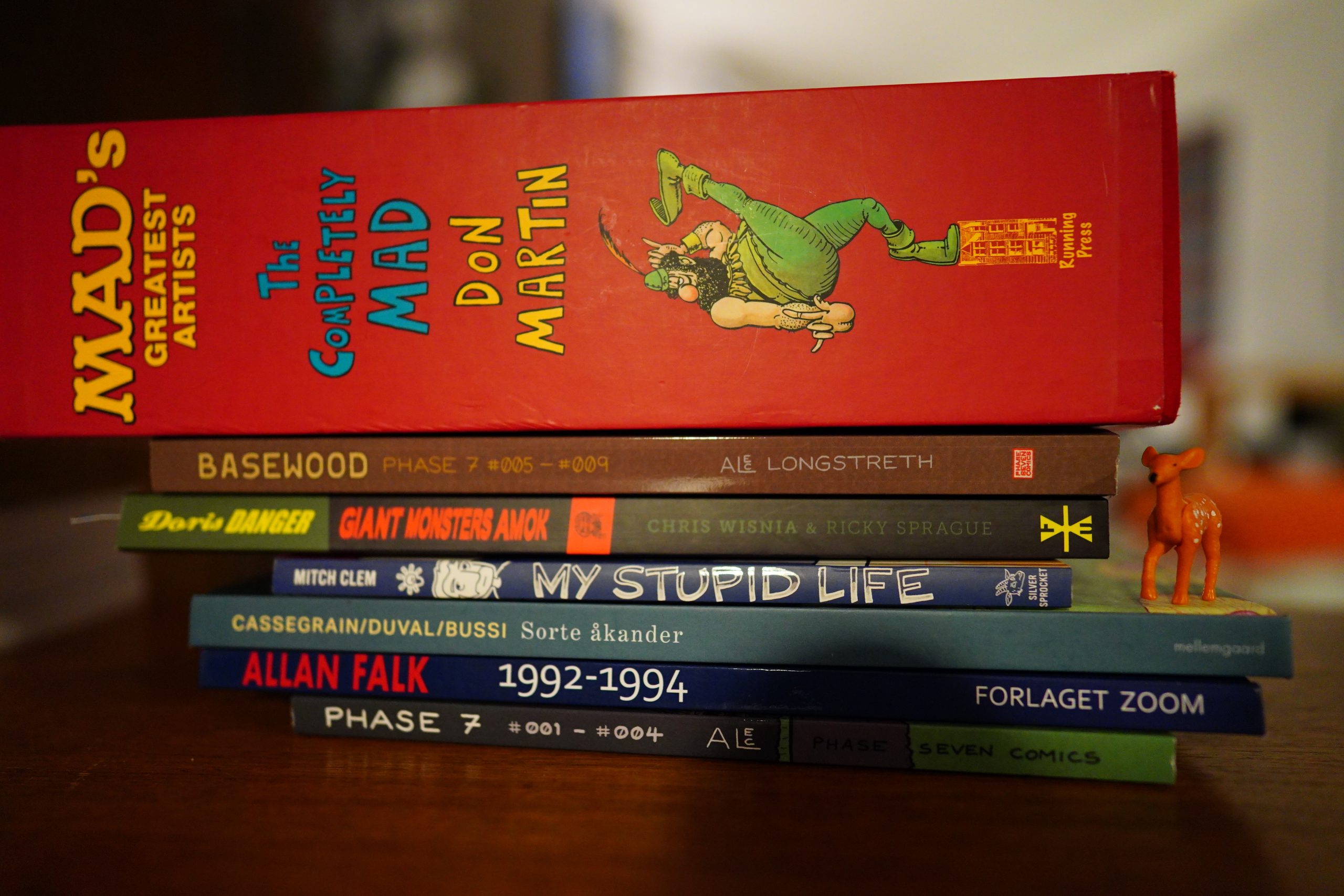
I was gonna do something completely different tonight, but then the balcony called to me. Let’s see if I can do comics dazing out here… Hm… looks like the wifi is marginal, so my camera takes forever to upload images.
Let’s try it anyway.
| Kitchens of Distinction: Watch Our Planet Circle (6): John Peel & Mark Radcliffe BBC Sessions | 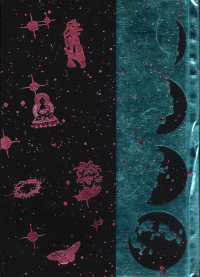 |
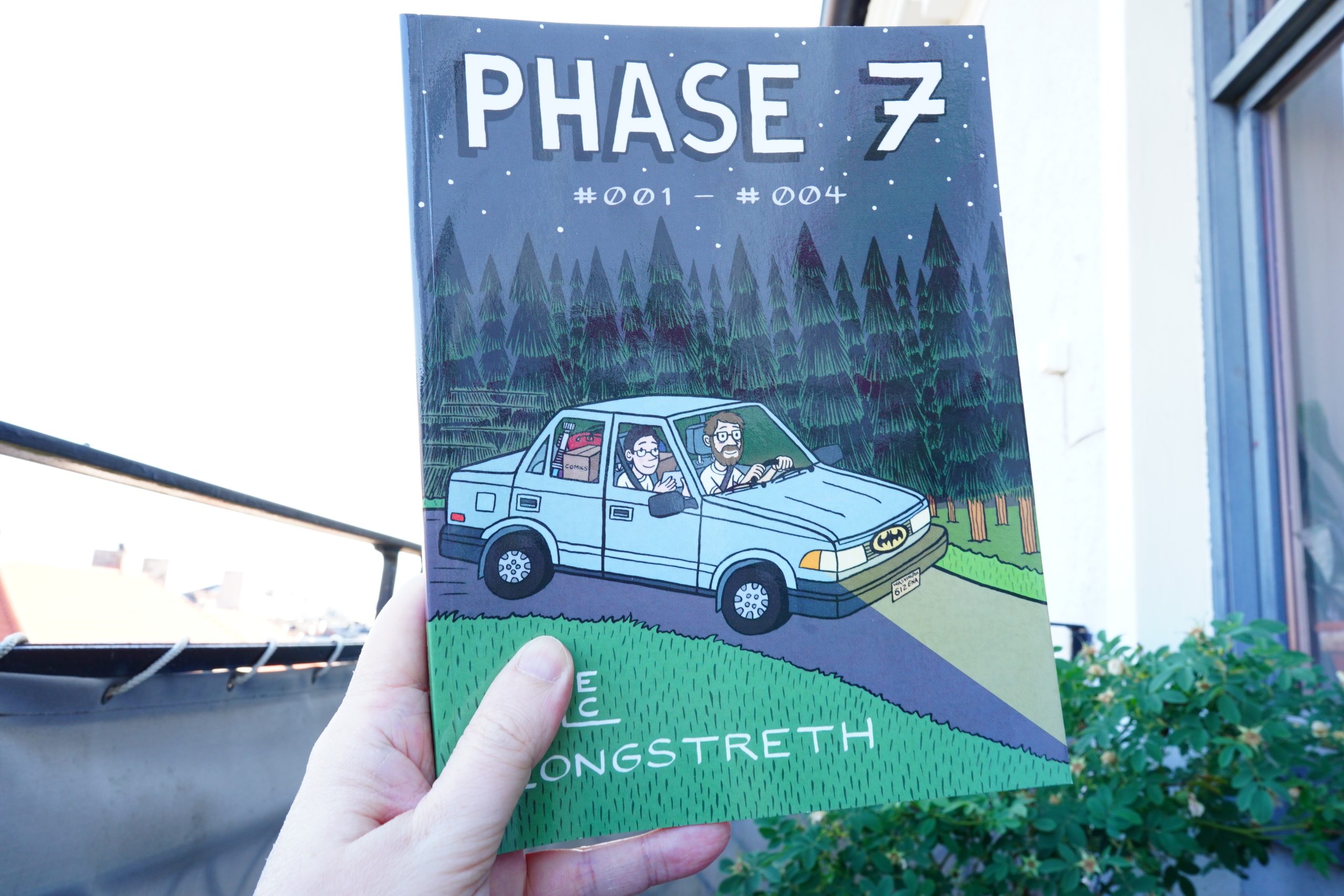
18:26: Phase 7 #1-4 by Alec Longstreth
Wow, I think I have to twiddle some settings… that was way too bright.
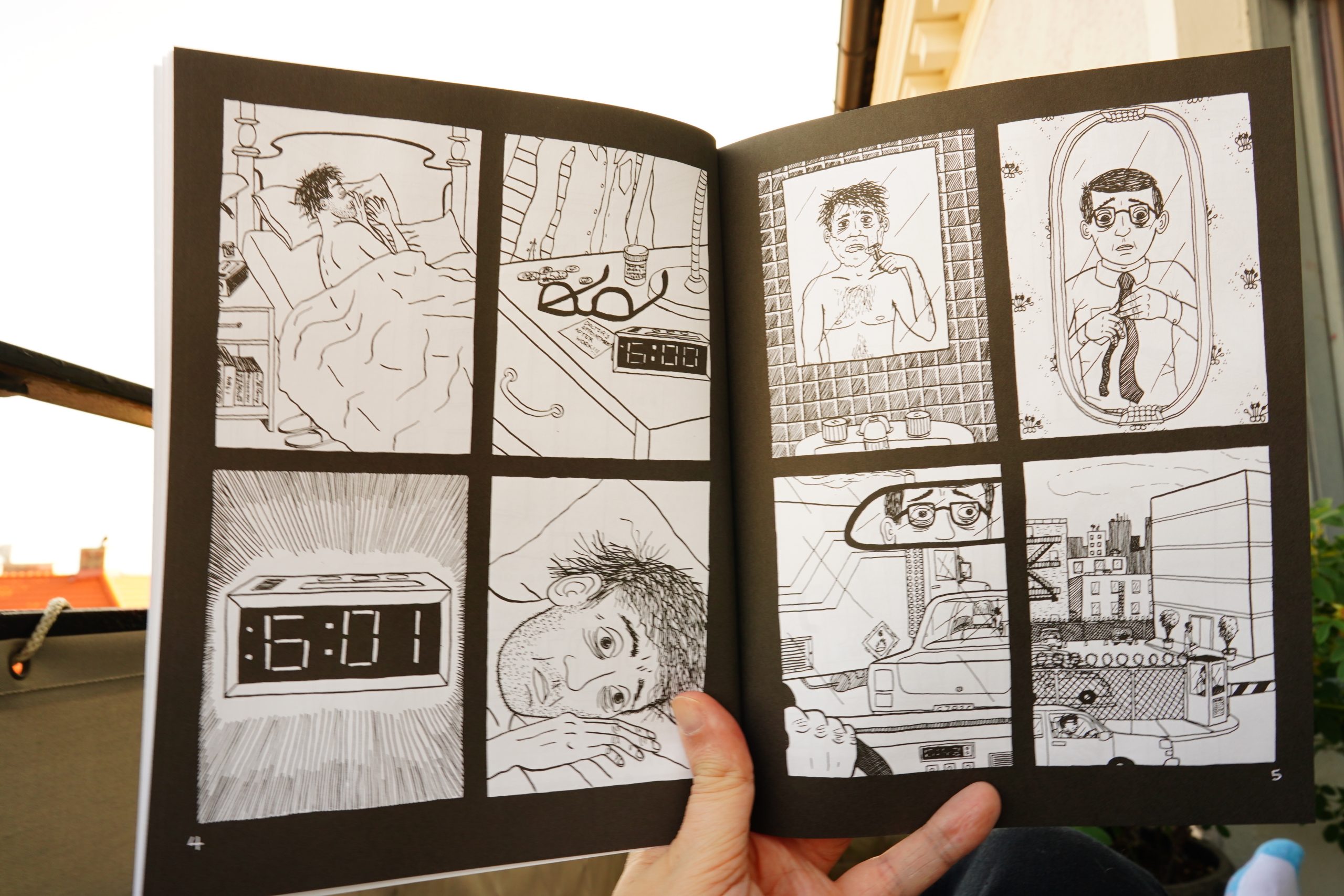
This book collects stuff Longstreth did in 2002-03-ish, and the first bits are somewhat tentative…
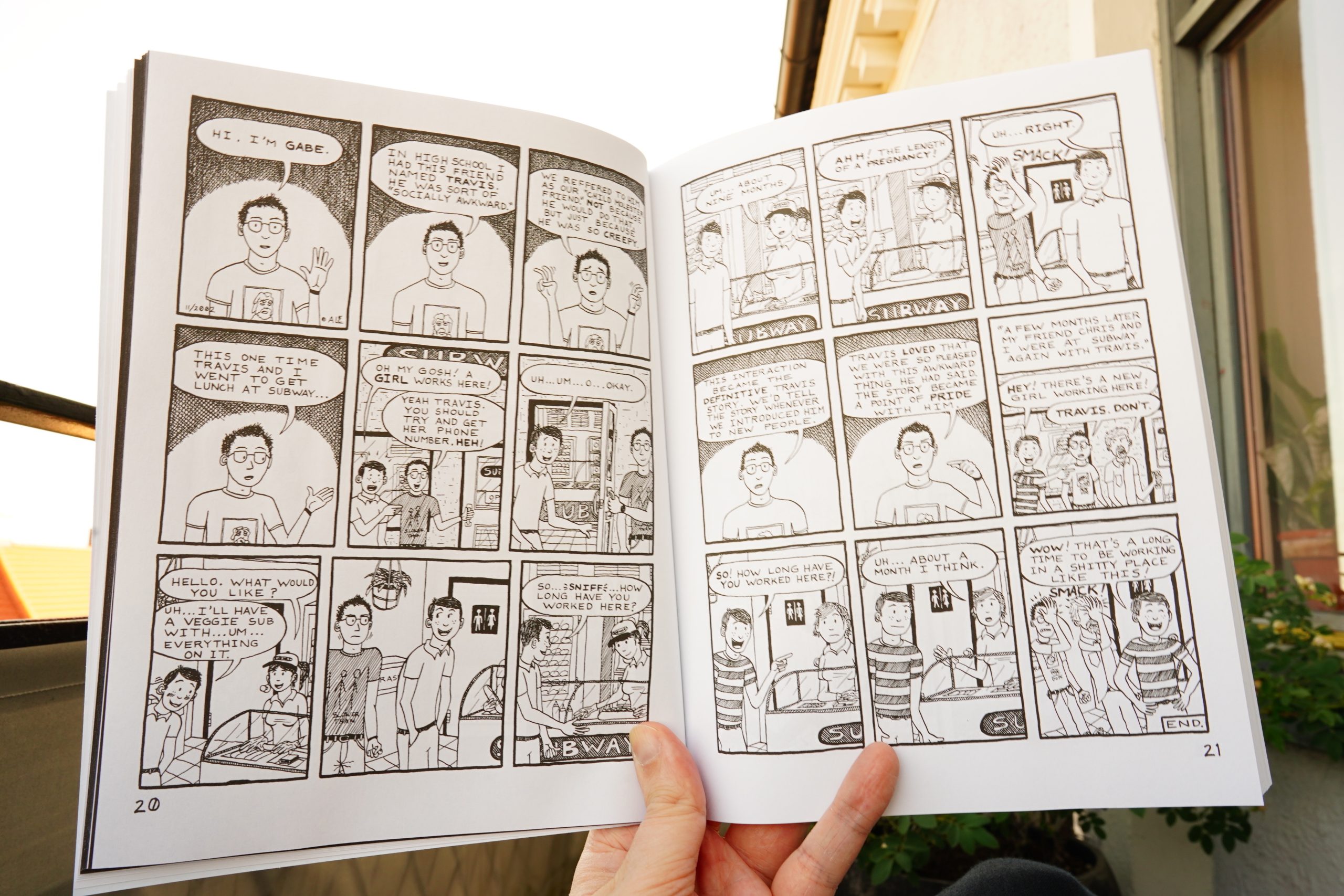
Mostly jokes.
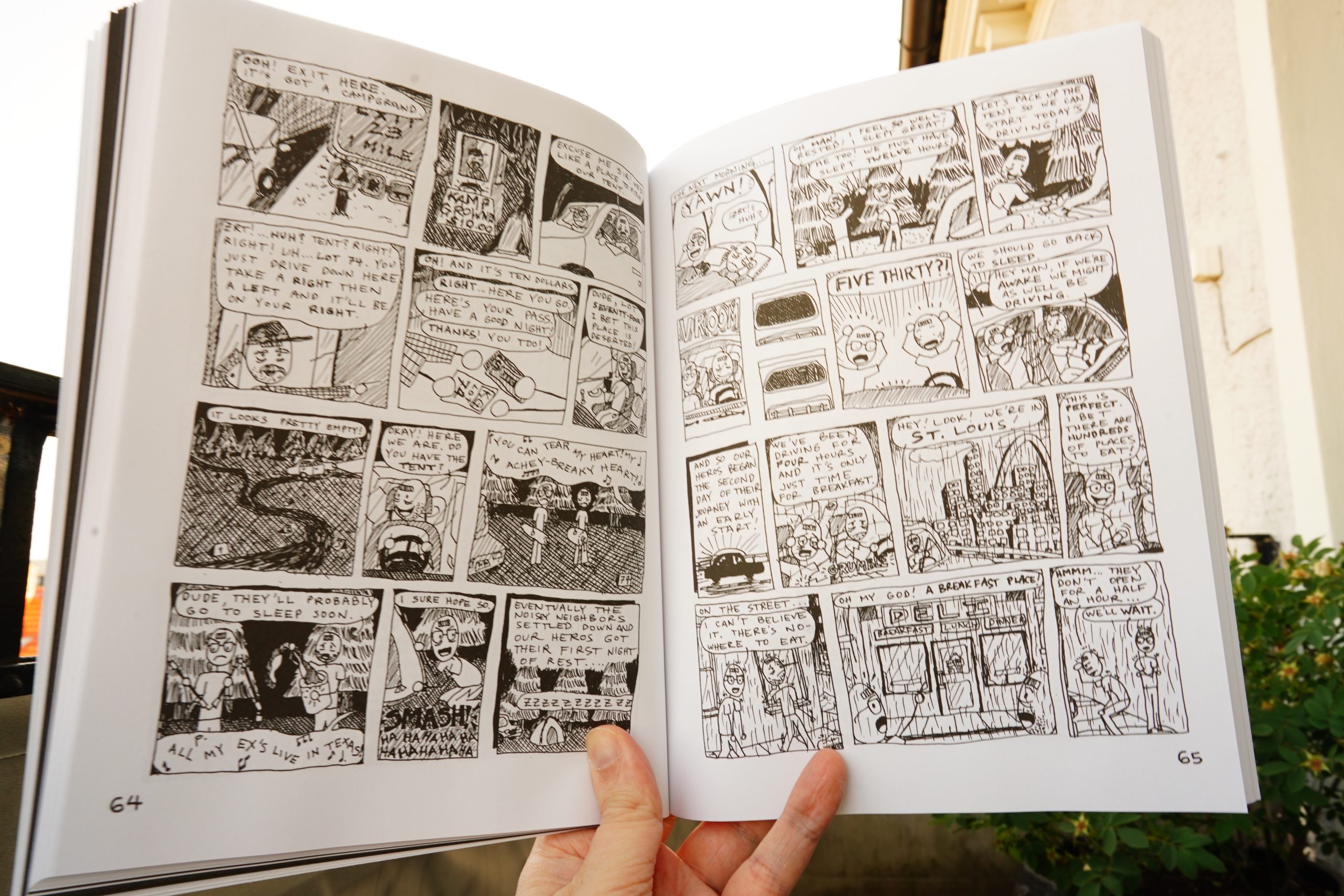
Things pick up significantly with the third issue, which is a long story about a road trip (and drawn in a much more sketch-like way).
| Shearwater: Shearwater Plays Lodger (2016 AV Club Version) |  |
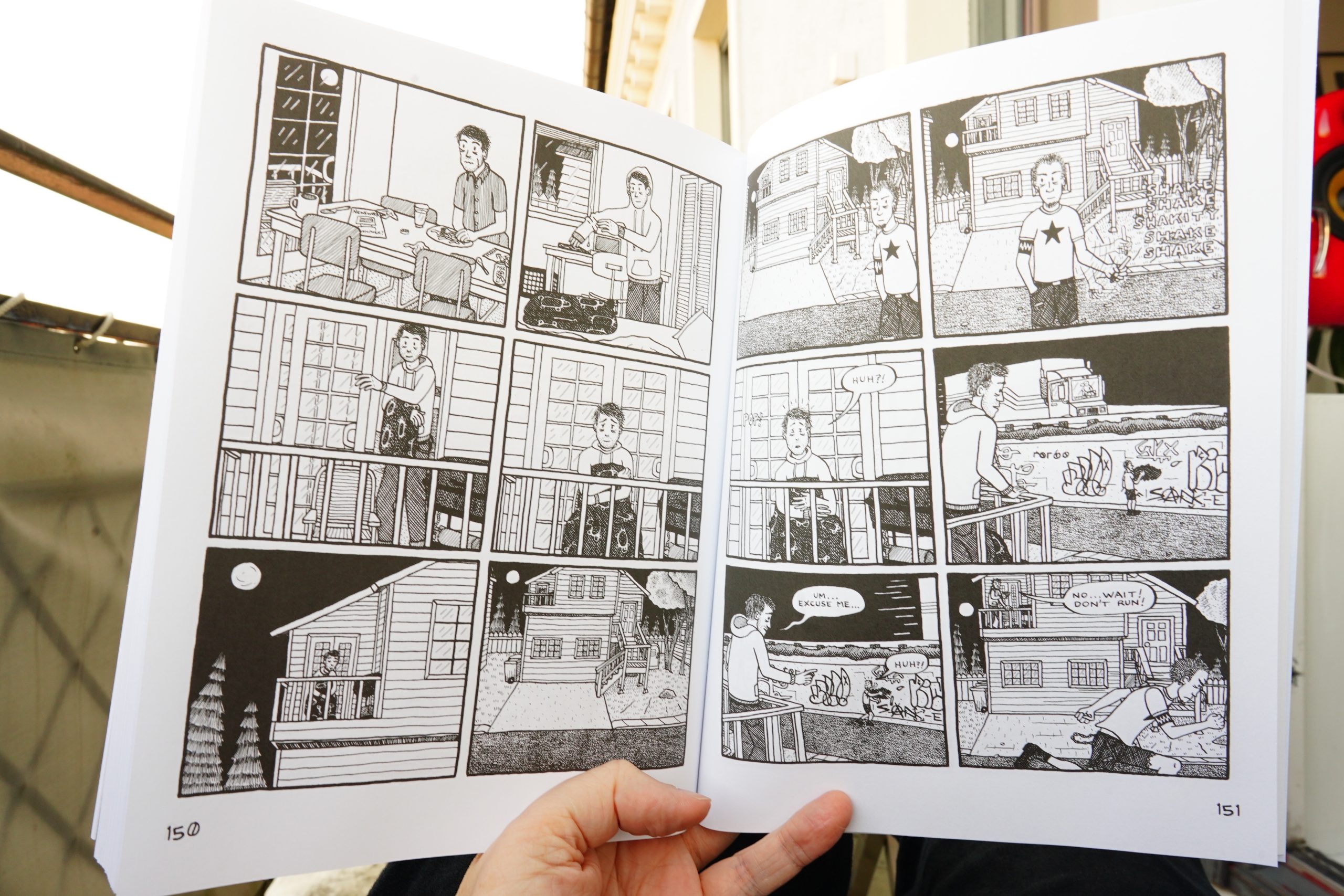
The fourth issue feels like a classic 90s indie comic (and I mean that in a good way).
It’s a pretty entertaining collection.
| Caroline Shaw & Attacca Quartet: Evergreen |  |
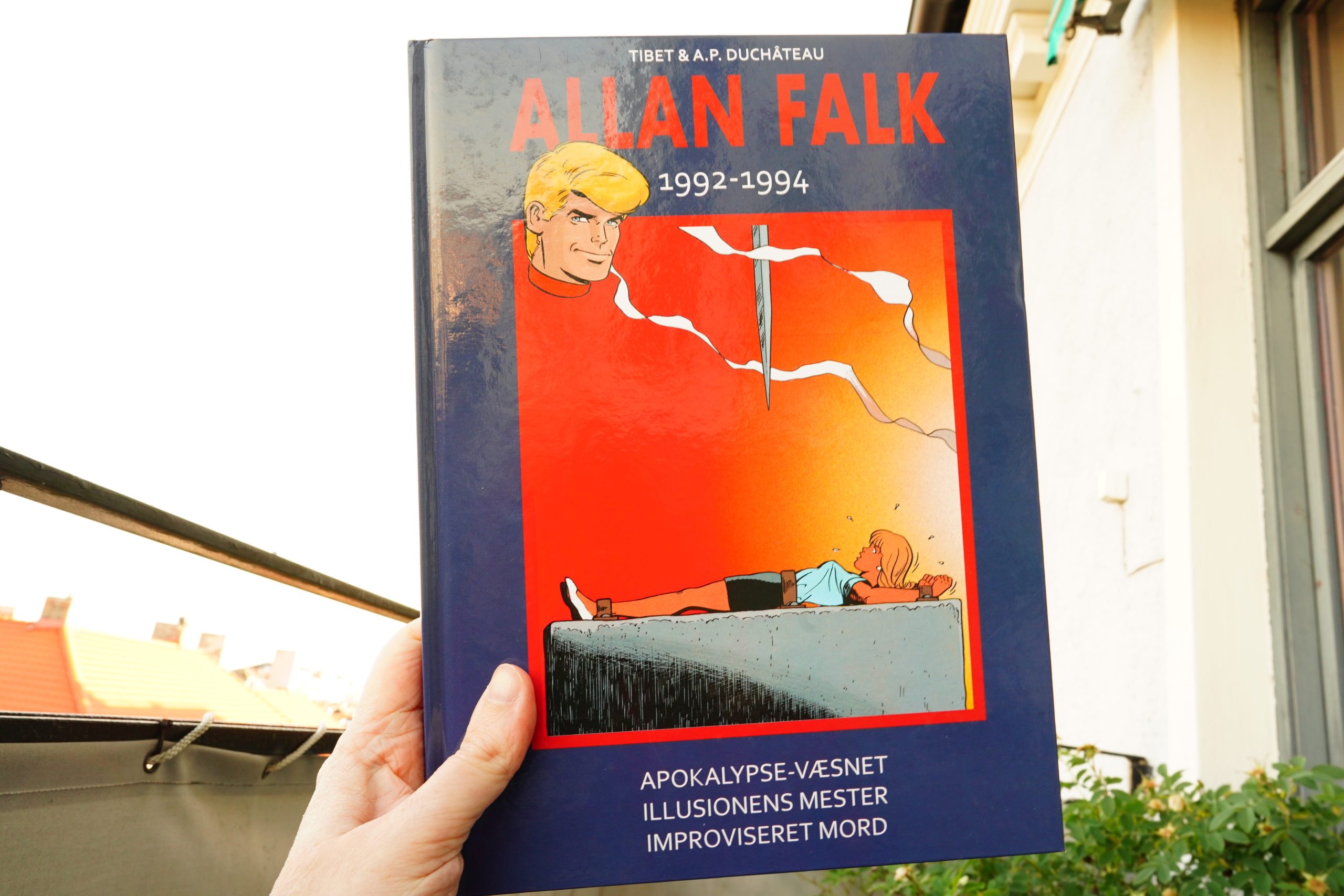
19:31: Ric Hochet 1992-1994 by Tibet & Duchateau (Zoom)
I bought a ton of these collections, and I don’t even like Ric Hochet that much. But they were on sale! So it makes total sense.
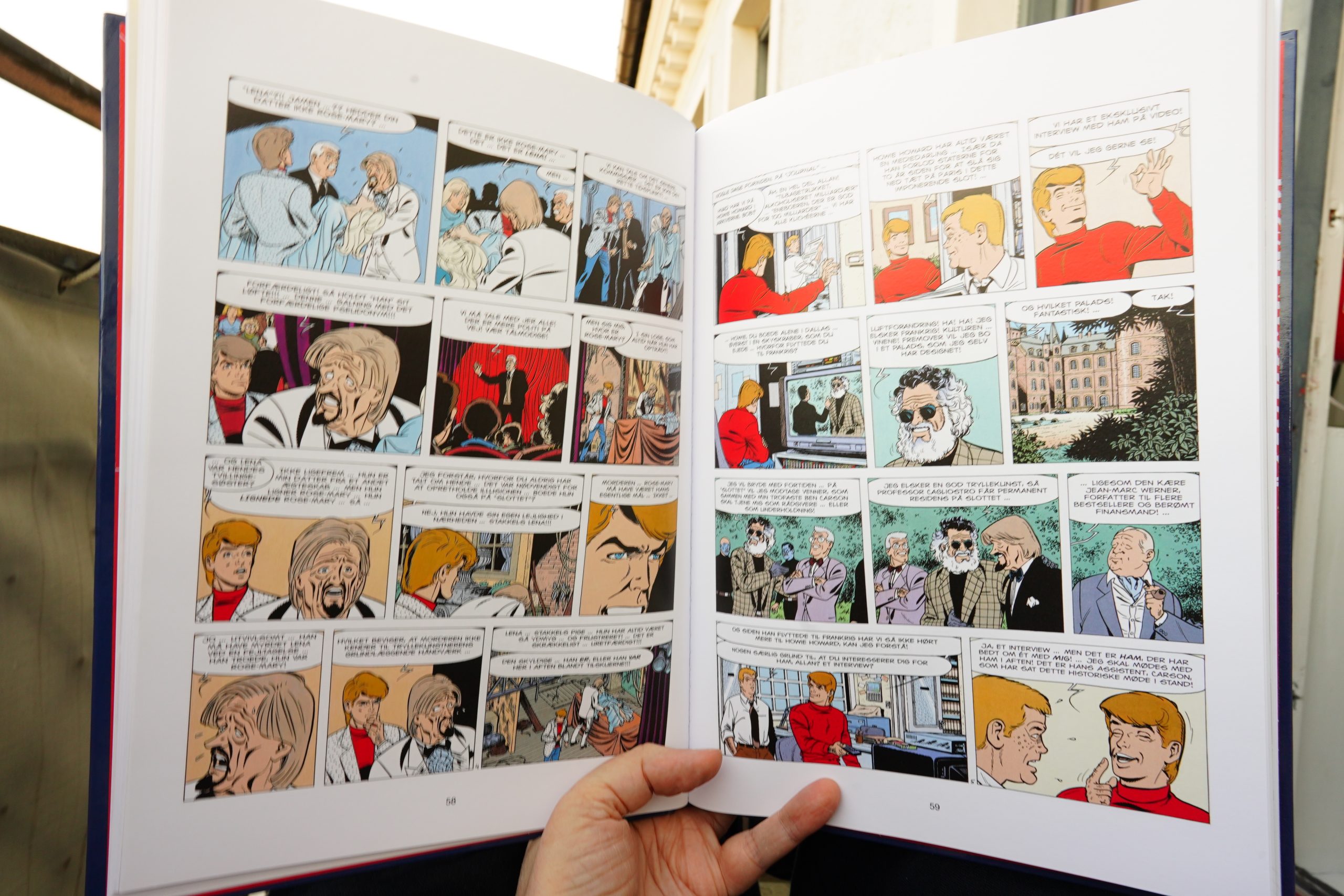
I’ve been working my way through these over a couple of years, and I manage to do one album about every two weeks…
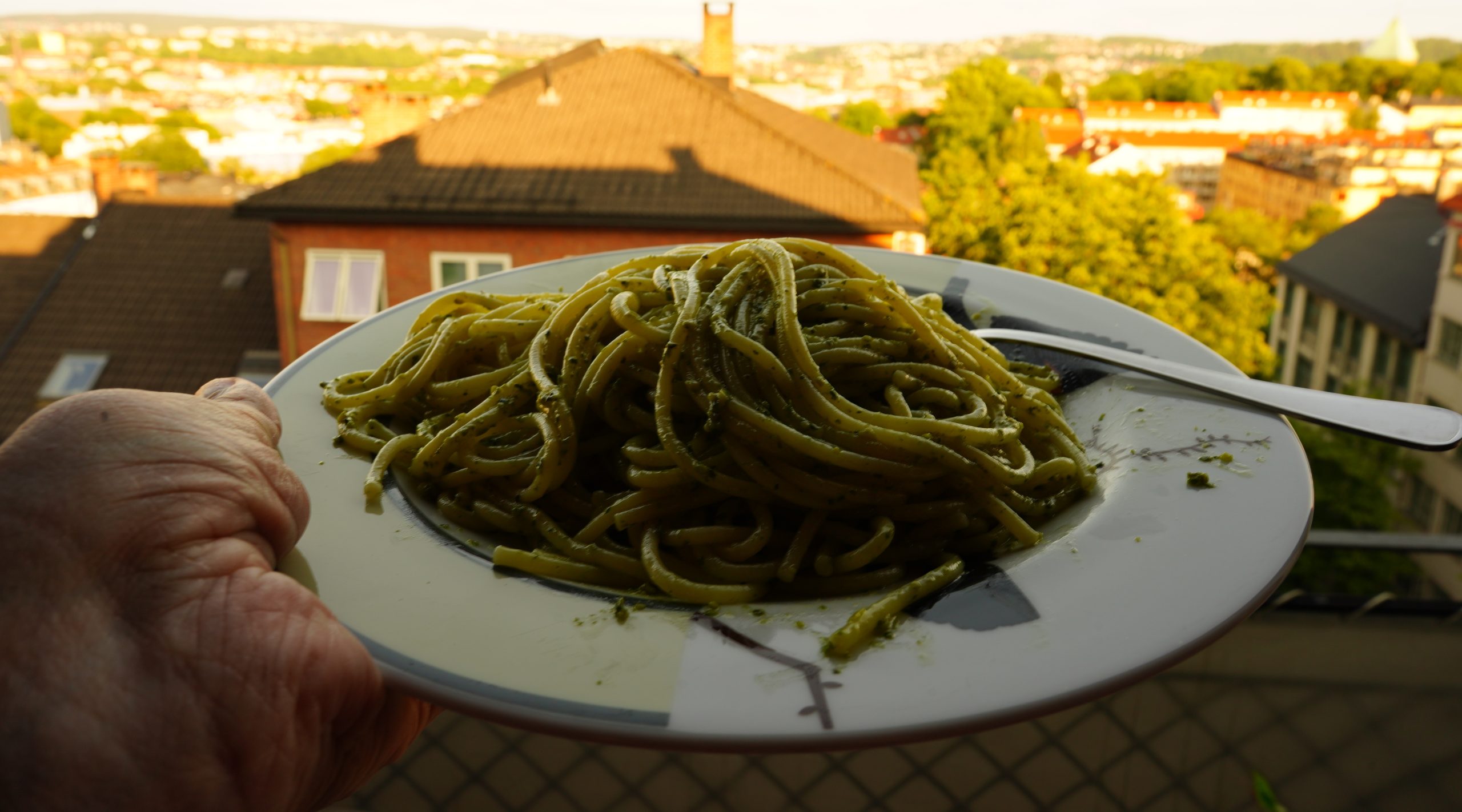
So let’s do one now while I eat some spaghetti’n’pesto. (I think I cooked too much spaghetti.)
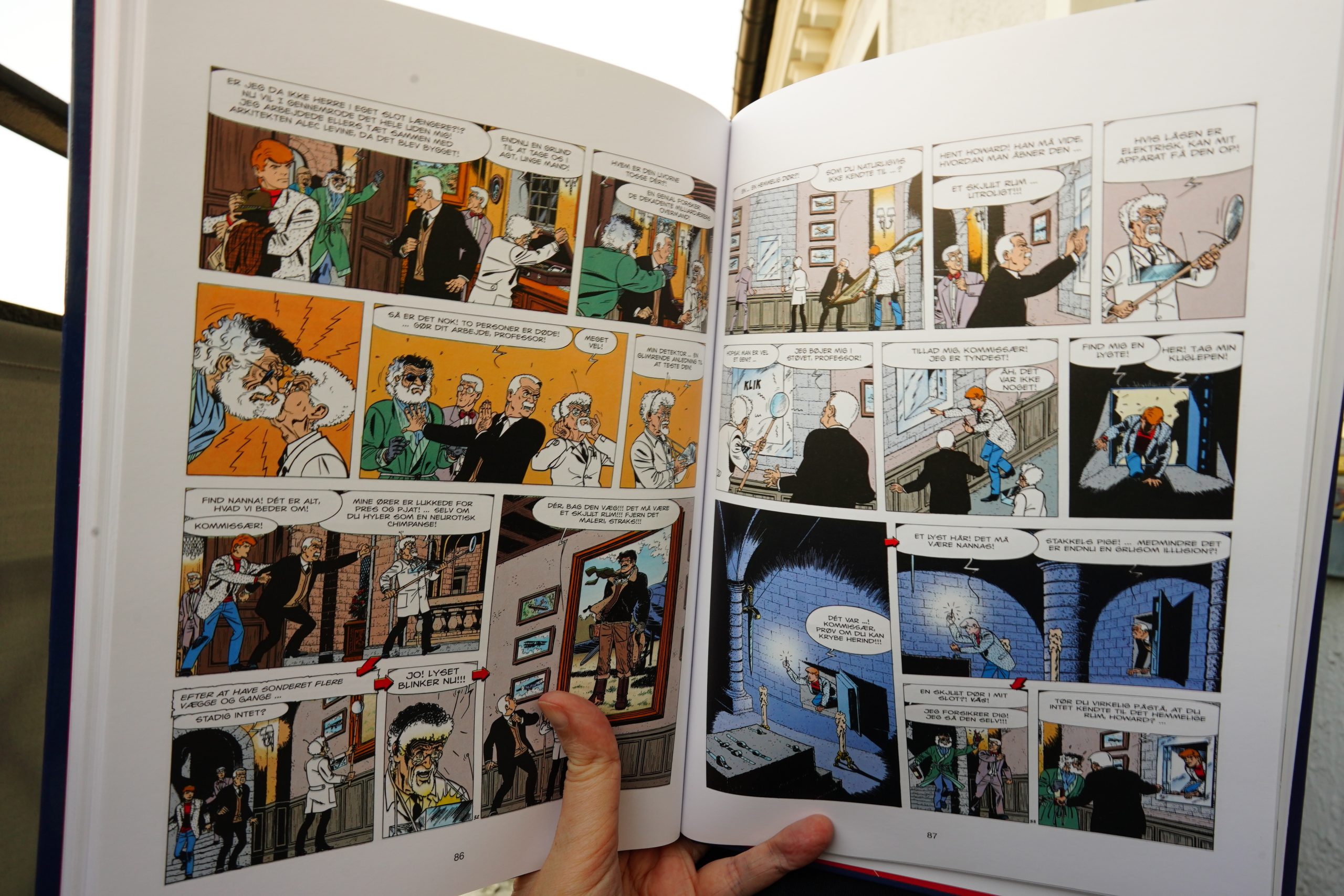
Some of these albums aren’t that bad — sometimes they come up with a plot that’s not all running around in castles until they run out of pages — but this is not one of those albums.
| Ellen Arkbro & Johan Graden: I get along without you very well | 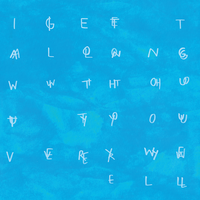 |
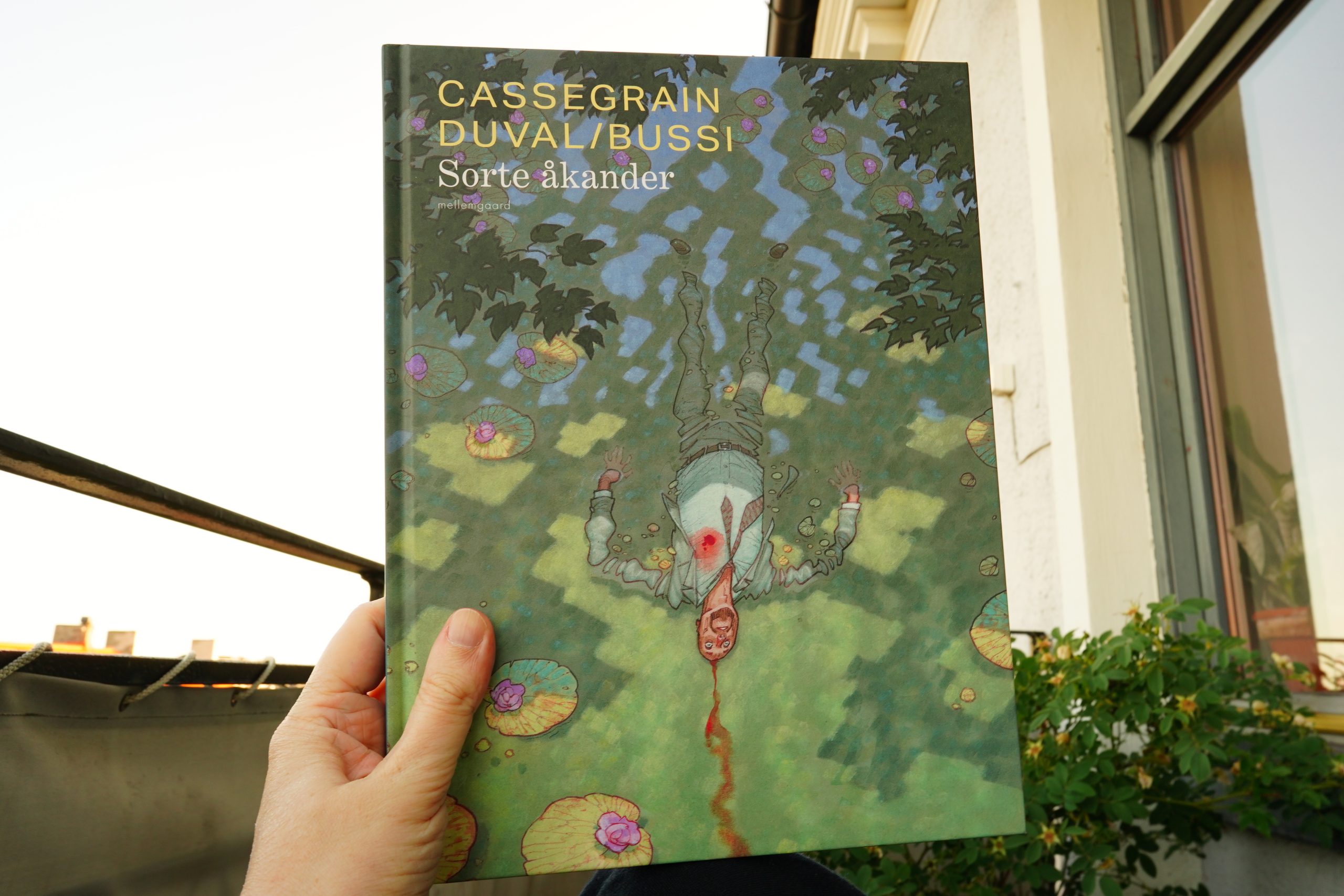
20:09: Nymphéas noirs by Cassegrain & Duval/Bussi (Mellemgaard)
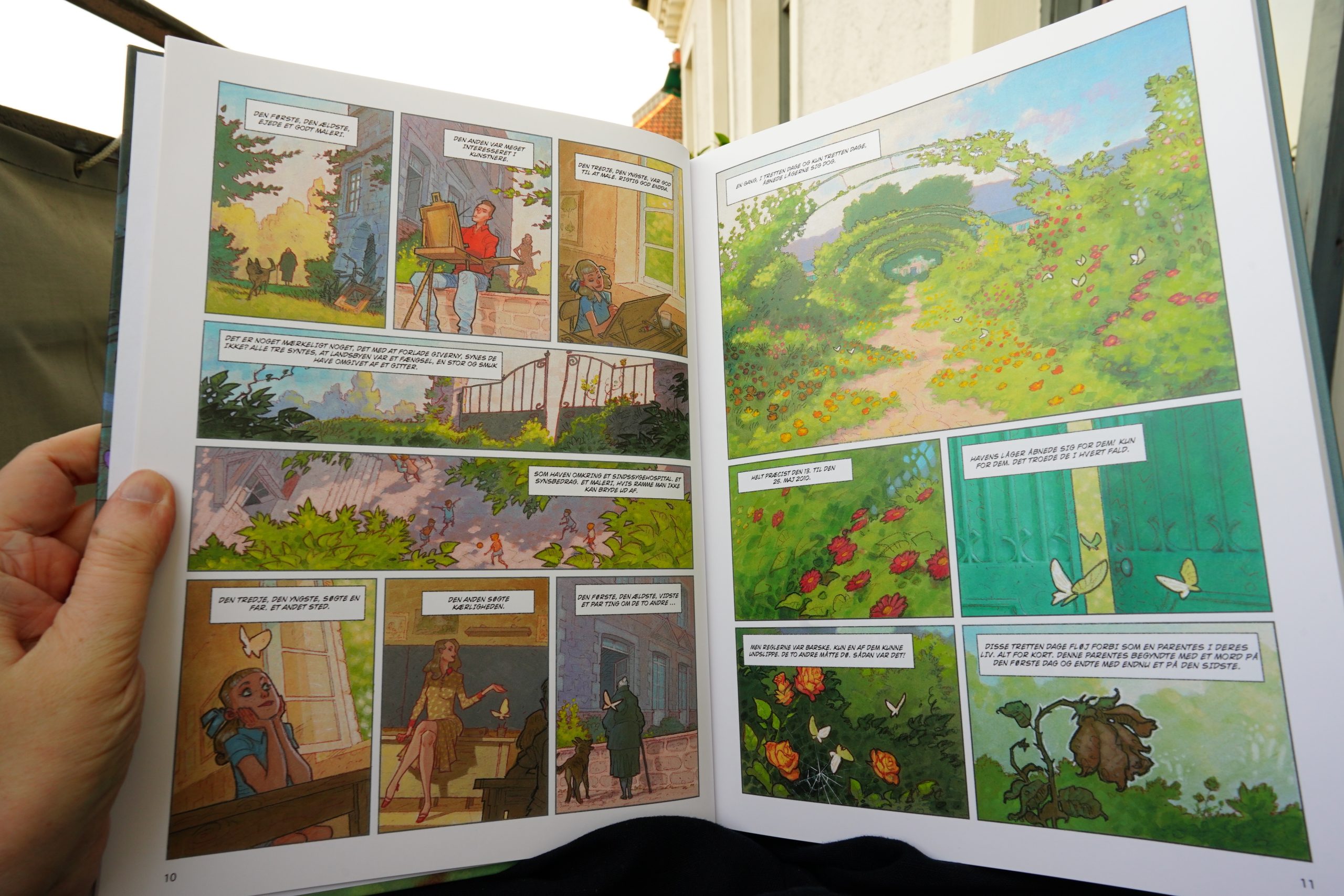
Hey, this looks quite attractive… I know nothing about any of the creators, but it French, at least.
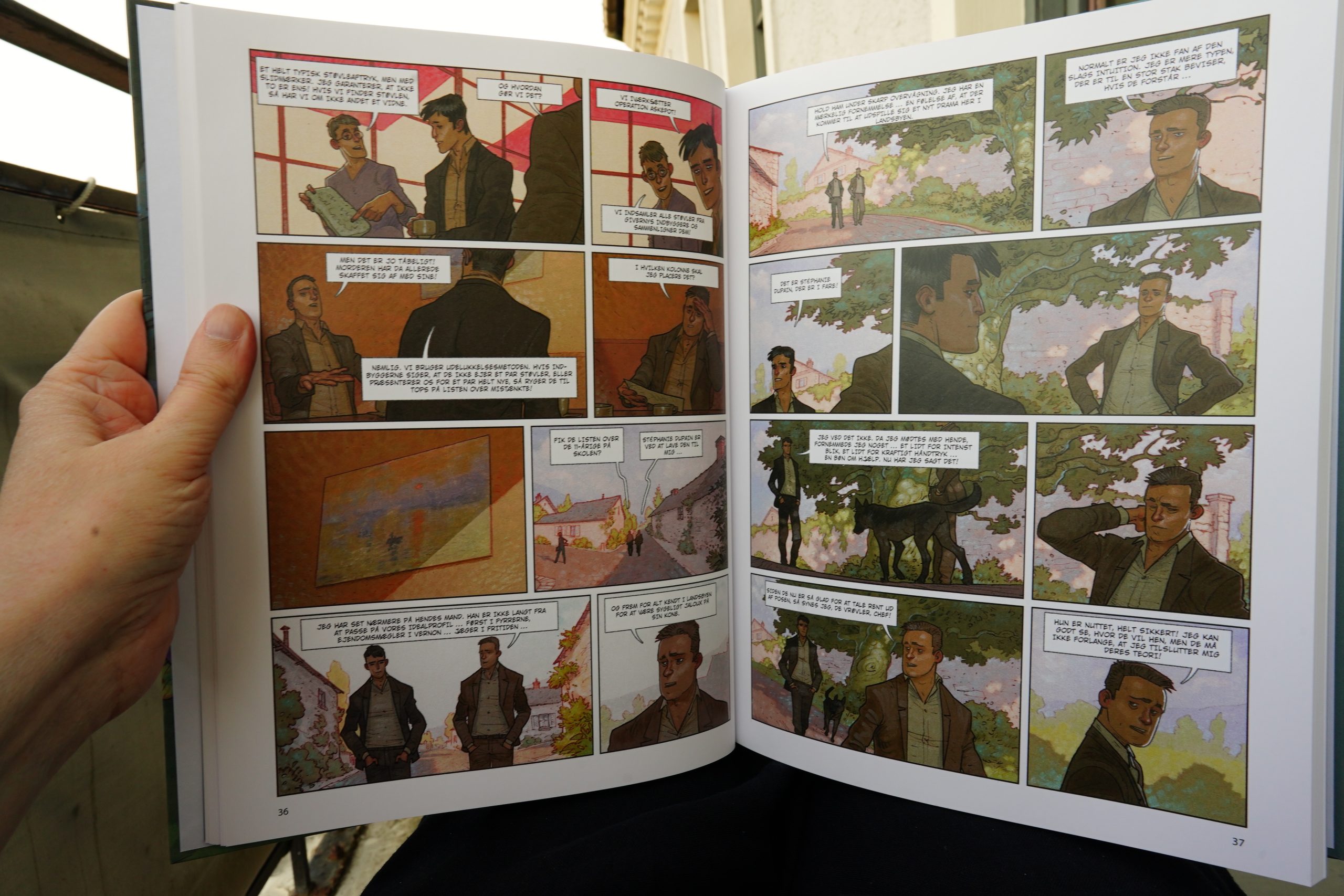
The plot is quite original (and convoluted). And told in a quite interesting way (it starts off as a fairytale, sort of, but then shifts to a police procedural) with an old woman (described by the introduction as being “malicious”)… It’s intriguing.
Brr, it’s getting cold. I’m going inside.
| µ-Ziq: Hello-Goodbye | 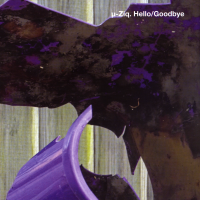 |
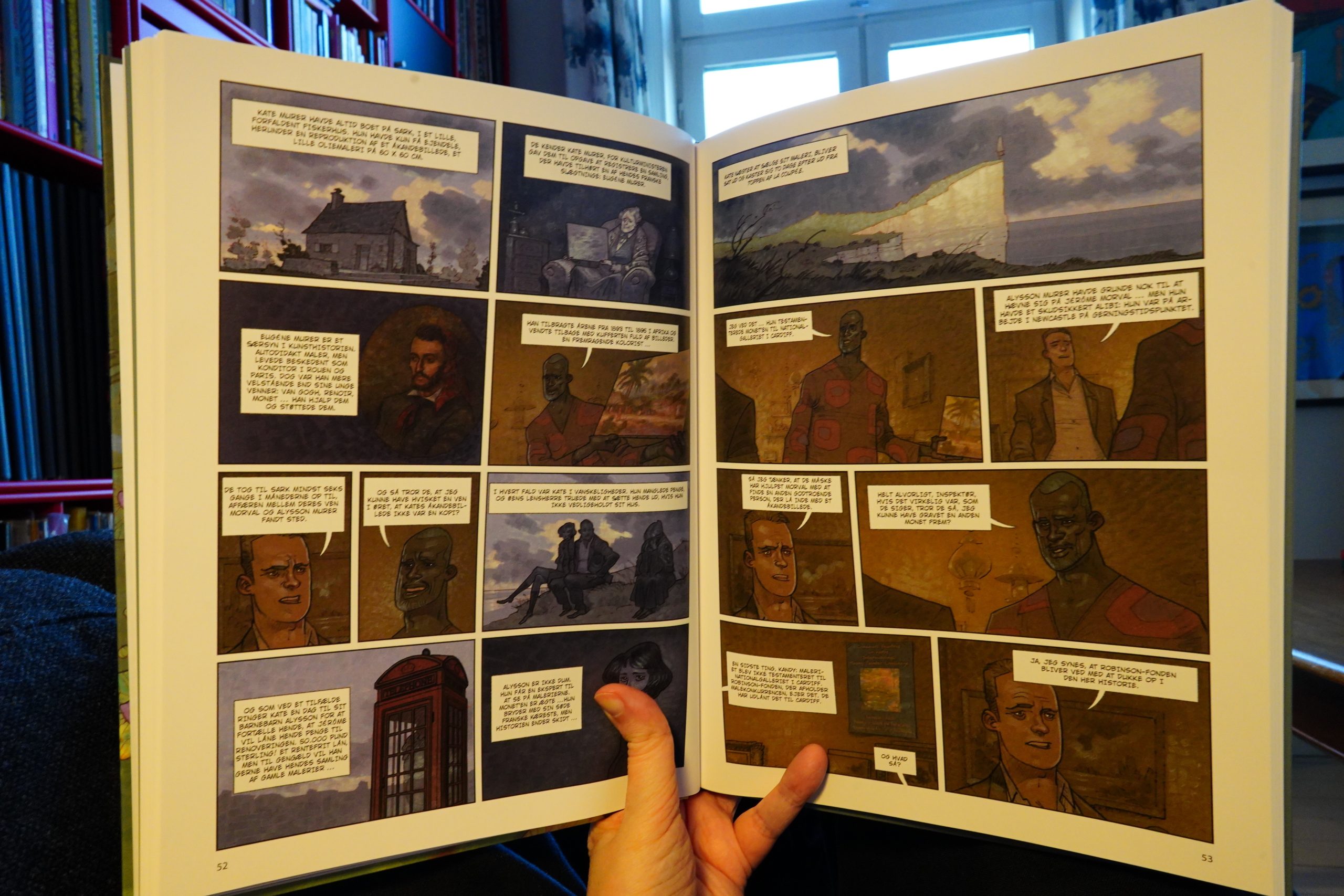
The problem is scenes like this, and the book is 80% just talking heads like this. The artist does mix things up slightly, but there are too many panels that look xeroxed — I mean, look at the three panels with the white guy talking: The same angle, the same expression, almost the same framing.
There scenes are not very exciting to read.
But! Then we get to the end, and man. That’s some twist ending! After reading it I spent ten minutes flipping through the book again to see whether they’d cheated, but no — everything fits together, I think. That’s incredibly clever and intricate plotting, and I didn’t see it coming at all.
So… great show!
| Horse Lords: Comradely Objects | 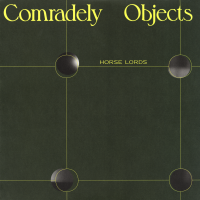 |
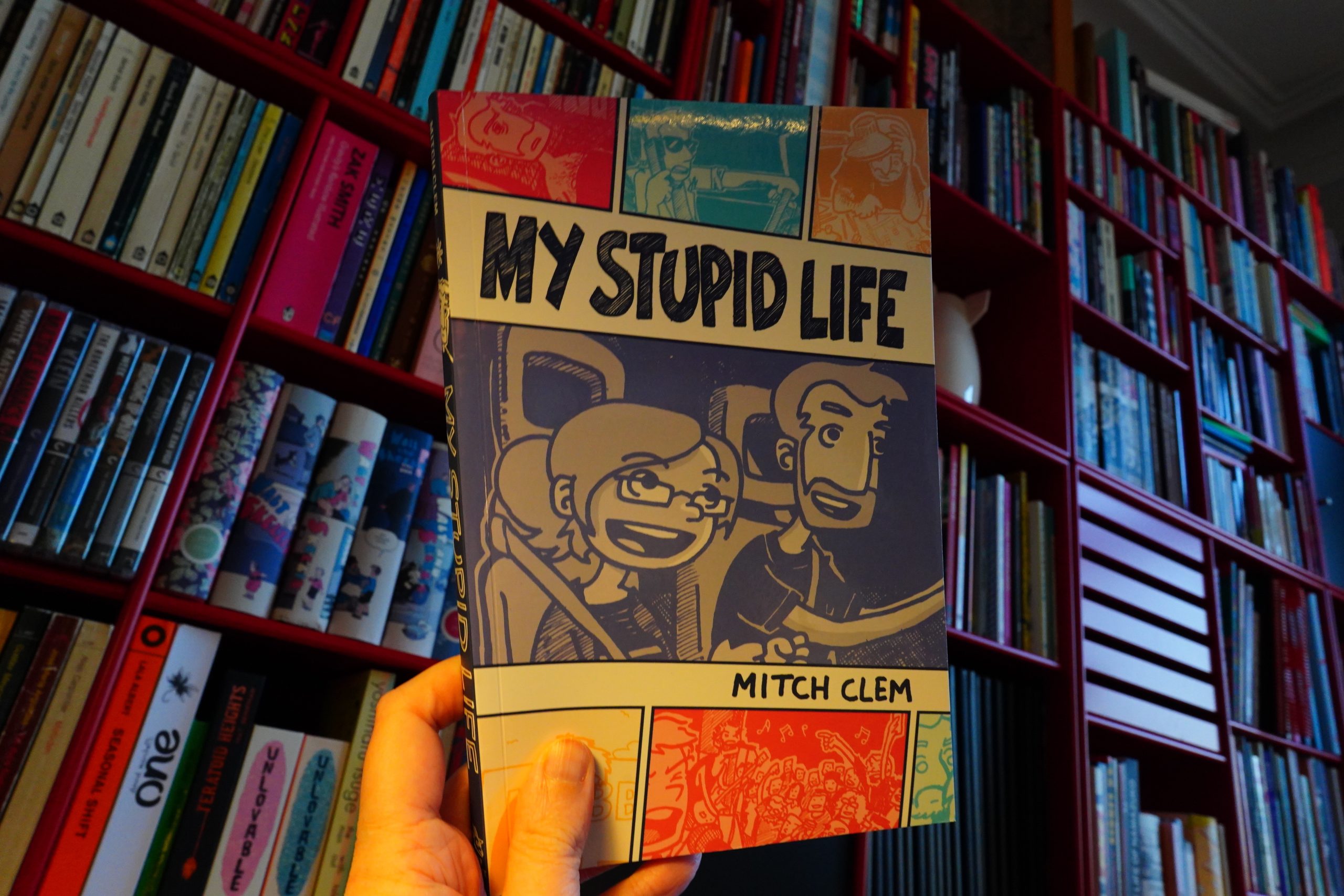
21:54: My Stupid Life by Mitch Clem (Silver Sprocket)
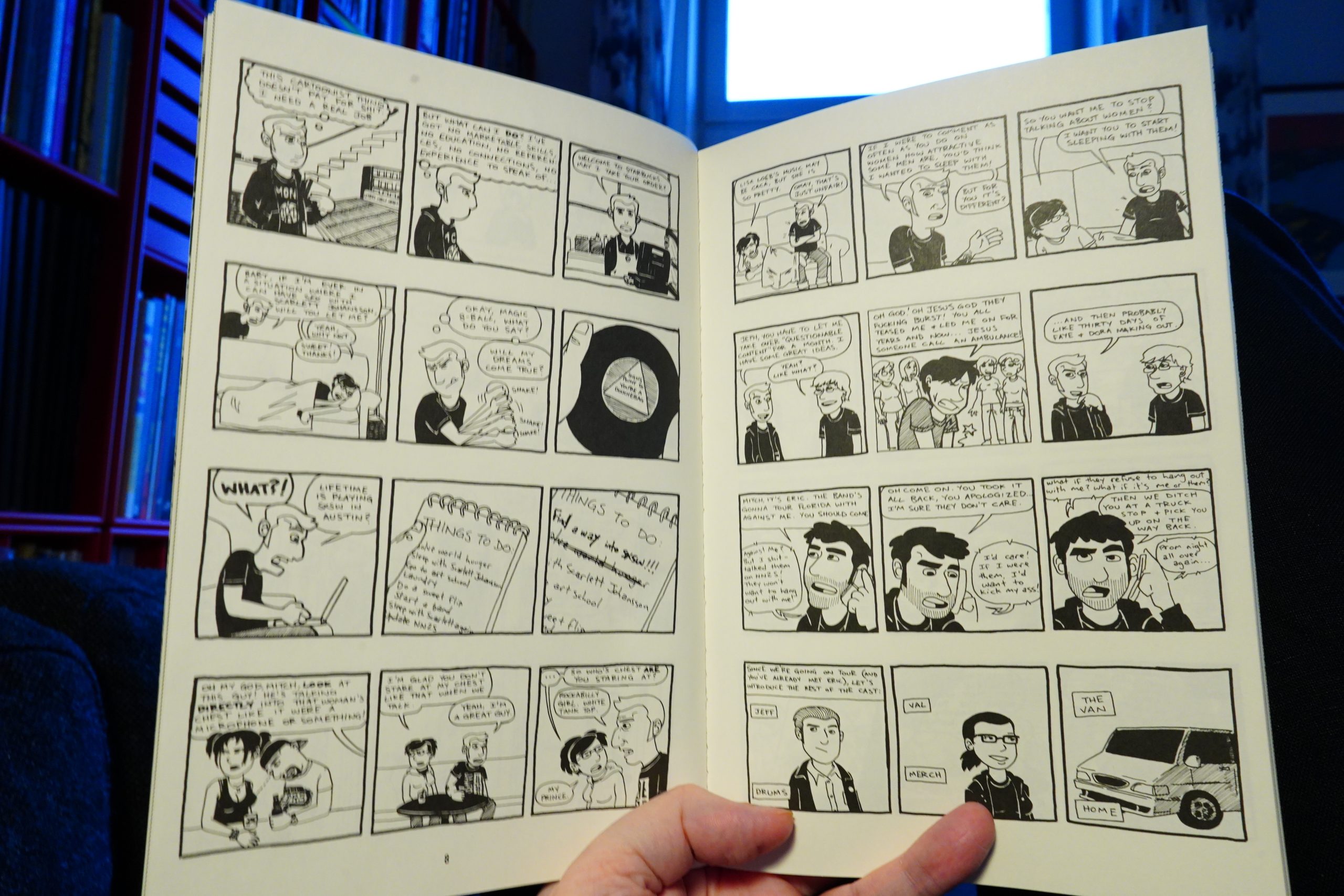
Oh, right… these are daily autobio strips (in the tradition of Snake Pit, I guess). But these are a whole lot more gag oriented, and perhaps everything he’s depicting here didn’t, like, actually happen? (And he’s really into depicting himself being semi-assholish, which is fun.)
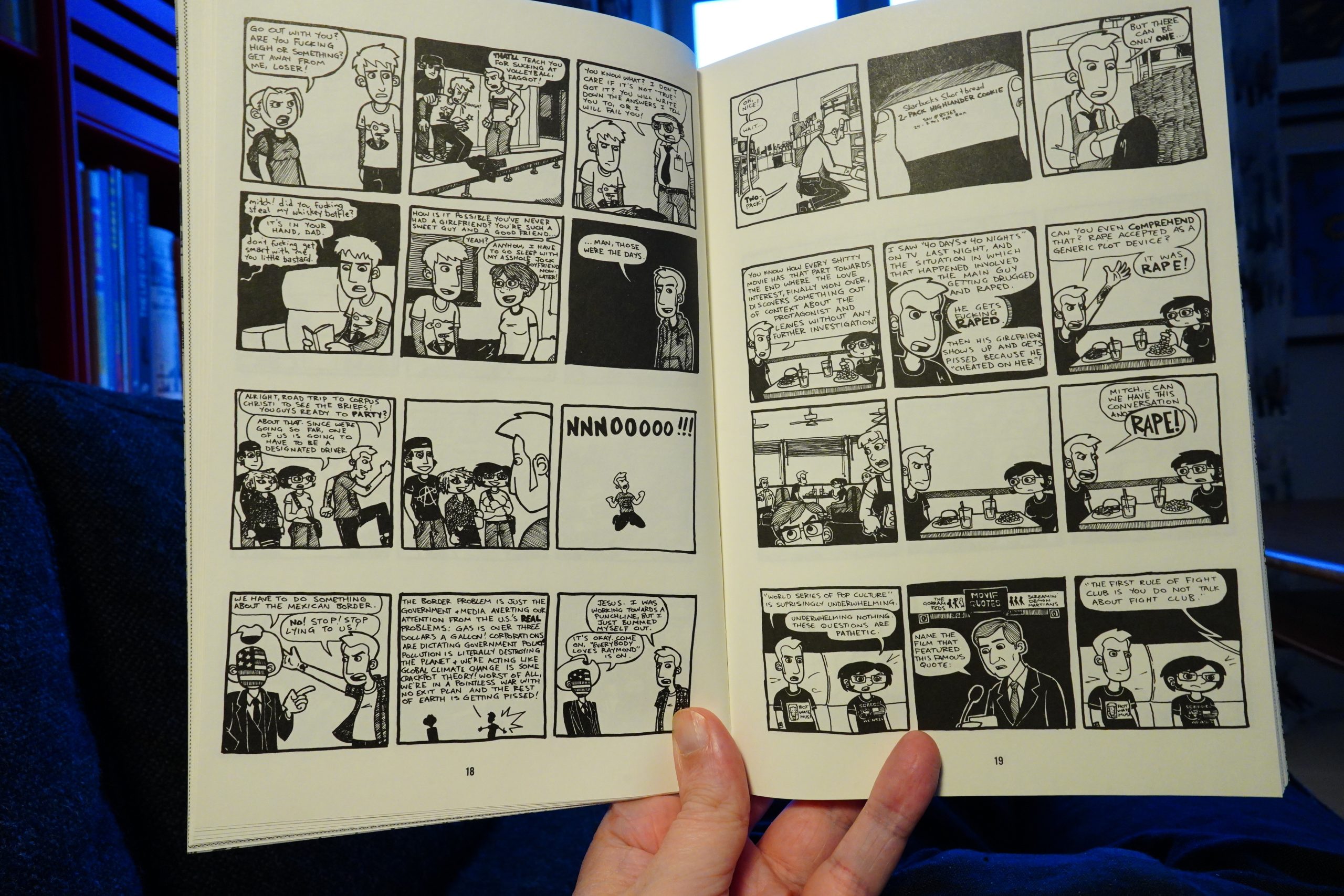
It’s pretty funny, but the gags are a bit hit or miss. I like the artwork, which reminds me more than a little of Evan Dorkin?
Anyway, this is the kind of stuff I like to read a few pages of before going to bed, so I stopped reading a quarter in and I’m saving the rest for later.
| Fontaines D.C.: Skinty Fia | 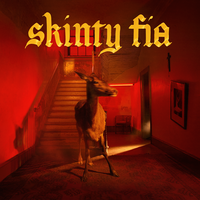 |
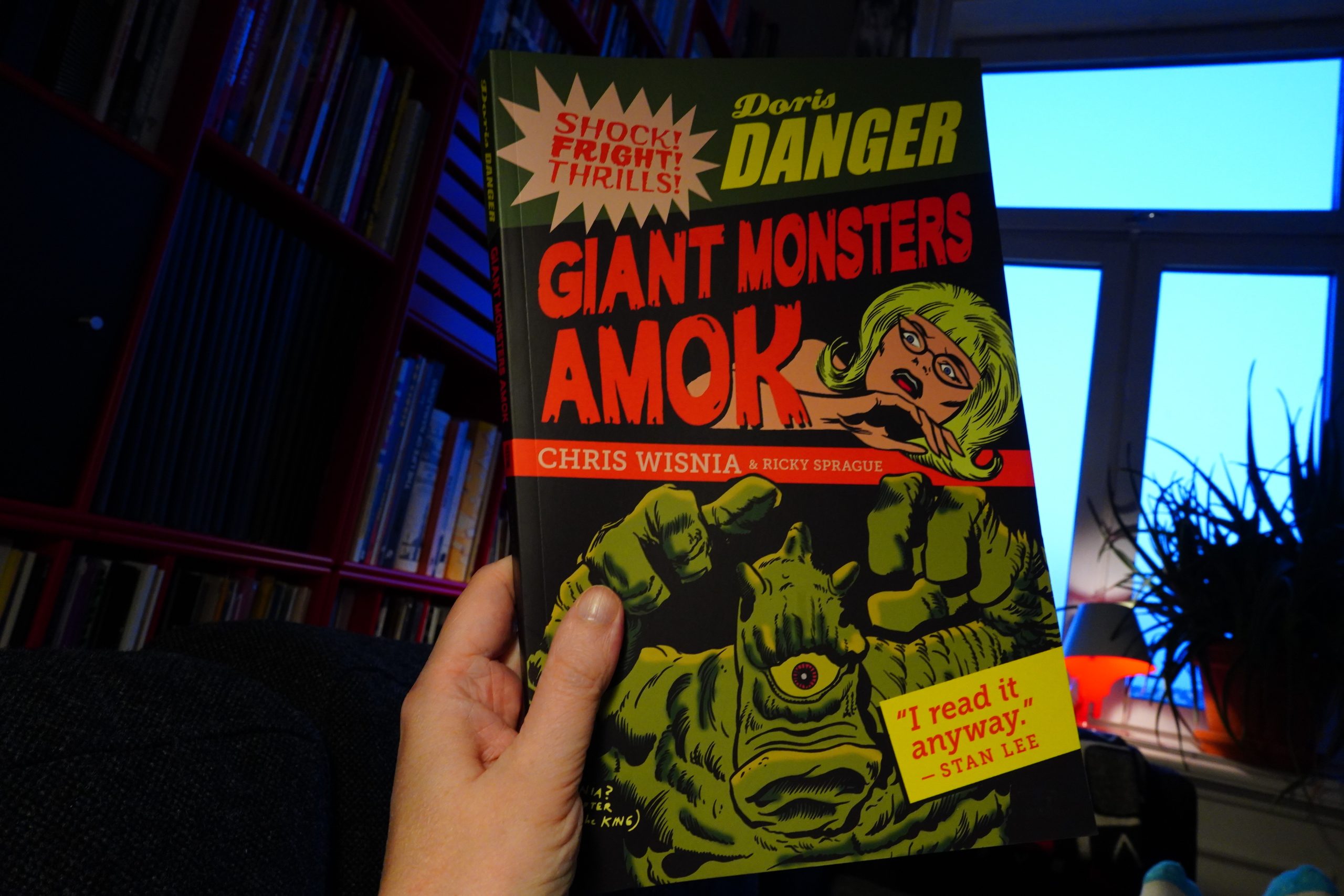
22:48: Doris Danger: Giant Monsters Amok by Chris Wisnia & Ricky Sprague (Fantagraphics)
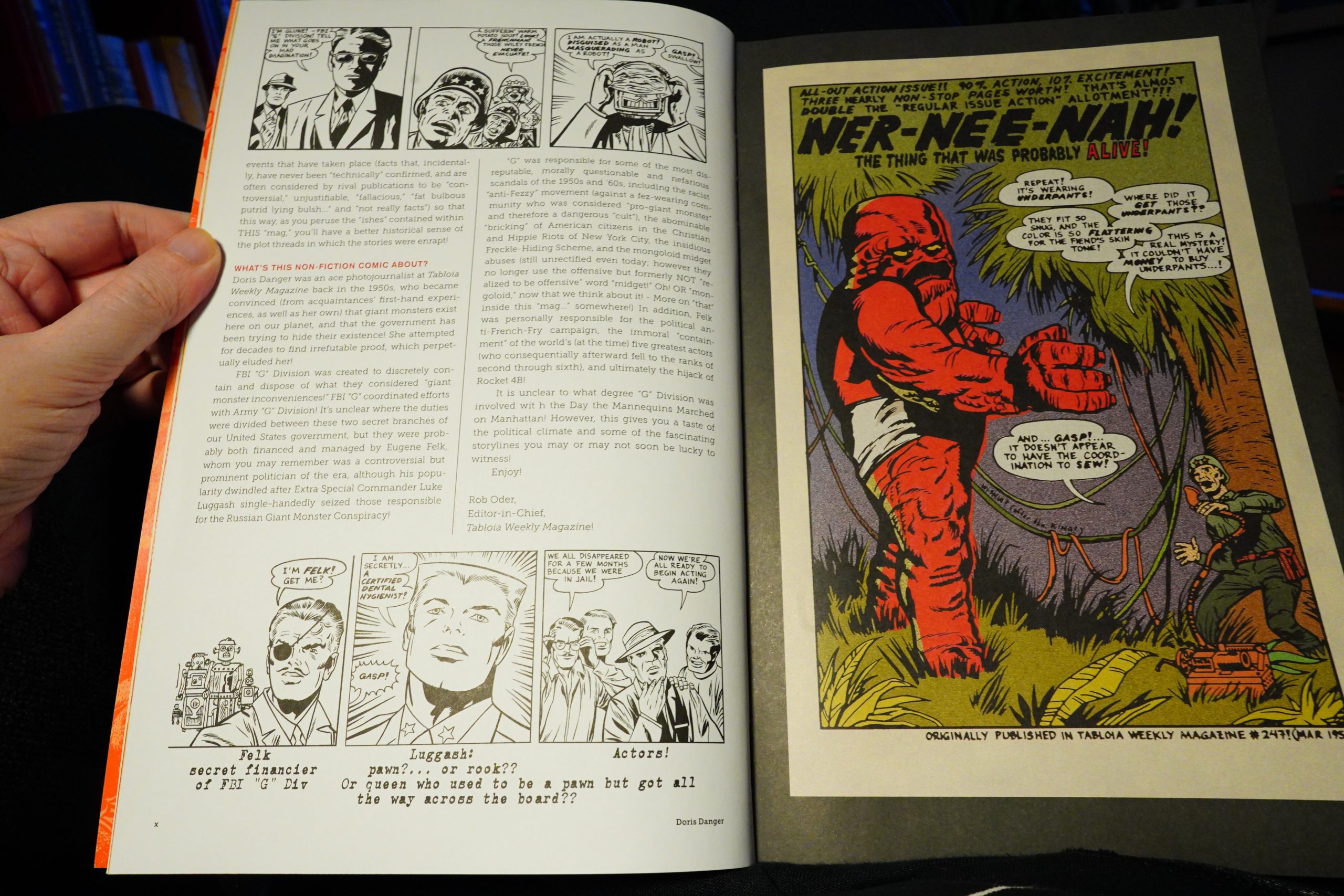
So, is this one of those books where you take public domain comics and add new dialogue?
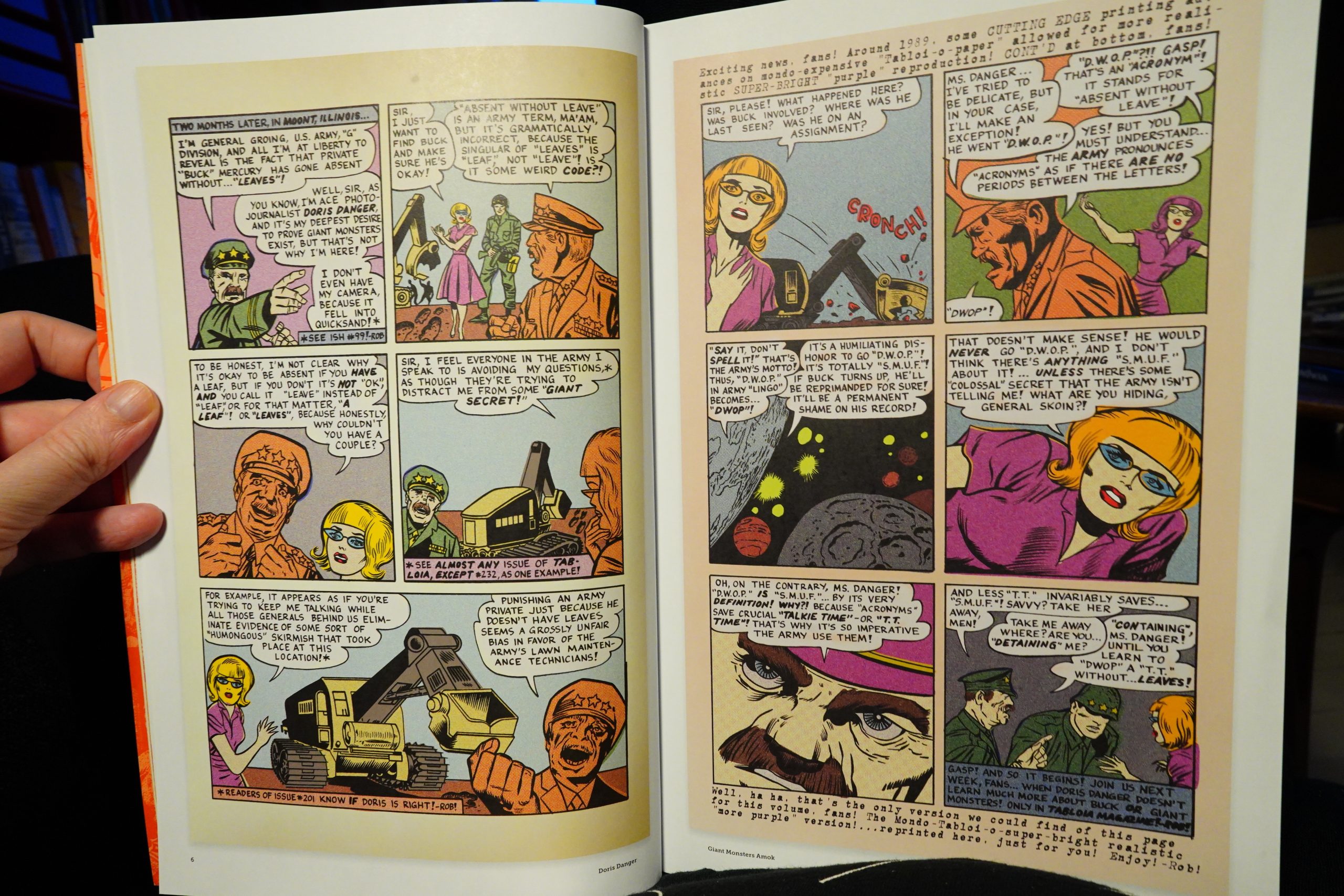
Hm… doesn’t really seem like it. Instead it’s new artwork very much swiped from old Kirby comics?
It’s hilarious.
| The The: Soul Mining | 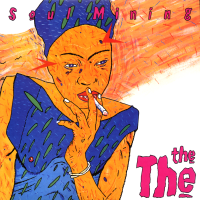 |
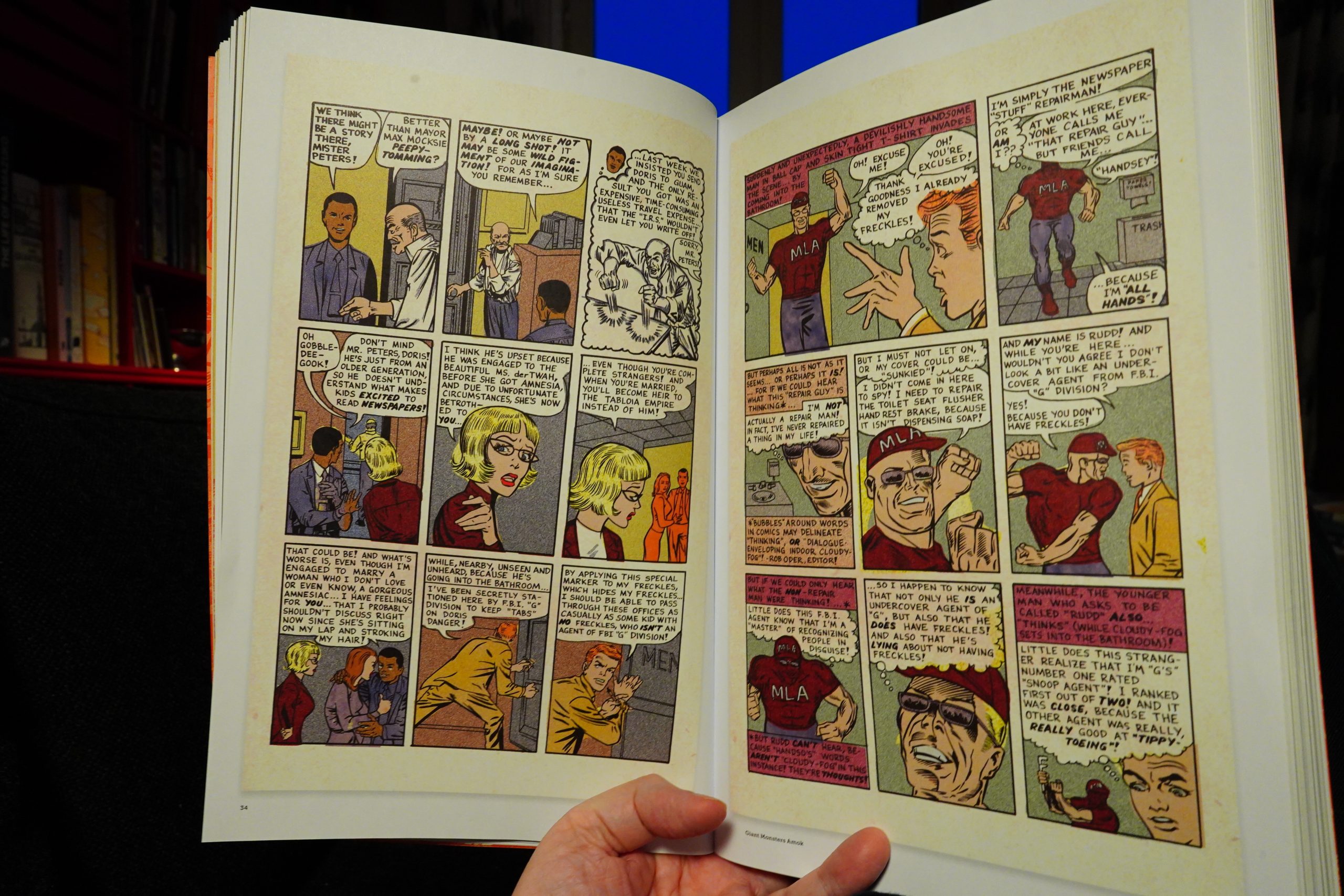
And Ditko, too.
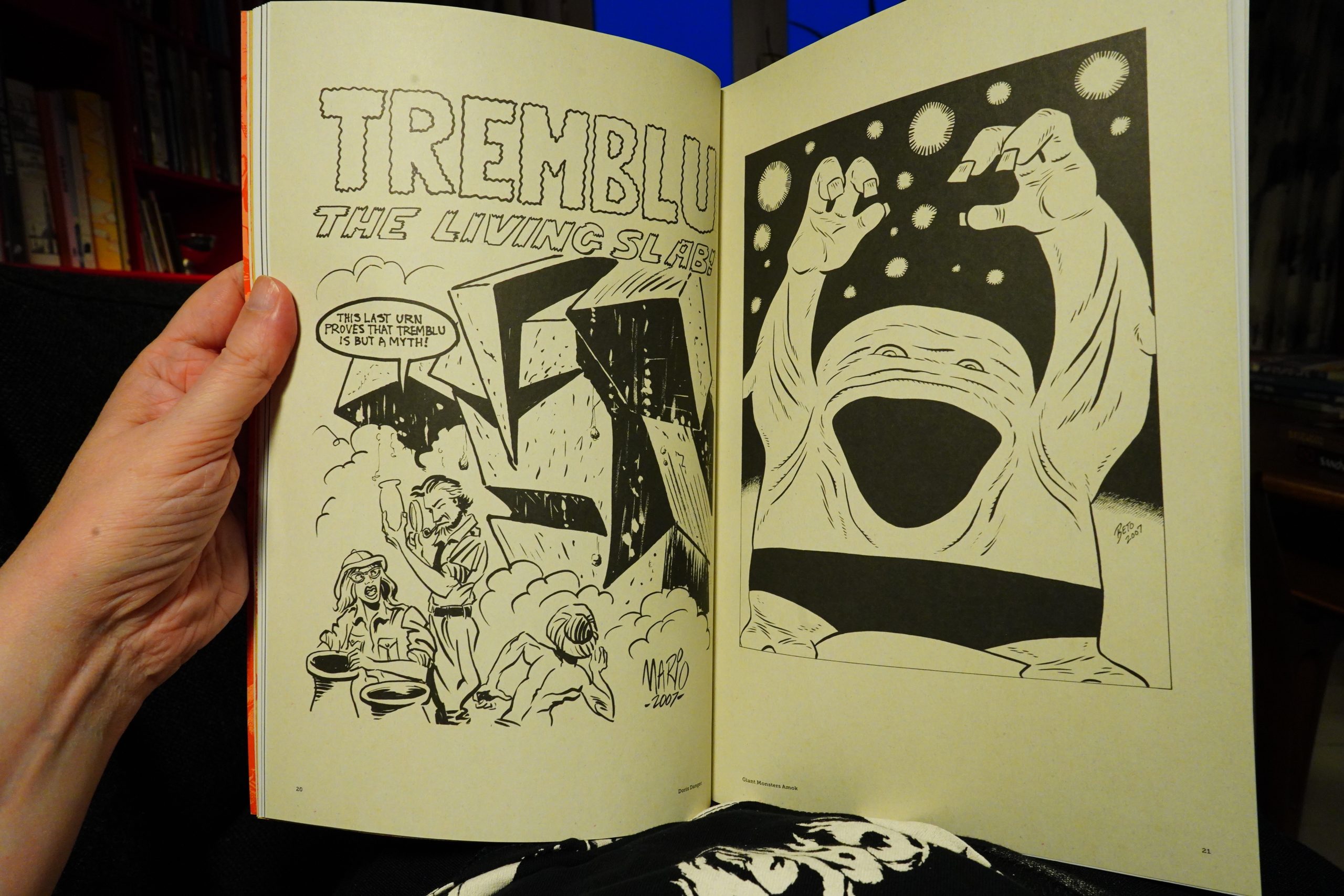
Guest pin-ups.
Anyway, this book is over 200 pages, and it’s so dense — I love it, but it’s exhausting to read. So I’m going to take a pause, 70 pages in. It’s one of those books that aren’t best read in one sitting, I think.
| FKA Twigs: Caprisongs | 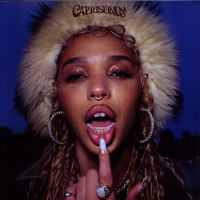 |
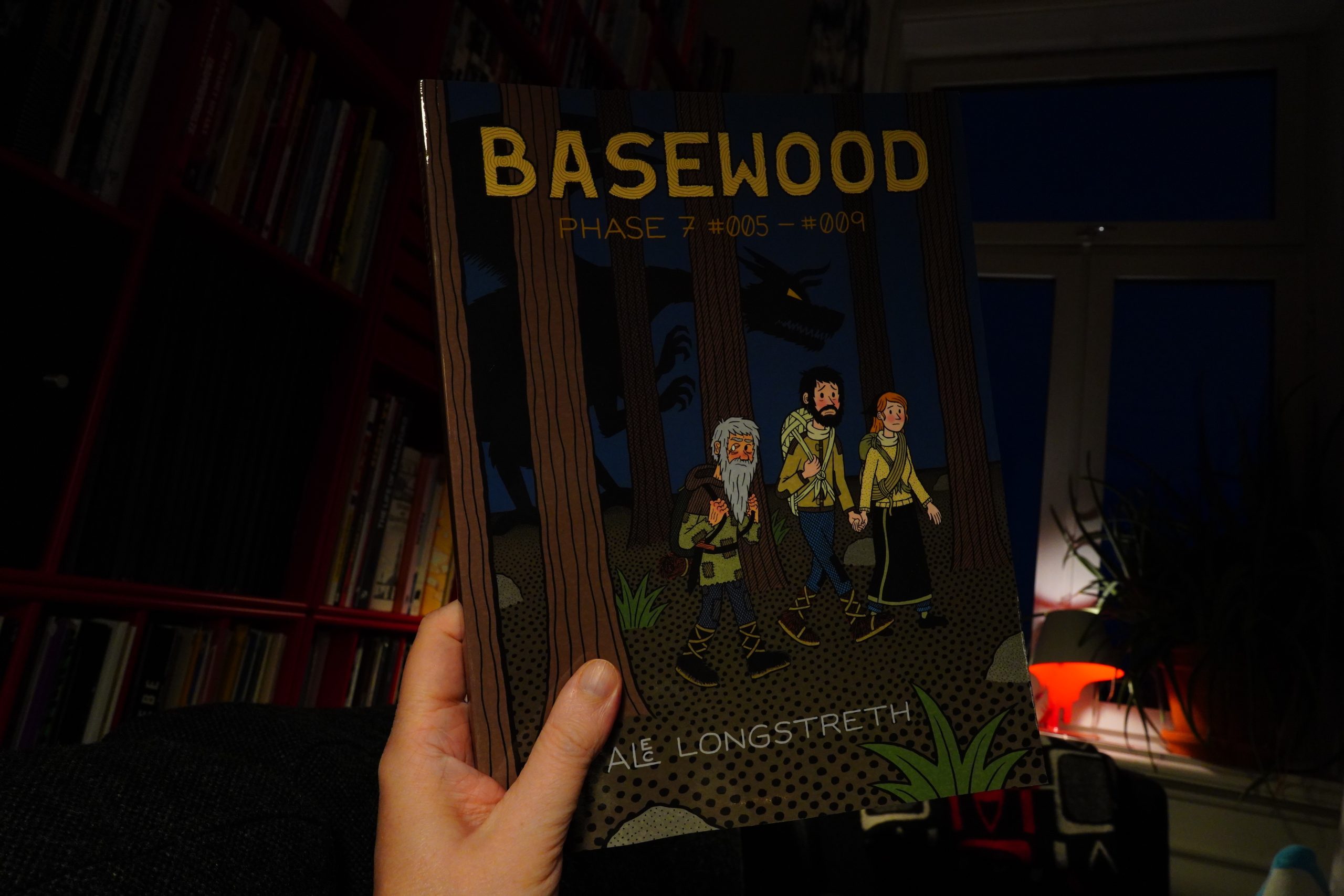
00:40: Basewood by Alec Longstreth
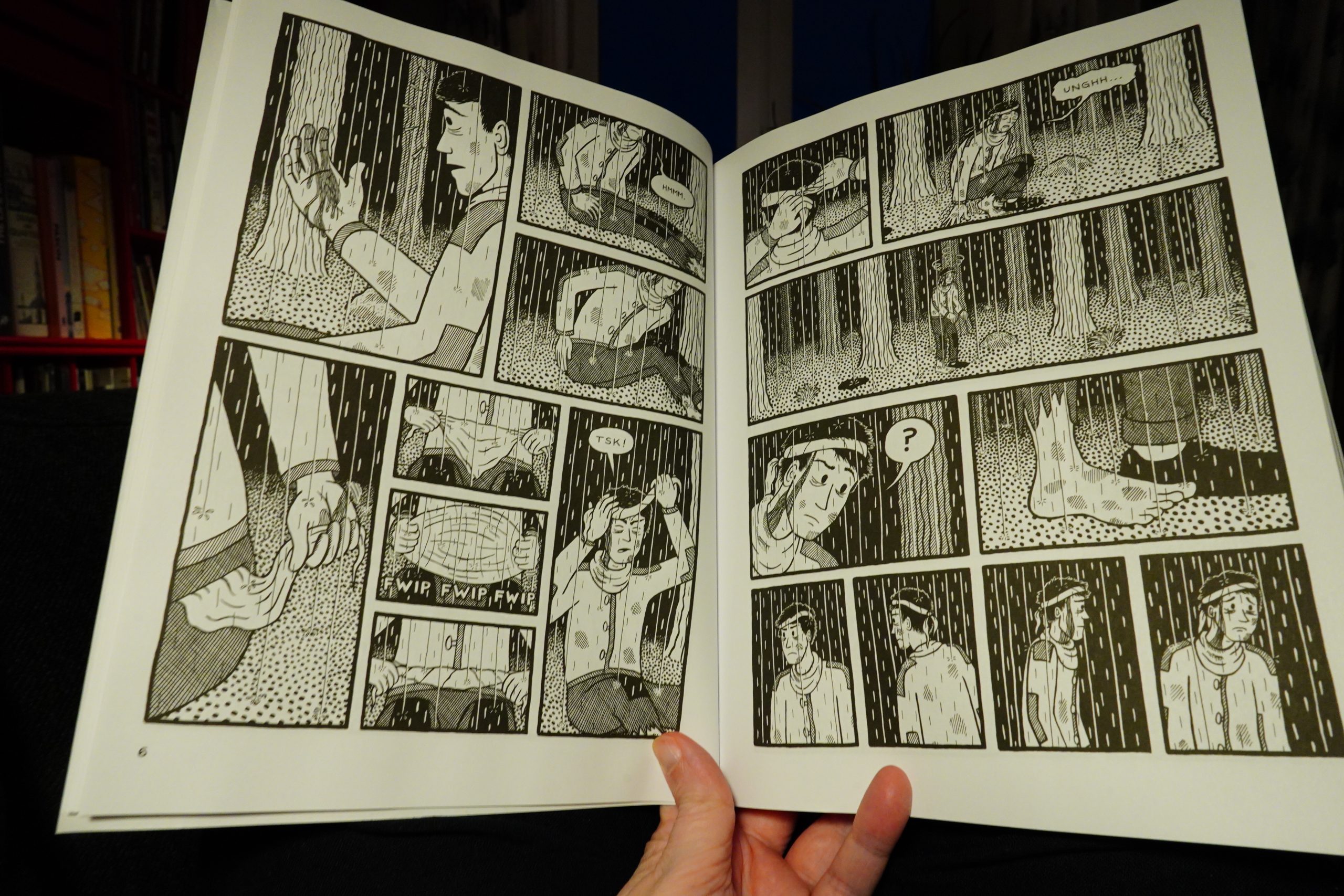
I really enjoyed the first two thirds of this… the artwork is attractive and the storyline is properly mysterious.
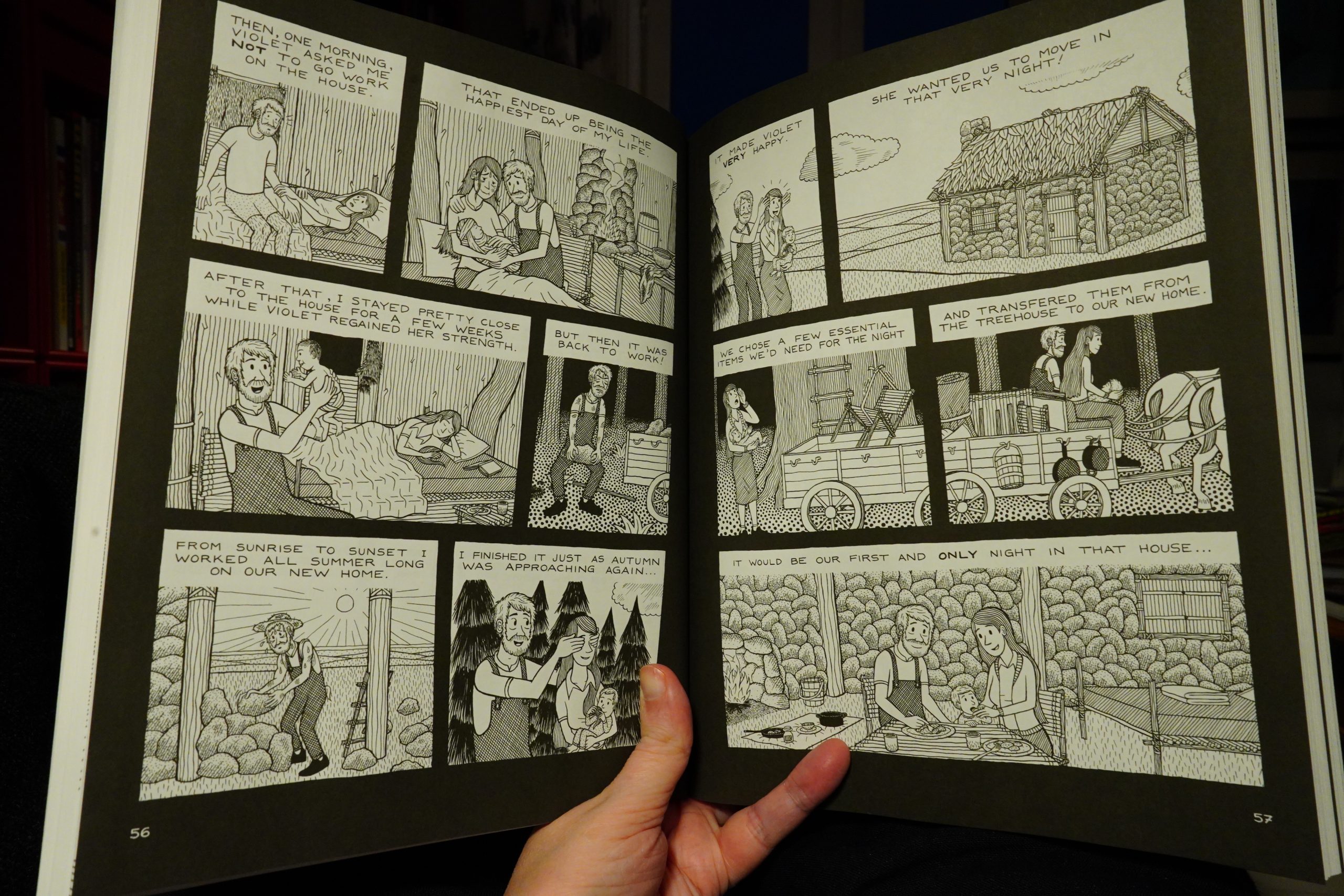
Is that the recommended way to build a stone house? Just pile some roundish rocks on top of each other?
| Marc Ribot & Rootless Cosmopolitans: Requiem For What’s-His-Name | 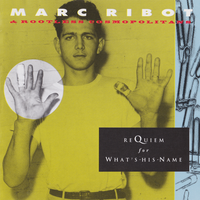 |
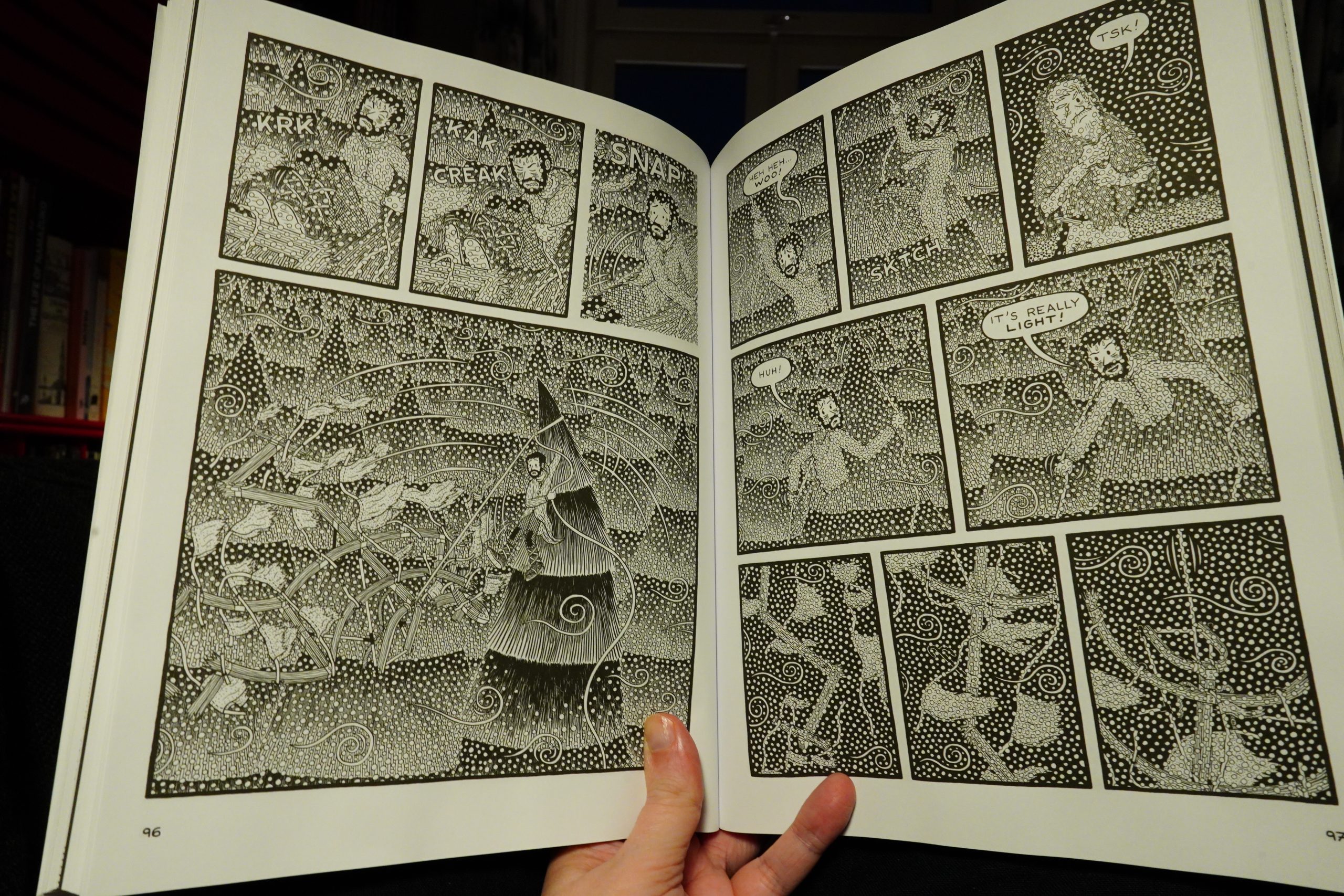
Nice snow!
Unfortunately, the last third (where we get an explanation for what’s going on) kinda drags. It seems like we’re spending way too much time on something that could just be explained on a couple of pages. And the end of the story isn’t very gripping, either.
Still, it’s a pretty good read.
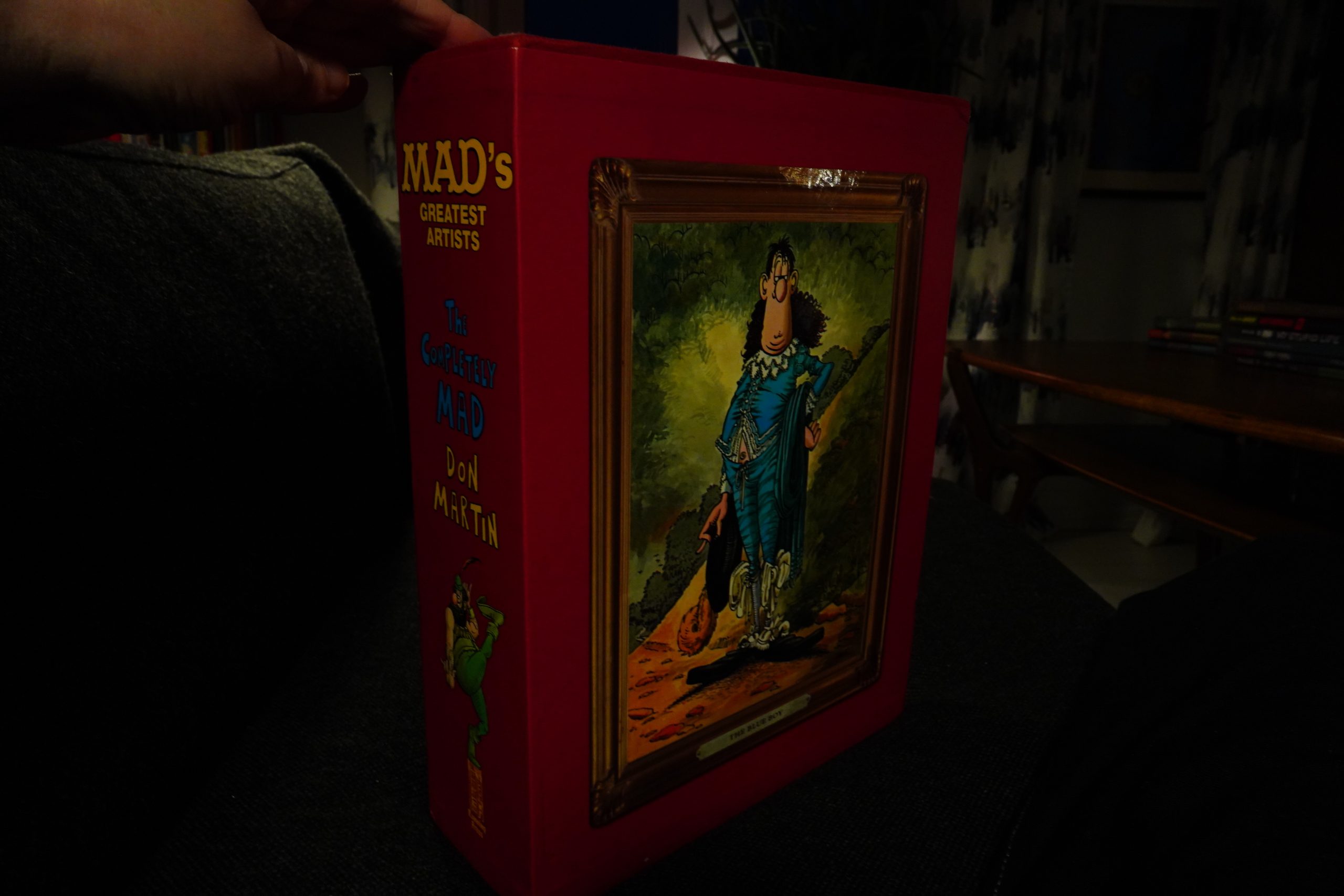
01:28: The Completely Mad Don Martin by Don Martin (Running Press)
Unusually for me, I stopped in the middle of two of the comics I was reading tonight (it’s been an unusually dense selection of books, for some reason), but if I’ve done two, why not a third? That’s logic for you.
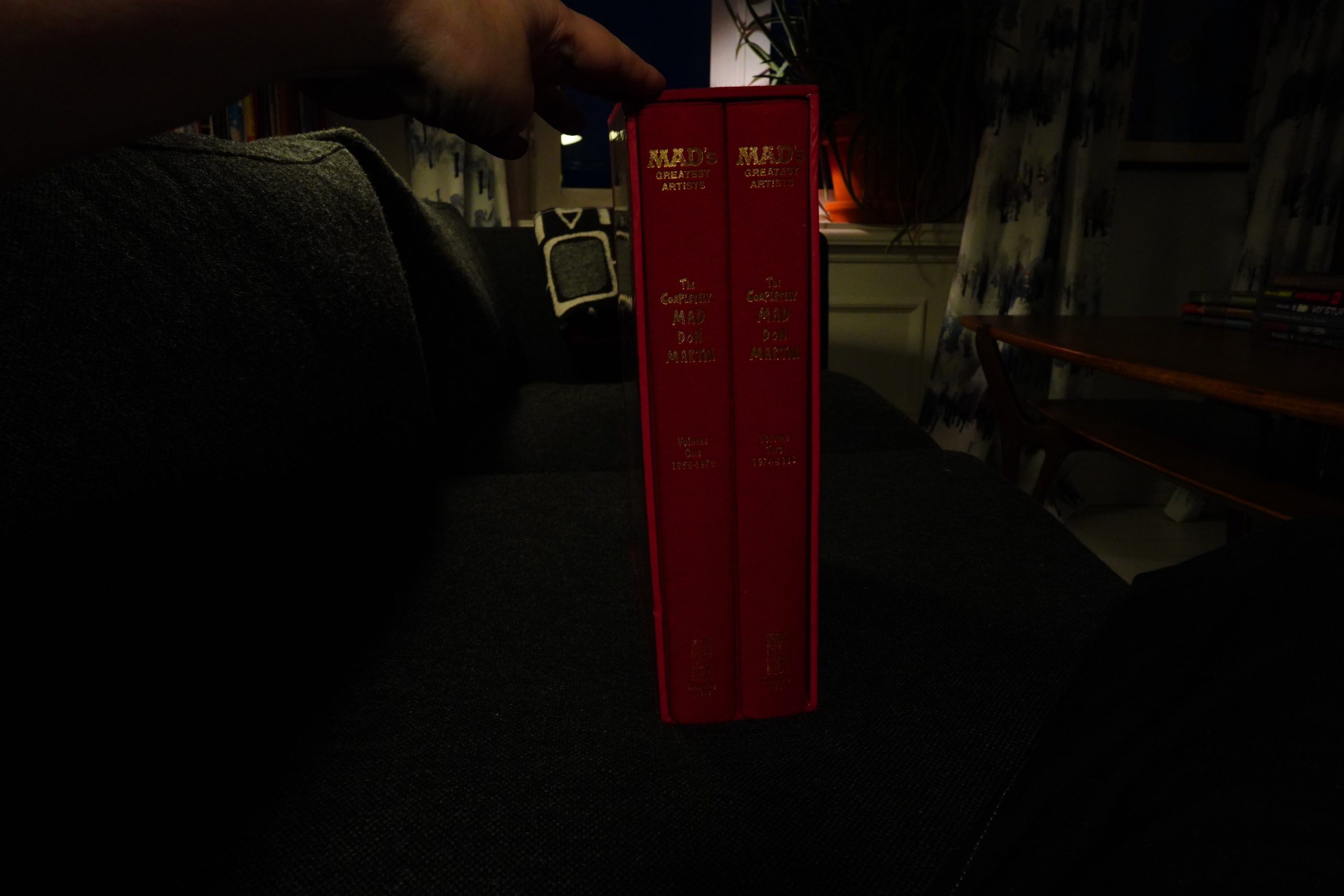
I bought this box set at least a three years ago, and I’ve never even taken the books out of the box. That’s something that happens a lot when I buy box sets: They disappear onto a shelf and I keep telling myself “one day I’ll have several weeks worth of free time”, but that never happens.
So perhaps I should just get started and take it slowly, because I think reading 1200 Don Martin pages is going to take a while.
And this box set is about eight kilos, and it’s just two volumes, so it’s just a physical challenge to read these books, too.
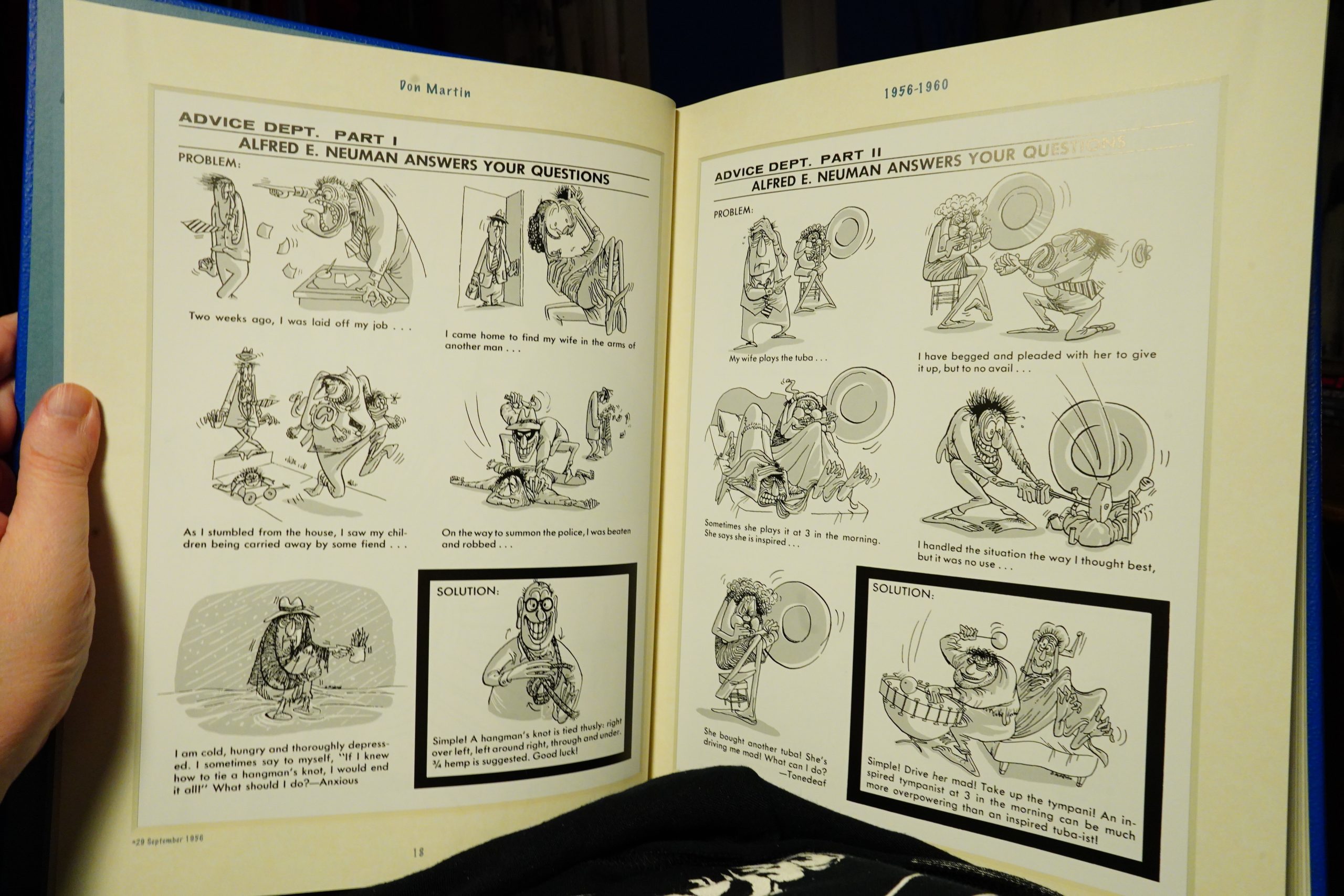
Nice! Futura!
Hm… well, I’m not sure I think this is an ideal format for Don Martin. It’s printed on shiny, heavy paper, and with these huge cream-coloured borders. Does that bring anything to the reading experience beyond giving my arms a workout?
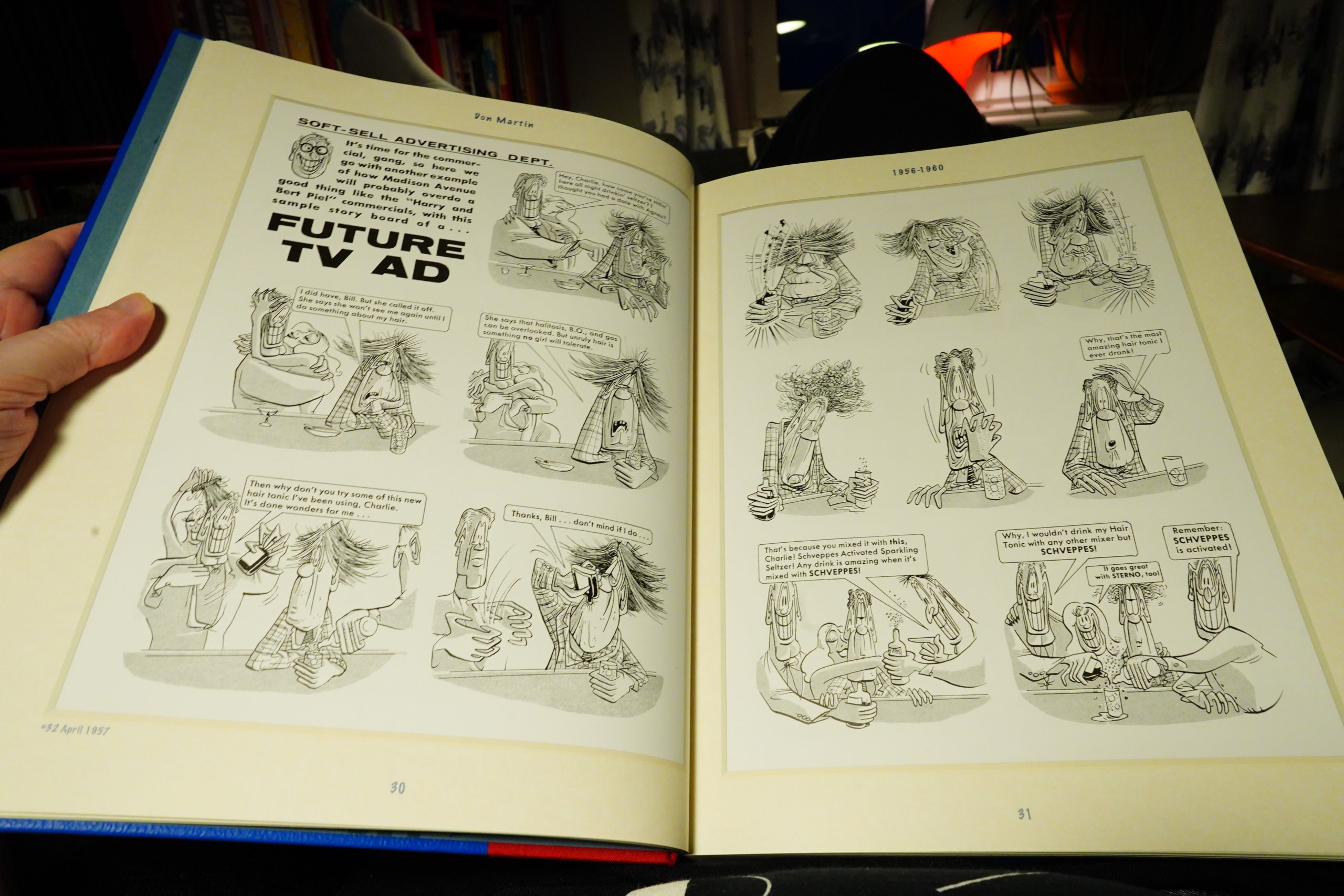
The reproduction is good, though, and it’s presented in (apparently) strictly chronological order, which I like. (Some editors would be tempted to arrange things in chapters by theme, and the would be really tedious to read.)
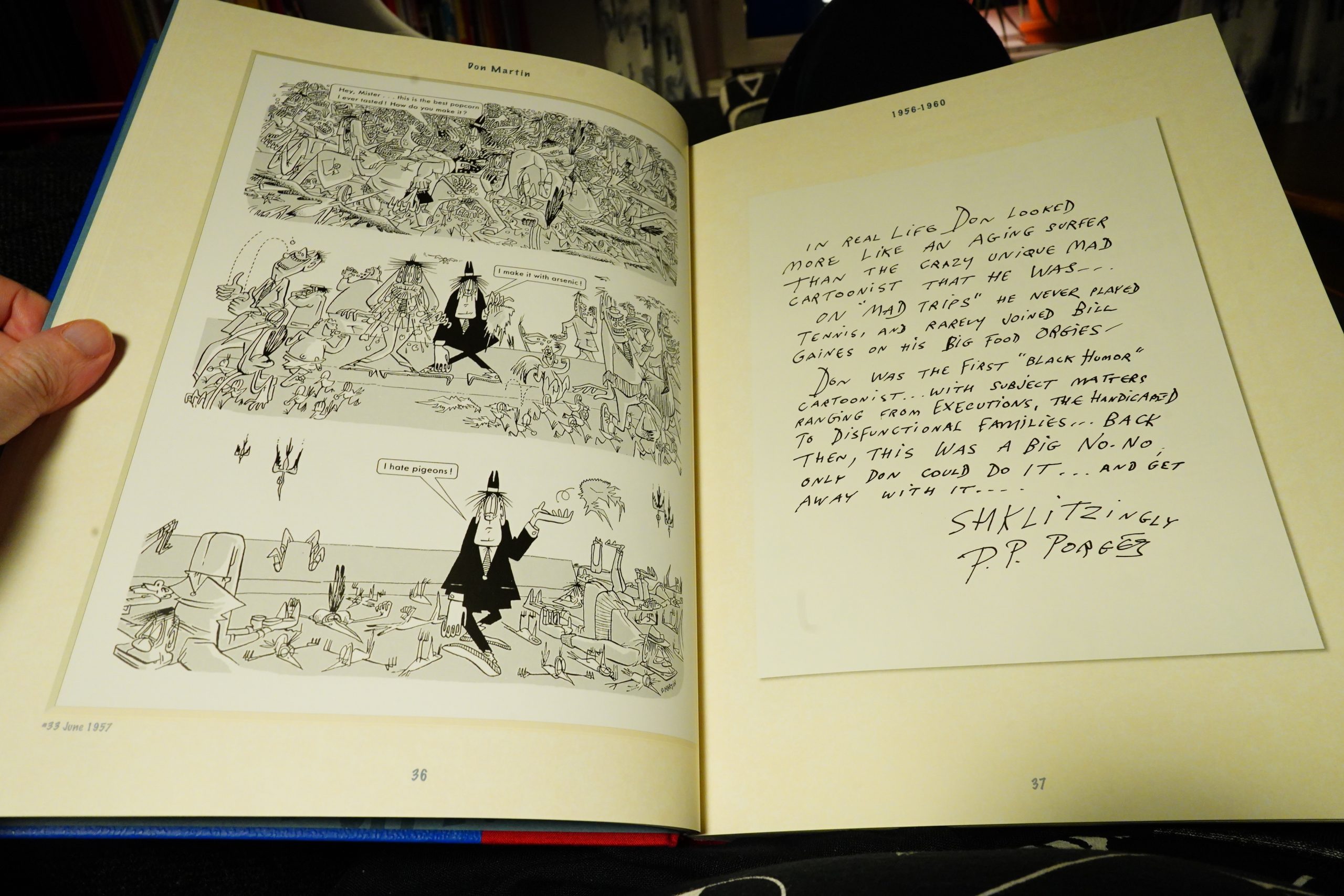
Then, at random, we get somebody talking about Don Martin? For one page? Well, sure.
I’ve read some of these pieces before (the pigeon one above has been reprinted many times, I think), but most of them are unfamiliar to me (so far). I mean, I’ve read a smattering of the Mad Magazines from the 50s, but…
And these books only include stuff that ran in Mad Magazine proper, I guess? So we don’t get the stuff from the pockets, like Captain Klutz… I mean, that makes sense — they’d have to reformat the pocket books, and that would suck. And these books are certainly heavy enough as they are.
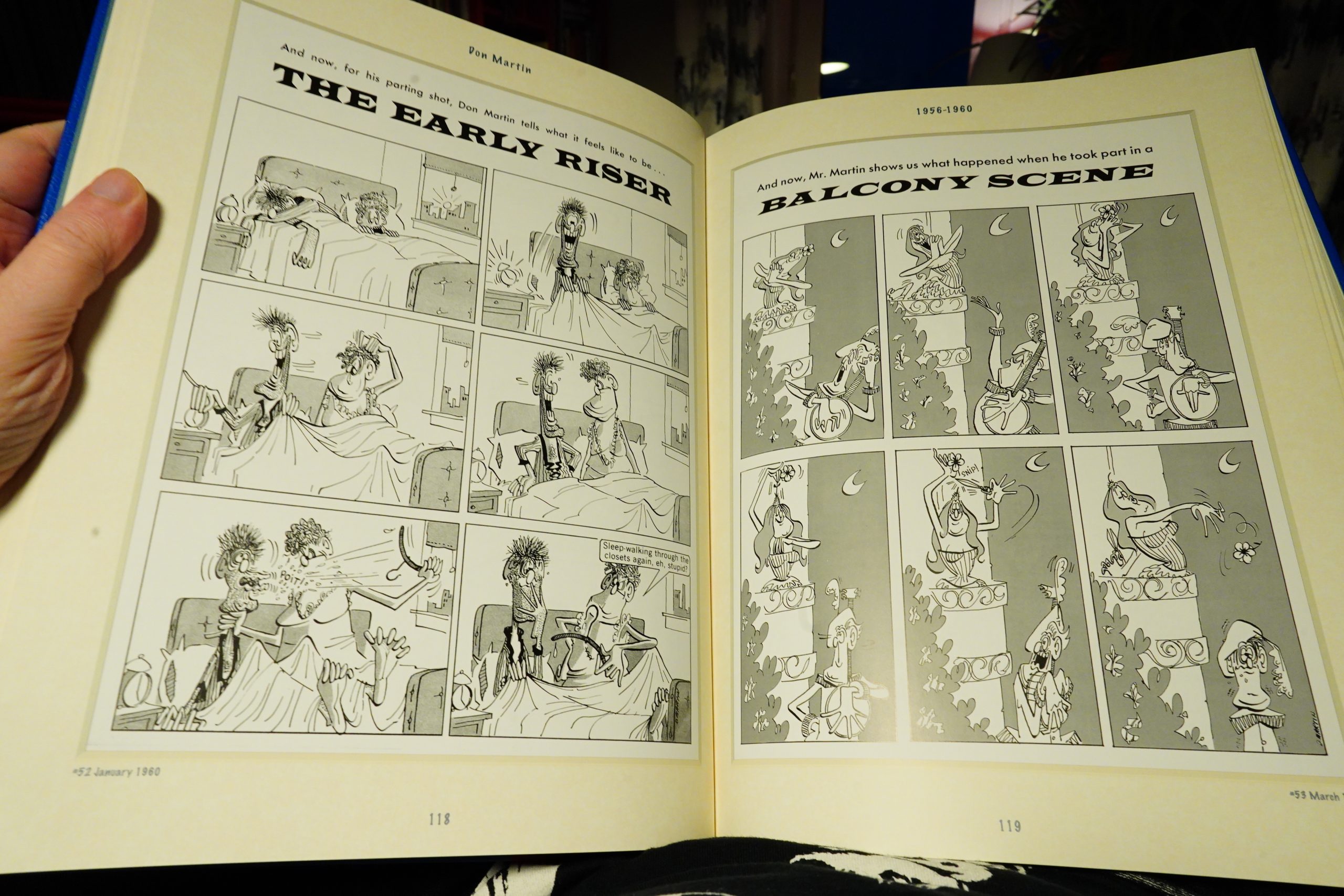
But I’m quibbling. This is 1200 pages of Don Martin. What’s not to like?
And again, I’m stopping reading here, and will probably finish off these sets over the next few months.
| Boris: fade | 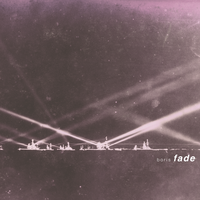 |
02:09: The End
Because now it’s time to sleep.
That was a very unusual selection of comics for me, I guess. Were there any, you know, art comics? *ponder* No, not really — just books really heavy on narrative. Oh well. I should mix these things up better…

